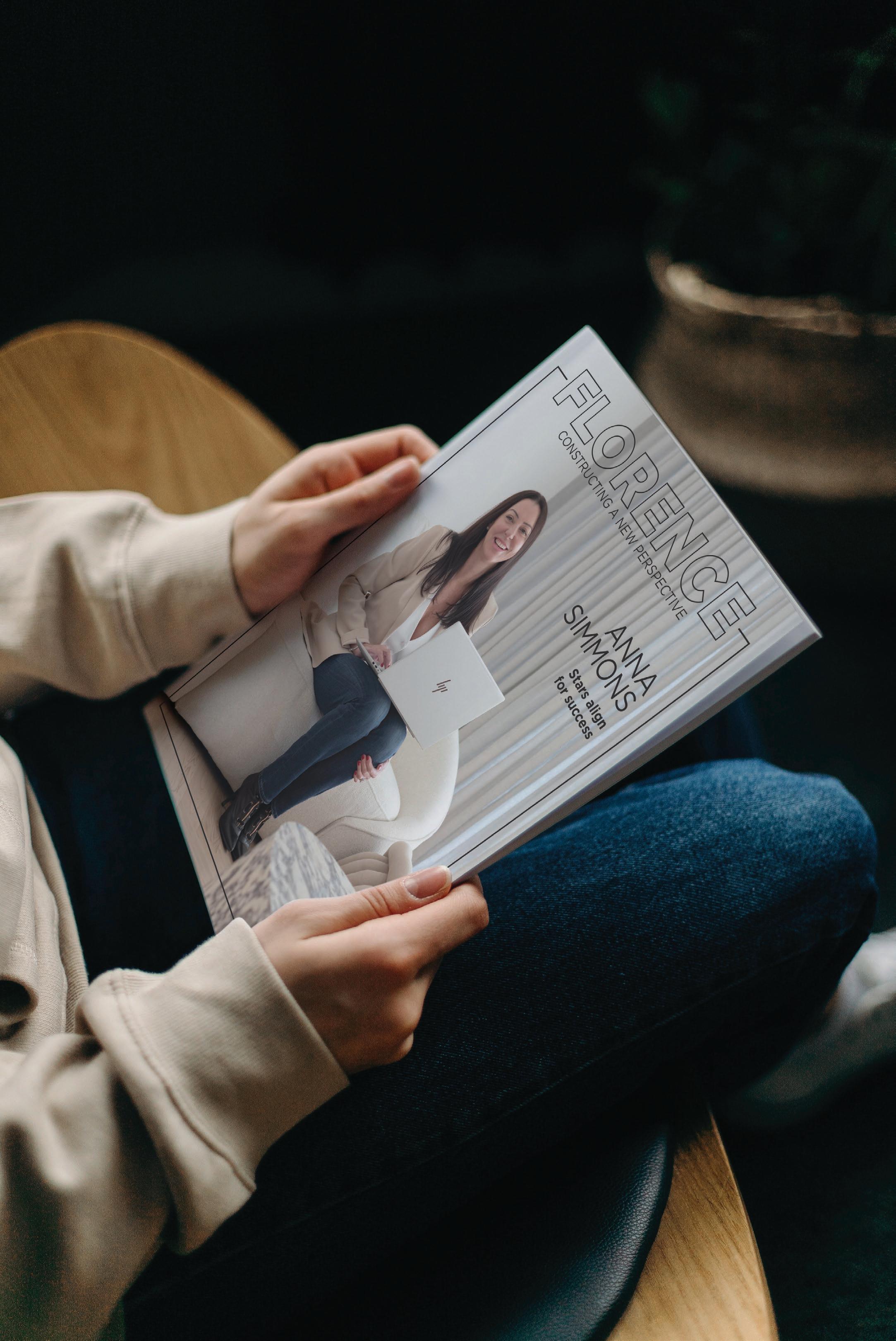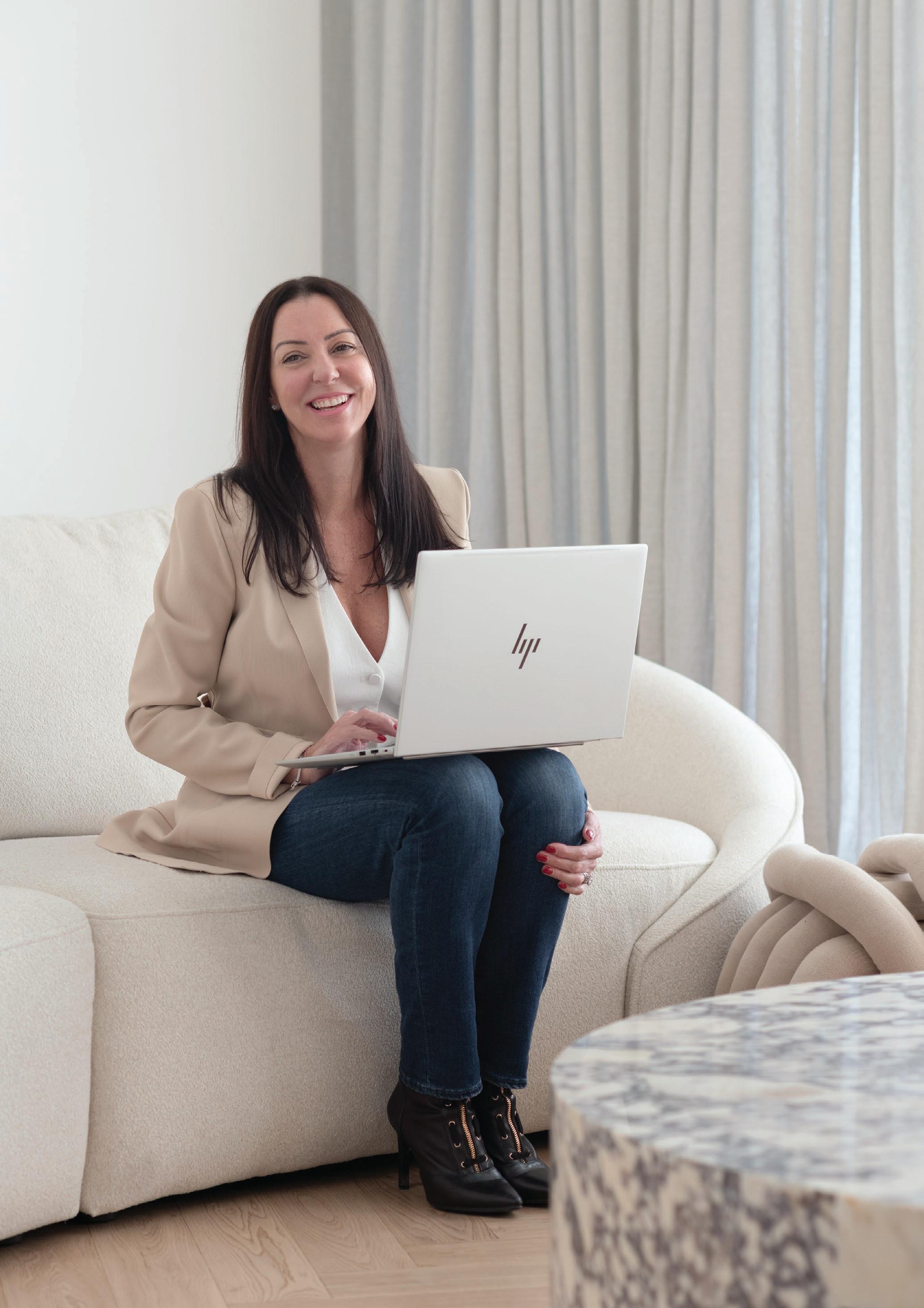

ANNA SIMMONS
Stars align for success
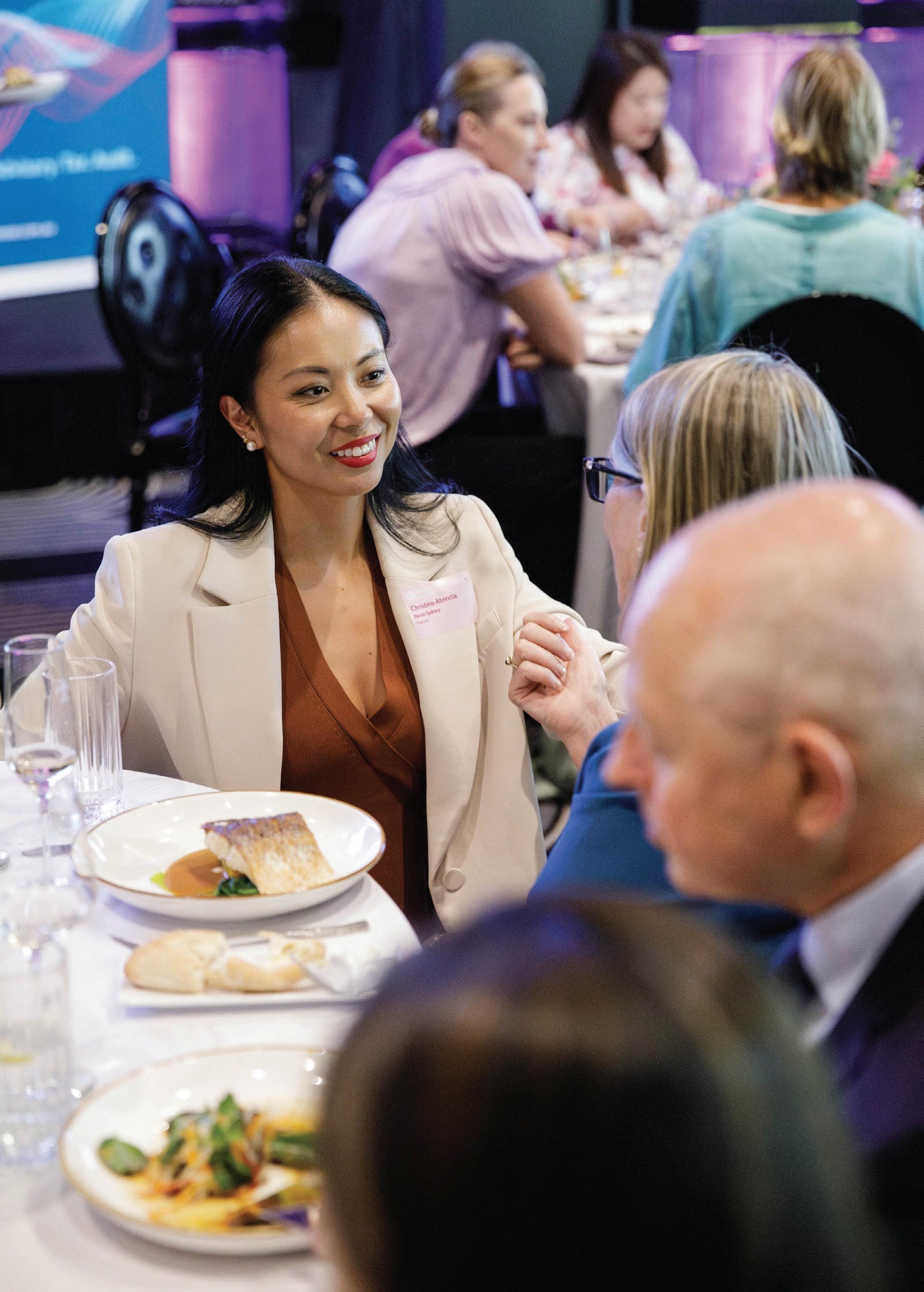
We are committed to promoting gender equity and remain focused on ensuring contributions are valued and rewarded equally.
Nexia Australia is a full-service accounting and advisory firm supported by global links to Nexia International. Located in the heart of Sydney’s CBD, Nexia Sydney provides tailored solutions to a range of clients including small to medium enterprises, large private company groups, not-for-profit entities, publicly listed companies and high net worth individuals. With over 30 sector and service specialties, including real estate and construction, we are equipped to support the unique needs of every client.
Our experienced partners and team are always within reach, ensuring a personal, one-onone approach to client service. But beyond technical expertise, we are guided by a deeper purpose: to help people and enable them to grow and become successful.
At Nexia Sydney, we believe that embracing diversity, equity, and inclusion are not just moral imperatives, but essential drivers of innovation and success. Our workplace reflects this commitment, with a 50/50 split of male and female employees. While we celebrate this balance, we are also focused on increasing female representation at the Partner level, ensuring that women have equal opportunities to lead and shape the future of our firm. Our female leaders are passionate about women’s financial empowerment and the transformative power of financial literacy and independence. They are dedicated to equipping women with the knowledge, personalised guidance and tools needed to navigate the world of finance, empowering them to make informed decisions with confidence.
We are proud of our progress in aligning gender pay equity across different roles at Nexia, reflecting steady progress in fair pay practices throughout career stages. Our firm’s overall gender pay gap for 2023-2024 was 10.8% favouring male employees – well below the National gender pay gap of 21.7% and below the Accounting profession result from last year of 16.2% in favour of males (Workplace Gender Equality Agency, 2023-24). This gap can be attributed to the uneven distribution of men and women at different levels, even though wages at each level are close to parity.
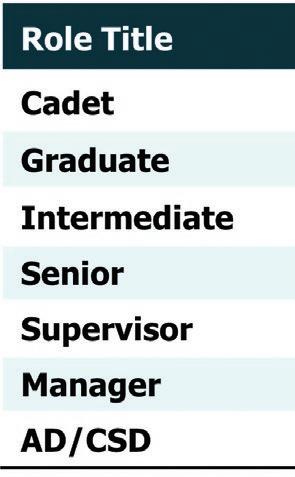
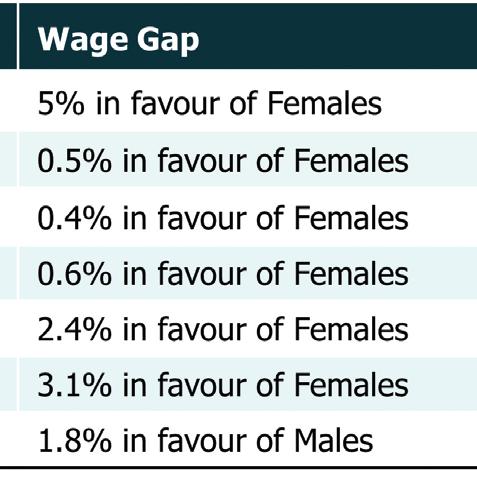
Looking ahead, our goal remains clear: to foster a culture where everyone feels valued, respected, and empowered to reach their full potential –delivering better outcomes for our clients, our people and broader community.

nsw.nexia.com.au
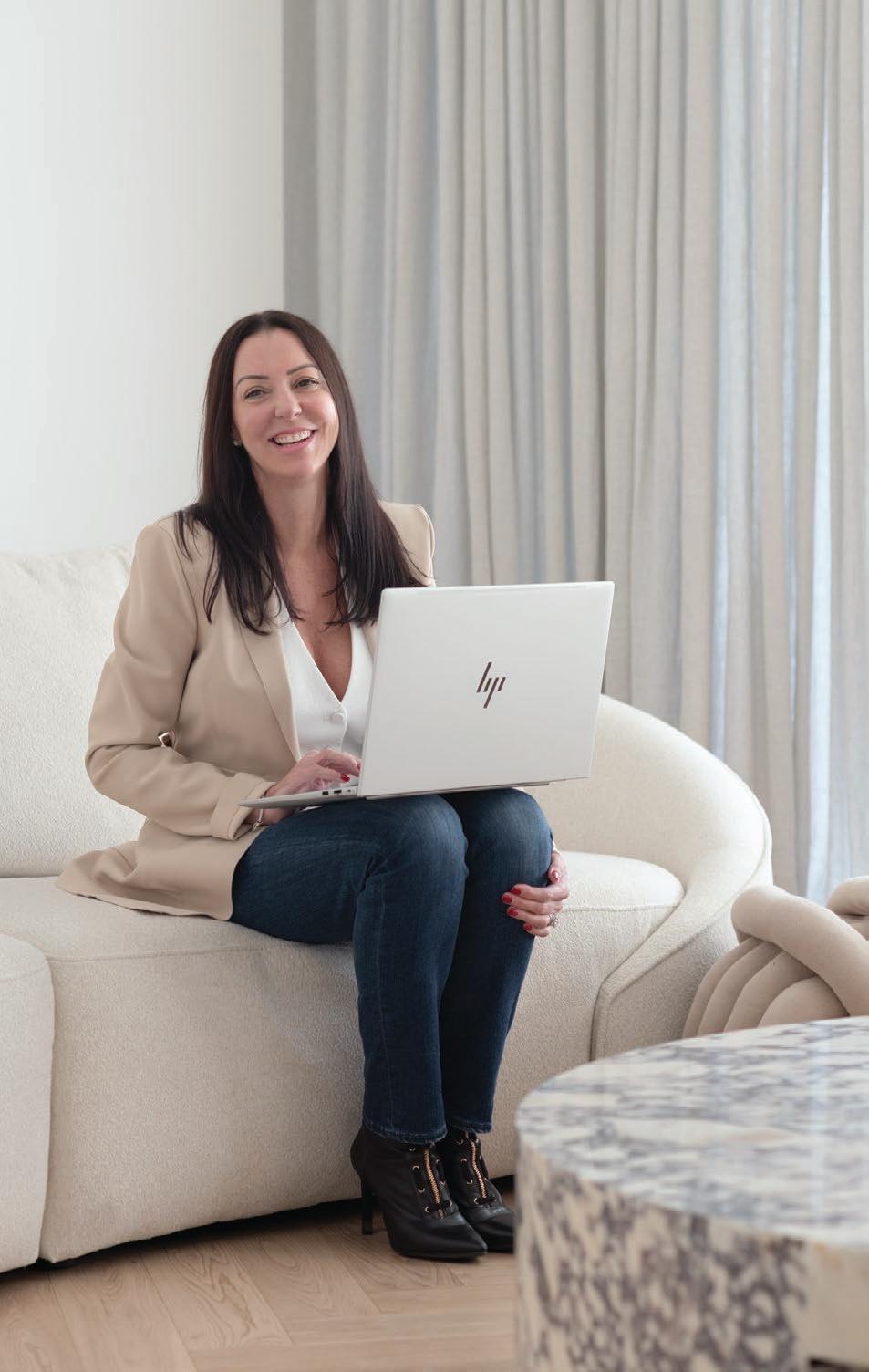


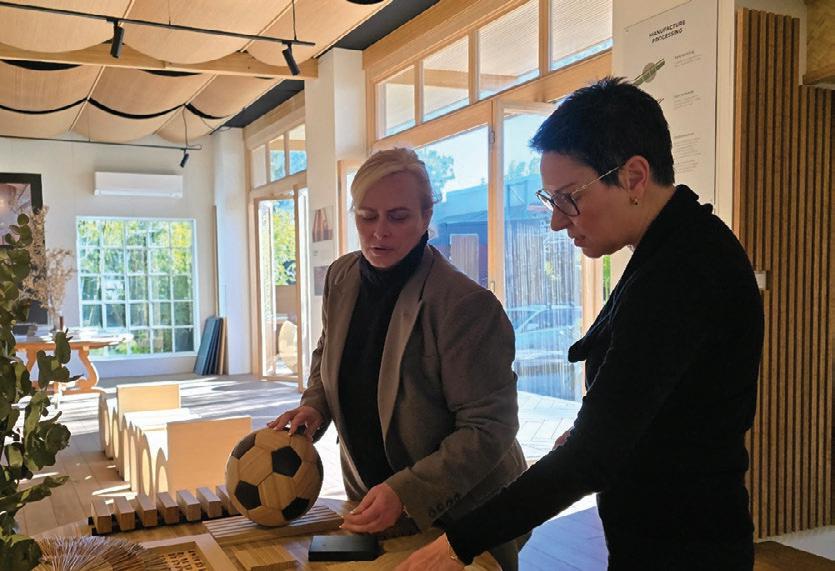
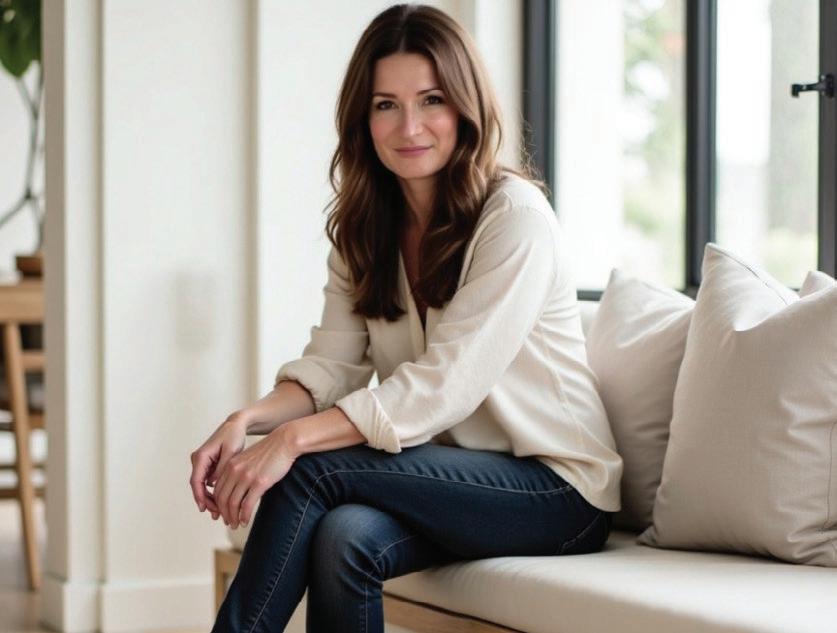
CONTACTS
Editor: Alyssa Welke
Editorial Coordinator: Amanda Kelly
Custom Publishing Manager: Kyal Osborne 07 4659 1444 | 0438 425 669
Advertising enquiries: Roger O’Brien 07 4659 1444 | 0419 707 450 roger@greenridgepress.com.au
Designed & Printed by: Greenridge Group, 4 Freighter Avenue, Toowoomba QLD 4350
Greenridge Group is the exclusive Publishing Partner of Florence magazine, in conjunction with the Master Builders Association of New South Wales.
ABN: 97 056 269 713. Ph: (07) 4659 1444
Website: www.greenridgegroup.com.au
This publication is copyright. No part of it may be reproduced, stored in a retrieval system or transmitted in any form or by any means including electronic, mechanical, microcopying, photocopying, recording or otherwise without the permission of Master Builders Association of NSW or Greenridge Group.
Disclaimer: The information contained within Florence magazine is given in good faith and obtained from sources believed to be accurate. The views expressed are not necessarily those of the publisher. Greenridge Group and the Master Builders Association of New South Wales will not be held liable for any opinion or advice contained herein.
BE PART OF THE TEAM
We often hear the idiom “teamwork makes the dream work”, be it at home, at work, in sports.
While it can be easy to dismiss this idiom, it is so popular because it comes from truth and women encouraging and stepping up to lead only helps more women see building and construction as a viable career path for them.
Our cover story with Anna Simmonds (p 8) talks about how her husband Rick, his business partner Scott Somerville, and Anna have worked as a team to build success in their business One Up Building over the past 20+ years.
And a team can come in many different forms — for sisters Kira and Jenna Yakoubi, teamwork began at a young age and has continued through their separate trades careers (p 18), inspiring each other and providing a friendly ear when they need it; and for Jennifer Snyders (p 26) and Annie Scog (p 34) being a leader and mentor in their industry.
Jennifer Snyders stands as a beacon of innovation and sustainability in Australia’s architectural landscape and is committed to furthering the use of eco-friendly material and practices in the building industry; Annie Scog is also dedicated to health-conscious design. As a building biologist, she is devoted to building health, through material selection and design, for everyone’s benefit. Her devotion has included the development of a training program to help more people understand the benefits of health-focused design.
Teamwork can be businesses actively encouraging more women to join their teams, such as ADCO — through a range of programs, they have dramatically increased the number of women employed in their business including on their Fremantle Hospital Mental Health Project. We talk to a number of women working on this project (p 44).
With every woman who steps on to the worksite, she inspires more women, who will inspire more, and it will only continue to multiply and increase female participation in the building and construction industry.
Best wishes,

EDITORS NOTE Alyssa



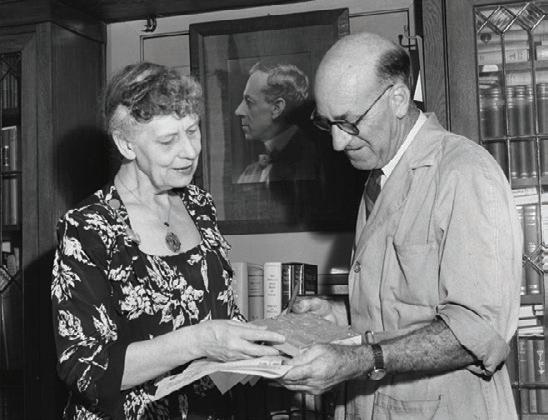
Grand Dame builds legacy
Florence Taylor paved the way for women in construction
Florence Taylor was a pioneer of women in the construction industry and her legacy is still being felt.
As an architect and publisher, Florence believed in the notion that “a woman to marry, get into the confines of the home and never be articulate in public affairs is a disgrace” and her achievements in the male-dominated architectural industry proves that.
She was known for her energy, determination and outspoken nature, a nature which distinguished her well throughout her colourful career, first as a draftsman and ultimately as a publisher of trade journals.
She was widely respected, even if her questions and criticisms irritated some of her professional colleagues.
Her achievements within both of her fields had an indelible impact on the public acceptance of women in the professions.
She was a tall, striking woman and blue eyes, and was known for dressing (even in the 1930s) in long sweeping skirts and a picture hat decorated with ostrich feathers.
She was born on December 29, 1879, at Bedminster, Somerset, England, and was the eldest daughter of John and Eliza Parsons.
The family immigrated to Australia in 1884, and her father worked in the sewerage construction branch of the Department of Public Works. This gave Florence her first taste of the construction industry, as she assisted her father with his engineering calculations.
It was her father’s death in 1899 that pushed Florence into the architectural industry when she became a draftsman to support her family.
She learned her trade under architect Edmund Skelton Garton, and simultaneously attendee night classes at Sydney Technical
College unit 1904; during her time with Garton’s office she was promoted to chief draftsman.
Once she completed her training she became chief draftsman to J.B. Clamp, who nominated her in 1907 for associate membership of the Architects of New South Wales. Despite his defence of her talent (she “could design a place while an ordinary draftsman would be sharpening his pencil””, the nomination was defeated.
But this did nothing to deter Florence from thriving in the practice of designing homes; it wasn’t until 1920 that Florence was invited to join the Institute of Architects, which she accepted.
On April 3, 1907, Florence married George Augustine Taylor. Florence and her husband were founding members of the Town Planning Association of New South Wales in 1913, and she was its secretary for many years.
Together they started the Building Publishing Co. Ltd, which produced trade journals, three of which Florence edited: Harmony, Young Australia and the Australian (later Commonwealth) Home.
Through their journals they campaigned for urban planning, improved construction methods and better materials; they also promoted the interests of engineers, architects, and builders.
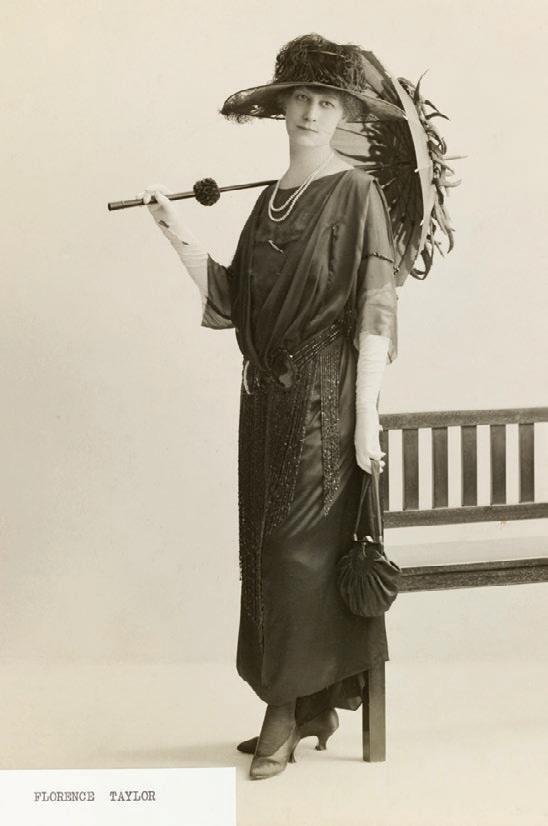
When George died suddenly in 1928, Florence was determined to carry on their business and although eight of the 11 journals they published were forced to cease, she maintained Building (later Building, Lighting and Engineering) (1907-72), Construction (1908-74) and the Australasian Engineer (1915-73) and edited them herself.
She continued to produce town planning schemes but relied on other so draw them as she was unable to spare time from publishing.
Photo Credit: Mitchell Library, State Library of New South Wales and Courtesy ACP Magazines Ltd.

BACK YOURSELF TO ACHIEVE
AMANDA KELLY, AWARDS AND EVENTS MANAGER, MASTER BUILDERS ASSOCIATION OF NSW
In a world that is finally beginning to recognise the strengths and skills that women bring to the building and construction industry; one truth remains constant: no one will ever advocate for you more fiercely than yourself.
Does it start with trusting our instincts? That gut feeling that tells us to speak up, apply for that role and to take the leap.
Investing in ourselves, whether through learning, mentorship, leadership opportunities or even just taking time to reflect and grow, is not a selfish act, it’s a commitment to our future.
In our cover story, Anna Simmons sums it up perfectly when she says business owners need to keep trying and working to build their business and keep learning to achieve success.
Her advice is to stick with it and educate yourself with as much knowledge as you can — through reading, watching videos, attending courses, finding mentors. But this advice doesn’t just apply to business owners, by also to anyone chasing a dream.
She also advises to be grateful for experiences to help you grow.
She said: “If everything came easy to you, you would not appreciate it. Work hard as you will
receive the rewards. Be kind.”
This is a sentiment that is common across many of the women we spotlight in this edition.
ADCO apprentice site supervisor Emma Fensom also backed herself so she could grow in her career.
As a plumbing apprentice, she wanted to become more well-rounded in her career.
By joining the ADCO apprenticeship program, she can not only finish her trade apprenticeship, but she can also train to be a site supervisor at the same time.
As a young woman in the industry, she said networking and connecting with women further along in their careers was invaluable and remembering to not be afraid of “failure”.
“Every attempt is a part of your journey, and you will always learn something from each experience,” she said.
This edition of FLORENCE celebrates the women who have chosen to bet on themselves.
Their stories remind us that success doesn’t come from waiting for permission, but from having the courage to create your own path.
STARS ALIGN FOR SUCCESS
Family and balance at heart of business

Anna Simmons
ALYSSA WELKE
Working as a husband and wife team in their Sutherland Shire-based family business is not for the faint of heart, but for Anna Simmons, and her husband Rick, they wouldn’t have it any other way.
Rick and his business partner Scott Somerville started their business One Up Building on May 25, 2002, a date that will forever be etched in history for Anna — it happened to be the date she first met Rick.
“I remember because that was the day he was celebrating going into business with Scott,” Anna said.
“We met at Club Menai of all places. I was there with my mum having a drink, waiting for the music to start and he walked into the room with his family, his business partner Scott, Scott’s family and some of their friends.

“His mum asked to share our table and introduced herself to us. She introduced me to her son Rick… who is now my husband!
“His mum basically pushed us to dance to the music. Rick was doing dance lessons at the time, and I had just bought a pair of boots that I could barely walk in. Everyone watched us on the dance floor as Rick was spinning me around with his fancy dance moves.
“Once we sat down his parents and my mum decided they were tired and left us. Scott and his family left too. We stayed a little longer and he walked me home.
“He was very handsome, sweet and funny. He asked for my phone number with a Keno pencil and paper, and I said, ‘oh, don’t you have a mobile phone?’ His answer was: ‘I think it’s rude to take a phone to dinner’ which I thought was sweet.
“He called me the next day and asked me out for coffee and the rest is history!
“We will be celebrating our 20-year wedding anniversary next February and I feel very lucky to have met him.”
Before Anna had her and Rick’s two sons, Max, 16 and Hugo, 15, she’s worked extensively in administration, and as an executive assistant in commercial property and architecture firms.
After finishing her school certificate and leaving school at the end of Year 10, Anna began a short secretary course at TAFE, but her drive to work saw her leave that early to begin her career.
Having grown up in the Eastern suburbs of Sydney, she was eager to work in the city.
“I was so eager to work in the city as a secretary/ personal assistant,” she said.
“I remember we used to type on the typewriter.
“I loved going into the city. It was so fun and exciting.
“I was an EA (executive assistant); I worked in commercial property and also for architects for years.
“I loved it, but once I fell pregnant, I wanted to be a hands-on mum, so I never went back to it. It was a hard decision at the time, but I just couldn’t leave the boys.
“They are only 18 months apart in age, so I was pregnant when Max was nine months old and I was in my late 30s, so I was very busy.
“I started working for Rick and Scott at One Up in the office on Hugo’s first birthday. It started at just one day a week and then over the years it turned to two days and now it’s three days a week.”
Anna relishes her ability to balance work and time with their sons, whom she and Rick adore.

She recalls growing up, her mum worked two jobs to make ends meet, which is why she loves the balance she has with her job.
It has enabled her to be very hands on with their sons as they have grown up.
“It enables me to take our boys to school, and I’ve always been able to attend school activities including canteen from kindergarten to year 6, school excursions, and be very hands on,” she said.
“Being a present mother and part of our children’s daily life is extremely important to me.
“I’m so lucky to have the flexibility and opportunity to balance the company work requirements around our family life.
The balance is not always there of course, especially when you go through the peaks and troughs of business, but we have measures in place with our accounting partners, directors and project managers to effectively navigate this.
“I work around the boys a lot so quite often I will work later in the day once I have picked them up
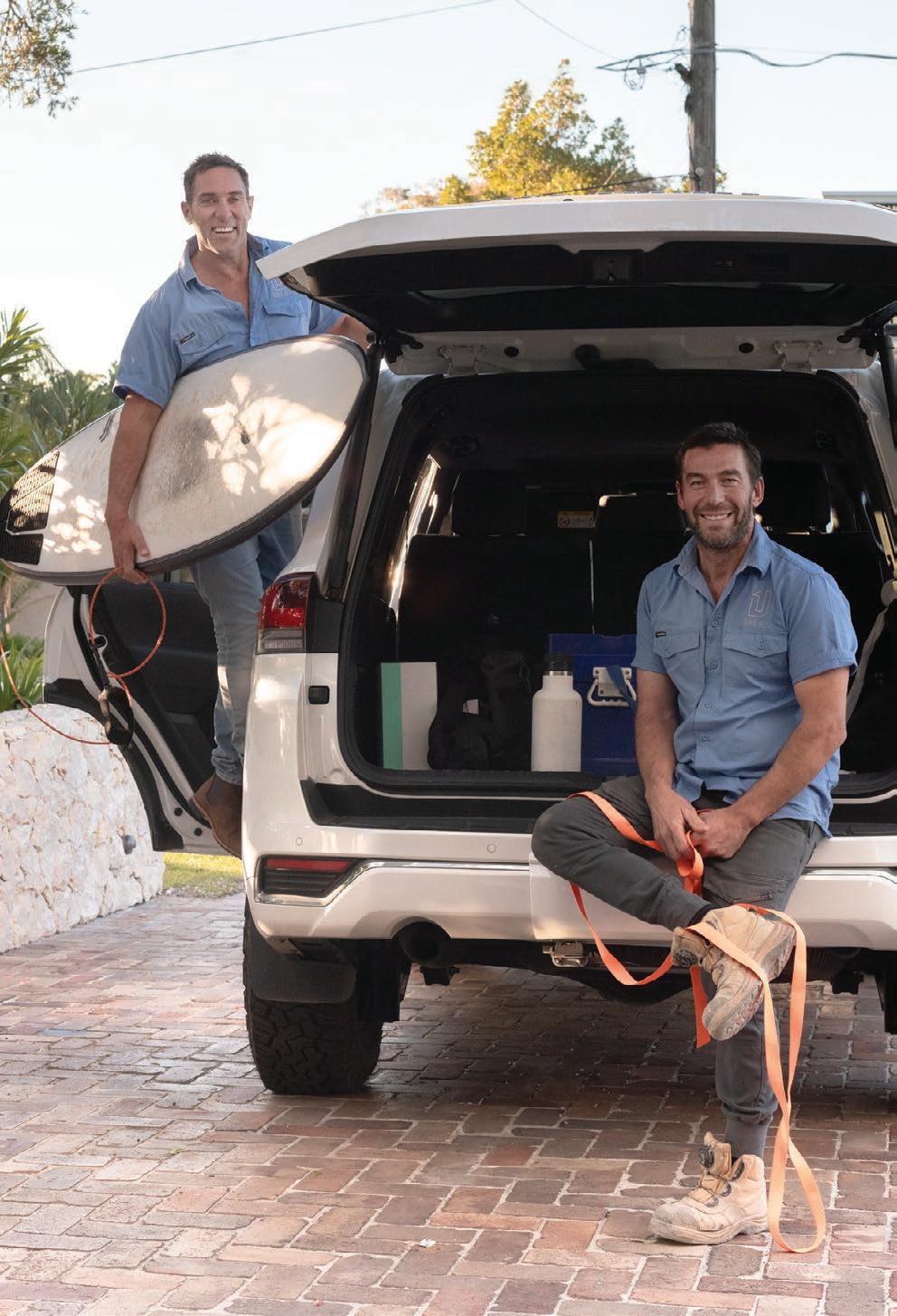
and fed them but that is what I wanted so it works for our family.”
But that’s not the only positive of working in the family business.
Anna’s role is to ensure all the accounting between sites activities is reconciled, queried, and verified. She shares a strong partnership with their company’s accounting firm to ensure all the back end of the business is taken care of, enabling Rick and Scott to lead the team effectively.
“My favourite thing I would say was watching these two young carpenters who had such a passion for building and had no idea really how to run a business, or win jobs, and to watch them grow as business partners, young men and best mates.
“It has been amazing. I love their friendship. They complement each other in business.
“The company has obviously grown, and it’s been so exciting to see Rick and Scott mature and take on these amazing homes. I have walked through the completed homes the guys have built, shared stories with the clients and spoken with the staff about the challenges of the projects and you can really see the passion in all the team — it’s infectious.
“I love this about Rick and Scott – they’re ambitious and they care.”
Both Rick and Scott undertook and completed their trade qualifications as carpenters straight from school and earned their titles as qualified builders with Diplomas of Construction.
Their passion, ambition and care has seen them both receive many accolades including multiple Master Builders Association of New South Wales awards including the coveted Young Builder of the Year Award in 2019.
And with the successes of the business, comes challenges, but with those challenges has come personal and professional growth, and maturity.
“Of course, it’s challenging on a daily basis — but you get better at managing it with experience. The company has grown organically over the last 20odd years and there have been plenty of learning curves along the way.
“I know I’ve been able to support both of them on the business journey, and it’s been great to watch the company evolve and mature.
“I think the fact that we all have a healthy relationship with one an another is a testament to how we conduct ourselves. It’s obviously a closeknit team and I think healthy communication and good relationships between all of us is the key to One Up’s success.”
As a team, they all bring different strengths that complement each other.
Rick’s strengths are his determination, loyalty, passion and love for building; Scott’s strengths are his carpentry, kind nature and love for building.
“Put these two men together and you have the most dynamic partnership. I love these two they are the best,” Anna said.
“My strength I would say is patience and maturity as a woman.
“You may laugh, or agree, but men think one way and as we know, women think in another way.”
It is this tenacity that has helped One Up to grow, along with an openness to learn.
Anna says business owners need to keep trying and working to build their business and keep learning to achieve success.
“My advice is stick with it. Educate yourself with as much knowledge as you can. Whether it’s reading, watching videos, attending a course, finding a mentor,” she said.
“Be grateful for your experiences and you will grow. We are lucky because the boys have each other I could never imagine this business without them together.”
A piece of advice that Anna received and uses daily to inspire her is: “If everything came easy to you, you would not appreciate it. Work hard as you will receive the rewards. Be kind.”
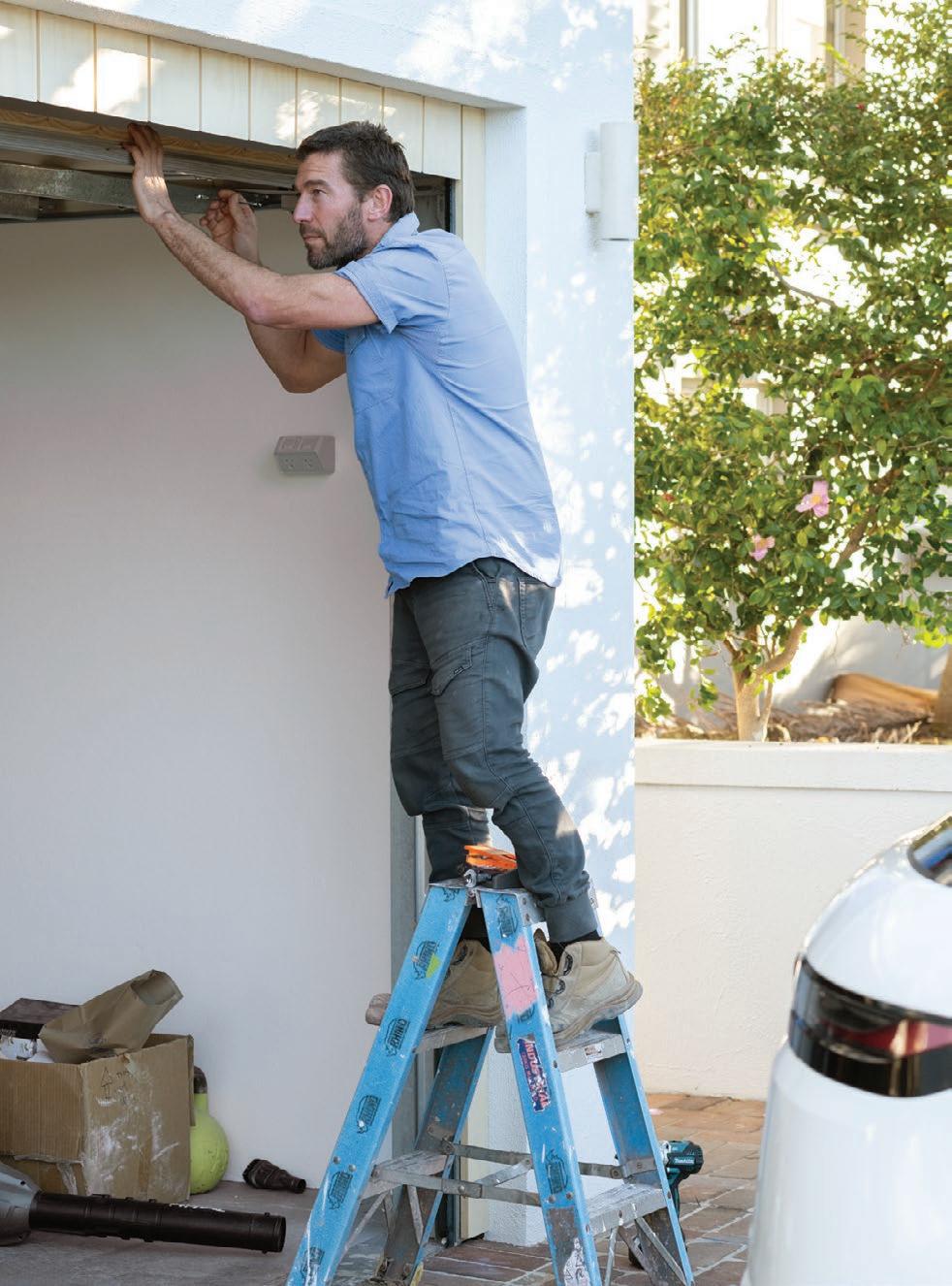

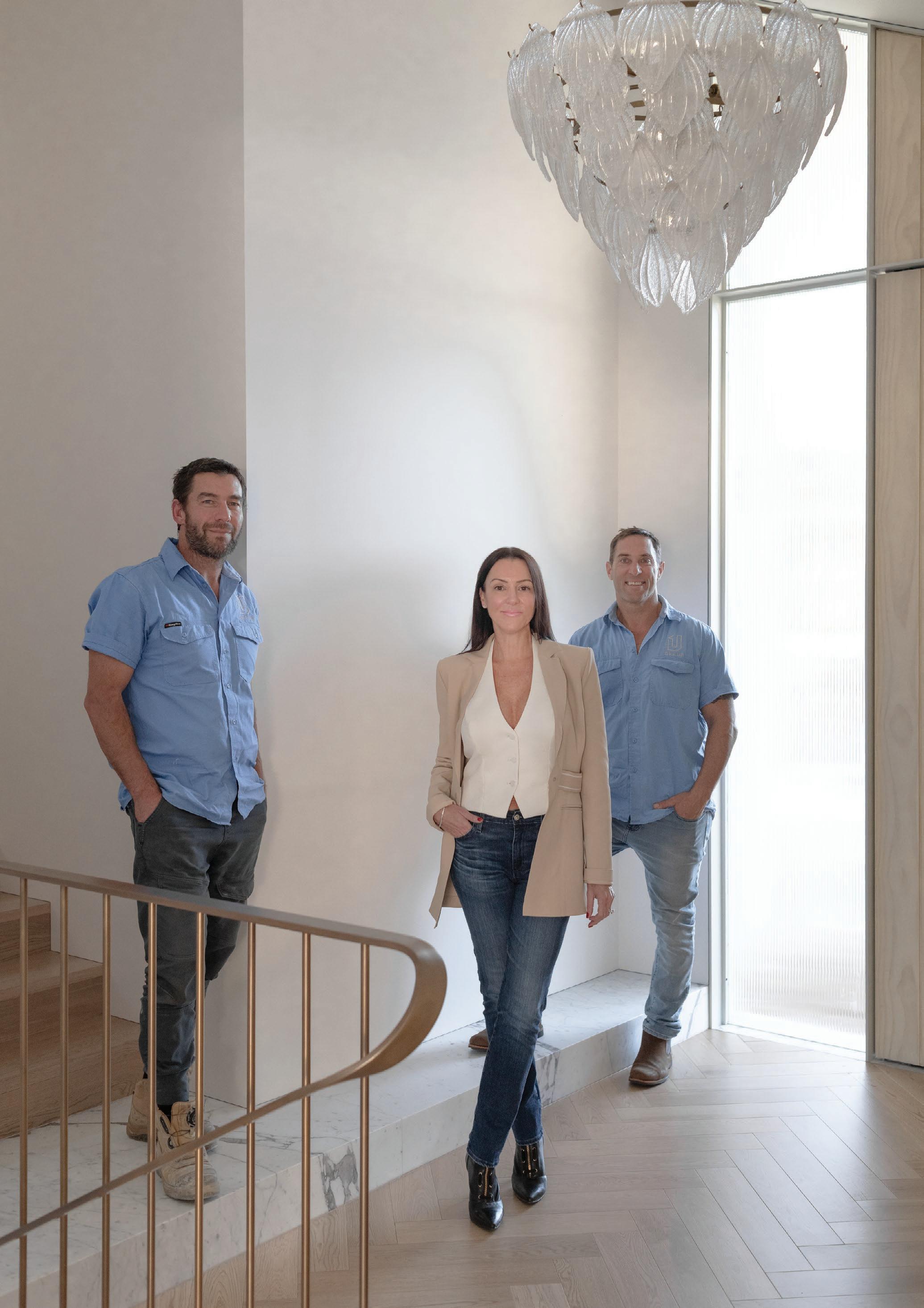
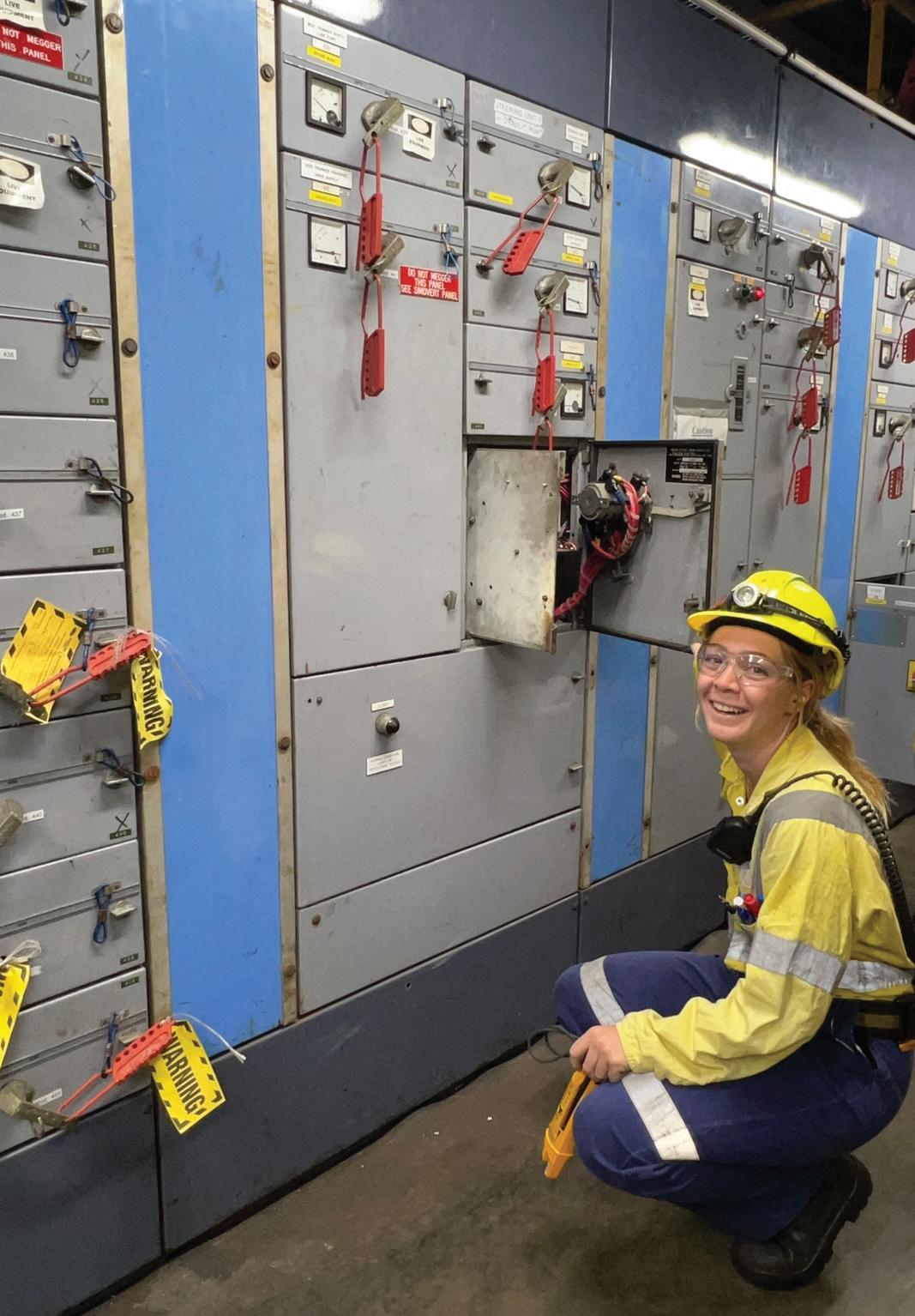
Q A
Tanisha O’Brien, Electrician - BlueScope Steel
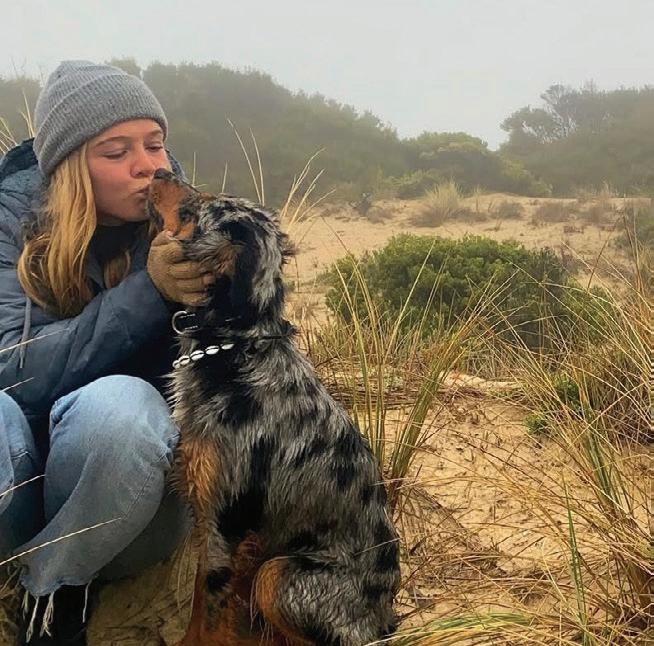
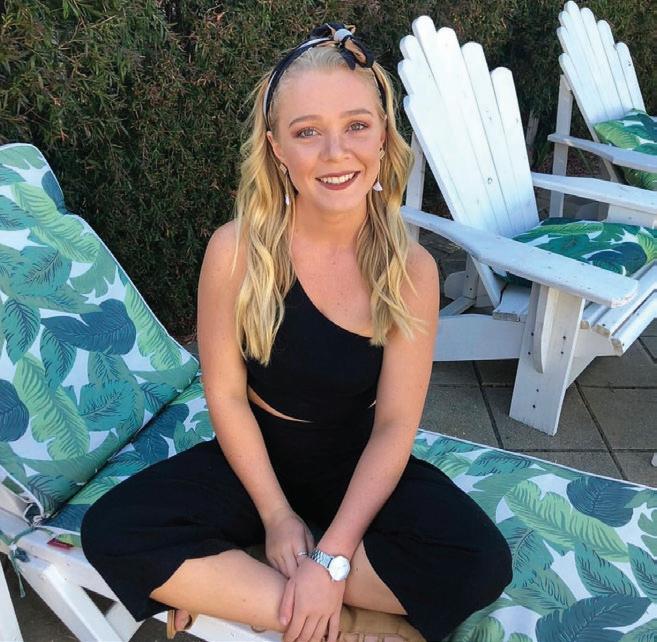
Tell us a bit about yourself
I’m a positive, outdoorsy person who enjoys being hands-on and staying active. I love camping, going on adventures with my dog, and spending time with friends and family.
I’m someone who gives things a go, loves learning new skills, and brings good energy wherever I am. Whether I’m working hard or enjoying life outside of work, I always try to make the most of every day.
Where did you grow up? Can you tell us about your early life?
I grew up in New Zealand and moved to Australia when I was a child.
I’m the youngest of five, consisting of four girls and
one boy. I completed school in 2015 and studied Myotherapy at RMIT University.
Growing up I was always out in the garage or garden helping my dad with whatever I could get my hands on.
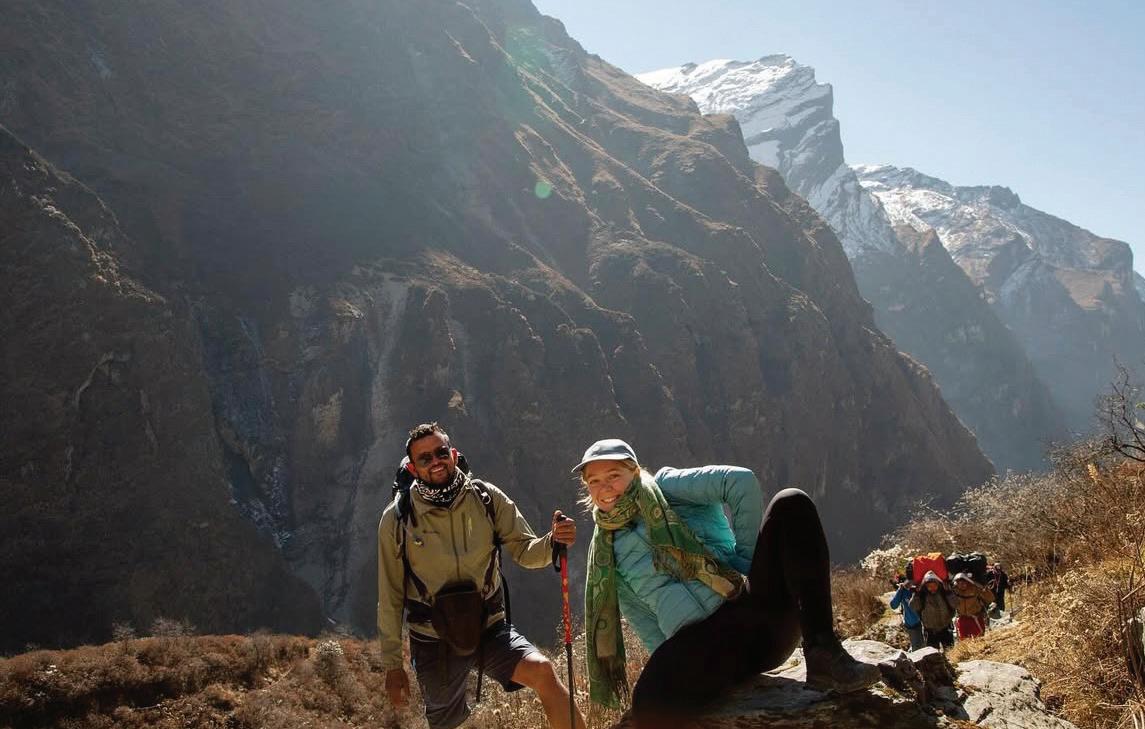
Do you have any interests/hobbies outside of work?
I’m really into the outdoors, camping, hiking, and spending time at the beach or out on the water.
I love animals (especially my dog), and I enjoy going on adventures, whether it’s a road trip, a music festival, or just exploring new places.
I also like spending time with mates, relaxing in nature, and making the most of life outside of work.
Tell us about your work/career before you started your apprenticeship? And how did you get started in your electrical apprenticeship?
When I finished school, I felt a great pressure to go straight into further study, so I enrolled in a Myotherapy course.
Over the next three years, I learned massage, dry needling, cupping, and rehab-based therapy.
But if I’m honest, I knew about a year in that it wasn’t the right path for me.
I kept pushing through, thinking that maybe I’d enjoy the actual job once I finished.
After graduating, I had steady work and was earning good money — but every night, I’d go to bed with a sinking feeling in my stomach at the thought of going back the next day.
People would ask why I didn’t like it, and I struggled to explain it. It just wasn’t for me.
Then came 2020 and Melbourne’s first (of many) major COVID lockdown.
Like many others, I found myself out of work and on JobKeeper.
At first, I sat around, unsure of what to do — but two weeks in, I decided to make the most of the time.
While I’d been studying, I worked part-time as a landscape labourer and absolutely loved it.
I also had a friend from school who’d started a mechanical plumbing apprenticeship and was thriving. That inspired me to take a new direction.
I found a free pre-apprenticeship electrical course at my local TAFE and jumped in.
We only had a couple of in-person classes before everything moved to Zoom, but I stuck with it and finished the course.
“I THINK IT’S POWERFUL TO BREAK STEREOTYPES AND SHOW THAT GENDER HAS NOTHING TO DO WITH CAPABILITY.
EVERY DAY I SHOW UP, I PROVE THAT I’M MORE THAN CAPABLE — AND THAT WOMEN BELONG IN THE TRADES JUST AS MUCH AS ANYONE ELSE.”

After that, I threw myself into job hunting. I called and emailed more than 60 companies, some I didn’t even remember applying to, but I didn’t give up. Eventually, I got an interview at BlueScope Steel.
I knew nothing about the company at the time, but I was so determined to make it count.
I spent hours preparing, practising answers with my family, and rehearsing in front of a mirror.
On the day of the interview, I arrived 90 minutes early, just in case something unexpected happened. I was so nervous — but prepared.
The interview went really well, and a few days later, I got the call, and I got the job. That was nearly five years ago now.
Looking back, walking away from a comfortable career to chase something that felt right was the best decision I ever made. I’ve found a career where I’m genuinely happy, challenged, and proud of what I do every day.
When I first told people I was changing careers and chasing an apprenticeship I received so many negative comments, I’m glad I didn’t listen to what others had to say.
Tell us about your employer? What drew you to working there?
BlueScope Steel is a global company, as the name would suggest we make steel on a large scale. It’s a heavy industrial environment with strict safety compliance expectations.


I’ll be honest I wasn’t picking and choosing when it came to finding a job I was just trying to get into the field and it’s just where I landed.
What do you enjoy about your career?
I really enjoy working with my hands, using tools, and staying active throughout the day.
My job gives me a great variety — one day I might be fault-finding in a crane, and the next I’m out at a lagoon testing the pH levels of the water.
I find problem solving and troubleshooting incredibly satisfying. It keeps me thinking, keeps things interesting, and gives me a real sense of achievement.
What I also value is the flexibility of my trade. Being an electrician means I have skills that are in demand everywhere — from busy cities to remote rural areas.
It’s a career that can take me almost anywhere.
But above all, it’s the people I work with that make it even better. I’ve built some really strong, genuine friendships through work, and that’s something I truly appreciate.
What do you find challenging?
One of my biggest challenges was simply getting started. I was terrified — even though I wanted it more than anything.
Looking back, the fear of starting was much worse than the reality. On my first day, I was so nervous… until I realised it’s just like any other job. I belonged there just as much as anyone else, and I deserved my place.
Over the years, I’ve had people say things like “being a woman is a perk” in this industry. I don’t see it that way at all.
If anything, it can feel isolating.
It’s not about special treatment. I’m not where I am today because I got lucky — I’m here because I work hard, I listen, and I’ve earned it.

What can be frustrating is when people who don’t know me or my work ethic question whether I deserve my seat at the table. But I use that as fuel.
I think it’s powerful to break stereotypes and show that gender has nothing to do with capability.
Every day I show up, I prove that I’m more than capable — and that women belong in the trades just as much as anyone else.
How do you balance home and work life? Is it hard to achieve?
I feel really fortunate in my role because when I leave work, I can fully switch off and focus on my personal life. I prioritise what matters most to me — my health and my family — and I’ve learned not to say yes to everything.
Even though I often work overtime, I make sure to take care of myself through exercise, good food, and proper rest.
I’ve become really in tune with my body, and I use my time off to recharge — physically and mentally — rather than running myself into the ground.
What was the best piece of advice you have received?
If you don’t do it someone else will. Stop letting fear hold you back. It’s scary because its new, not because you aren’t capable of doing it.
What advice would you like to give other women in construction?
Back yourself! I think this is something I struggled with the most at the start. Because I was female I felt like I had to prove myself more than anyone else. Girls in construction belong here!
My confidence came with time, so trust your skills, find good mentors, ask lots of questions and don’t be afraid to speak up.

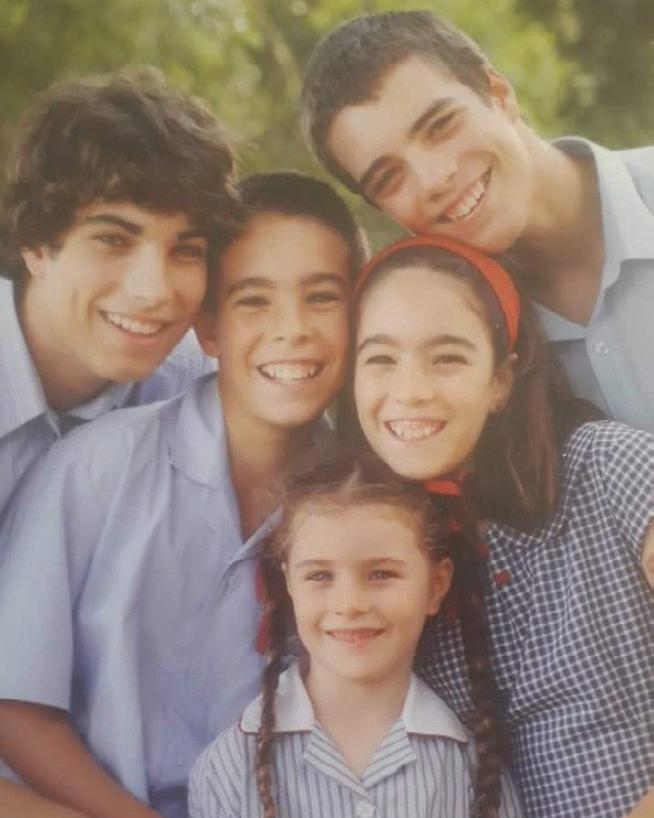
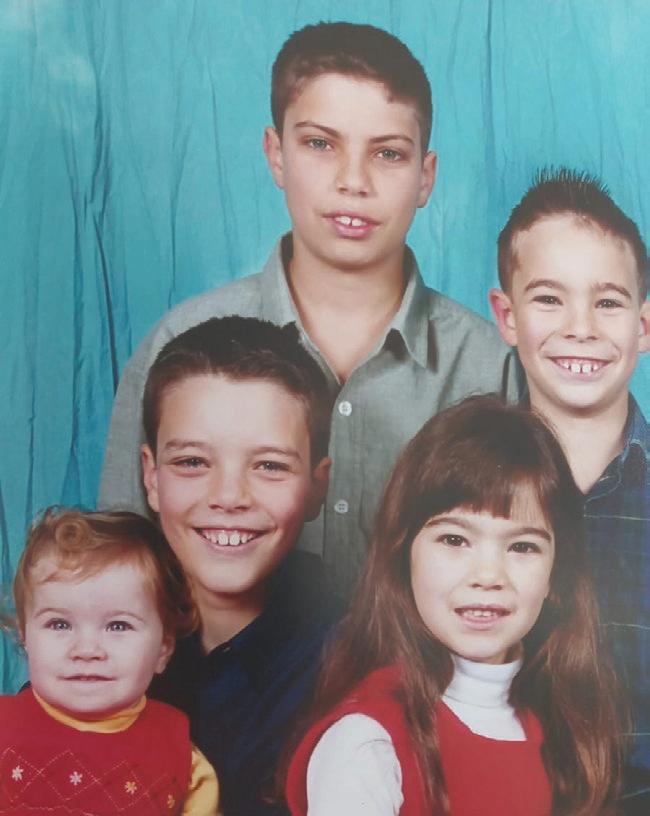
SISTERS CHASE
TRADIE DREAMS
Kira and Jenna Yakoubi embrace life in unique careers
ALYSSA WELKE
Sisters Kira and Jenna Yakoubi always knew they didn’t want to work indoor, corporate jobs, so when they began thinking about what careers they wanted to pursue they both gravitated to trades.
Twenty-seven-year-old Kira pursued a career in horticulture and is a grounds manager at Centenary Memorial Gardens in Brisbane and 23-year-old Jenna is a rail traction linesman for Sydney Trains.
Kira and Jenna grew up in Marrickville and later moved to Padstow Heights after Jenna was born. They’re the youngest in a big family with three older brothers (two of them tradies) spending a lot of their time outdoors, playing sport and going on camping trips with the family.
They were up for anything active: netball, basketball, soccer, OzTag, indoor soccer, Newcombe ball, volleyball - even taekwondo and rock climbing. Sport was a huge part of their lives and gave them
not just a competitive edge, but also real strength, both physically and mentally.
In their household, working with your hands was just part of life. With both parents in hands-on jobs, choosing a practical career path felt totally natural.
“I think my life growing up influenced my career choice because my whole family are all very hands on,” Kira said.
“Both my parents did/still do work hands on jobs and I think they passed that onto each of us.
“My mum also did an apprenticeship in the printing industry. She dropped out of school and was the only female in her workplace.
“She definitely inspired me, encouraging us that we could work in any industry we wanted even if it was male dominated. It was easier knowing she had gone through that.”
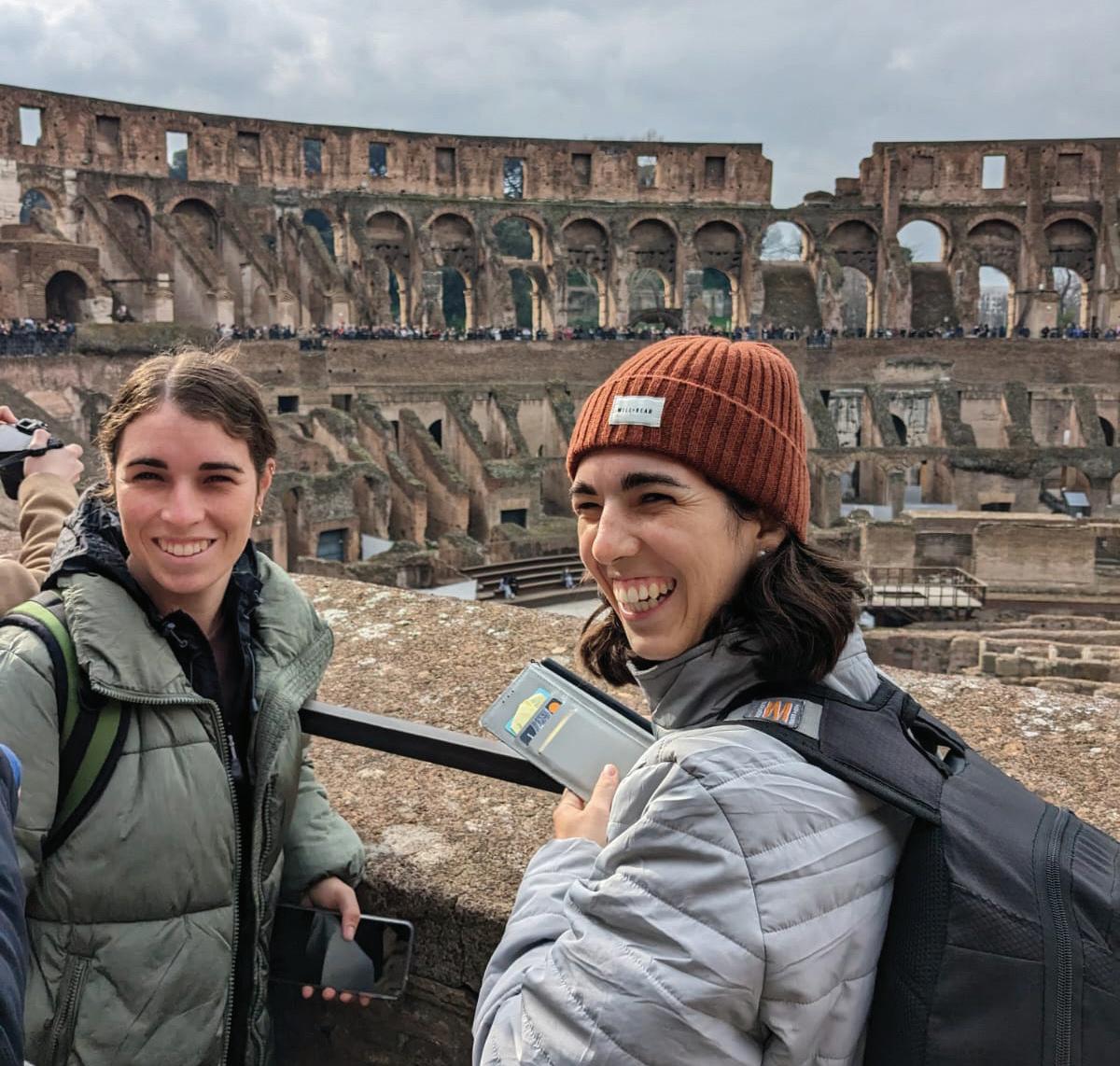
Jenna agreed that their mum was a large influence on her decision to chase her trades career.
“She was the first female in her trade, so I knew some of the hardships she had faced and what to expect as well,” Jenna said.
“Our family as a whole is more hands on, one of my brothers is a cabinet maker, and another a carpenter so, I knew what was involved in those jobs and that I didn’t want to pursue it, but it still made me want to do a different sort of trade.
“My dad also works with electronics, so I felt he could help me with understanding the electrical side of things.”
For Kira knowing what career she wanted to do wasn’t clear, but as she was finishing high school, she knew she didn’t want to go to university. She started her apprenticeship straight out of
school at Rookwood General Cemeteries at 18 as an apprentice gardener and has completed her Certificate III in Horticulture; as well as completing her chemical licence, bobcat and chainsaw licenses.
“When I finished year 12, all I really knew for sure was that I didn’t want to go to uni,” she said.
“I knew I wanted to do an apprenticeship in something; I just wasn’t exactly sure until I got my first job at Rookwood and absolutely loved it.
“My brothers dropping out of uni inspired me not to pursue that path. My eldest brother was great at uni and passed, the next two brothers started, but both dropped out and ended up doing apprenticeships. I knew working with my hands was for me rather than continuing to study.
“I liked the thought of making money while I worked towards finishing an apprenticeship. Instead of having a debt at the end of my four years (like a lot
of my school peers), I would be way in front and progressing well in my career.”
In February 2020 Kira married her husband Thom and they moved to Queensland; they now have a 17-month-old daughter.
Before moving to Queensland her former CEO at Rookwood put her in contact with another cemetery, Centenary Memorial Gardens, which is where she currently works.
It is a smaller cemetery, and all staff are multitrained, which means she’s gone slightly above and beyond just garden maintenance. She oversees anything to do with burials, ashes placements, plaques and sometimes cremations.
Kira loves working outdoors and takes pride in maintaining the gardens and seeing the enjoyment people get from them.
“From the perspective of working in a cemetery, I love the comfort a garden can bring to a grieving family,” she said.
“I love that when you look around my cemetery you sometimes can’t tell it’s a cemetery because the grounds/gardens make it look so beautiful.
“And I love being able to set up a burial/ash placement or plaque, then to have a family come to say their last goodbyes and be stress free because we have already dealt with all the things that have potentially gone wrong behind the scenes.
“It’s a job not many people think about, especially considering our ‘clients’ have just been through some of the worst trauma in their lives. It’s a bit of a thankless job, but I really do enjoy it.”
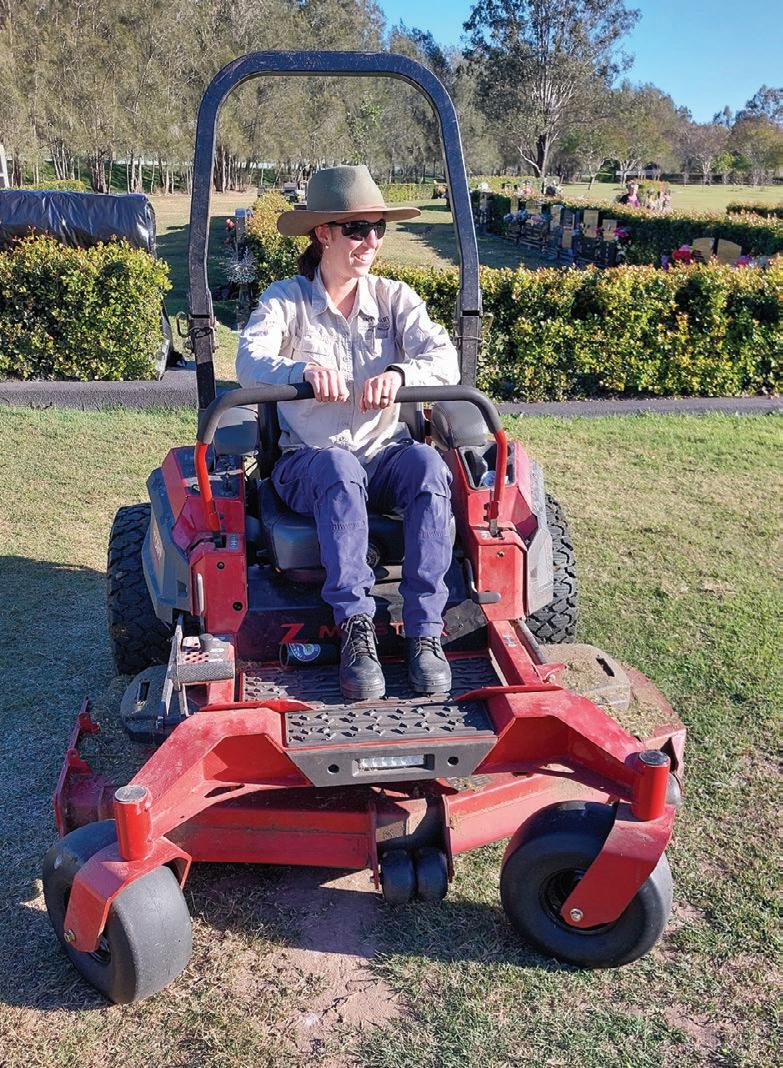

She said there was inherent stress in maintaining the cemetery grounds because of the emotional connection people have.
Any “wrong move” can be upsetting to a grieving family, but it is a deeply rewarding career.
On top of this challenge, Kira has felt a pressure to “keep up with the boys”.
“I think I’ve done a pretty good job at it though, considering I held a leadership role in both my jobs as a horticulturalist,” she said.
“Being a girl in a male dominated job, is its own challenge. There are always men who will hate you no matter what, just because you are a woman and they feel you don’t belong. It’s easiest just to ignore those people.
“Also, I’ve literally always been the youngest in my jobs which means you really have to work hard to gain peoples’ respect.
“Currently I am a 27-year-old who manages people who are almost double my age (and could very potentially be my parents). That is a challenge in and of itself.
“I need to be very respectful with how I give ‘my orders’. I will often ask for others advice so we can work through things as a team rather than me making each call by myself.”
Jenna started her career in a similar way, she watched her sister chasing her dream and also knew university wasn’t for her.
She didn’t know what specific apprenticeship she
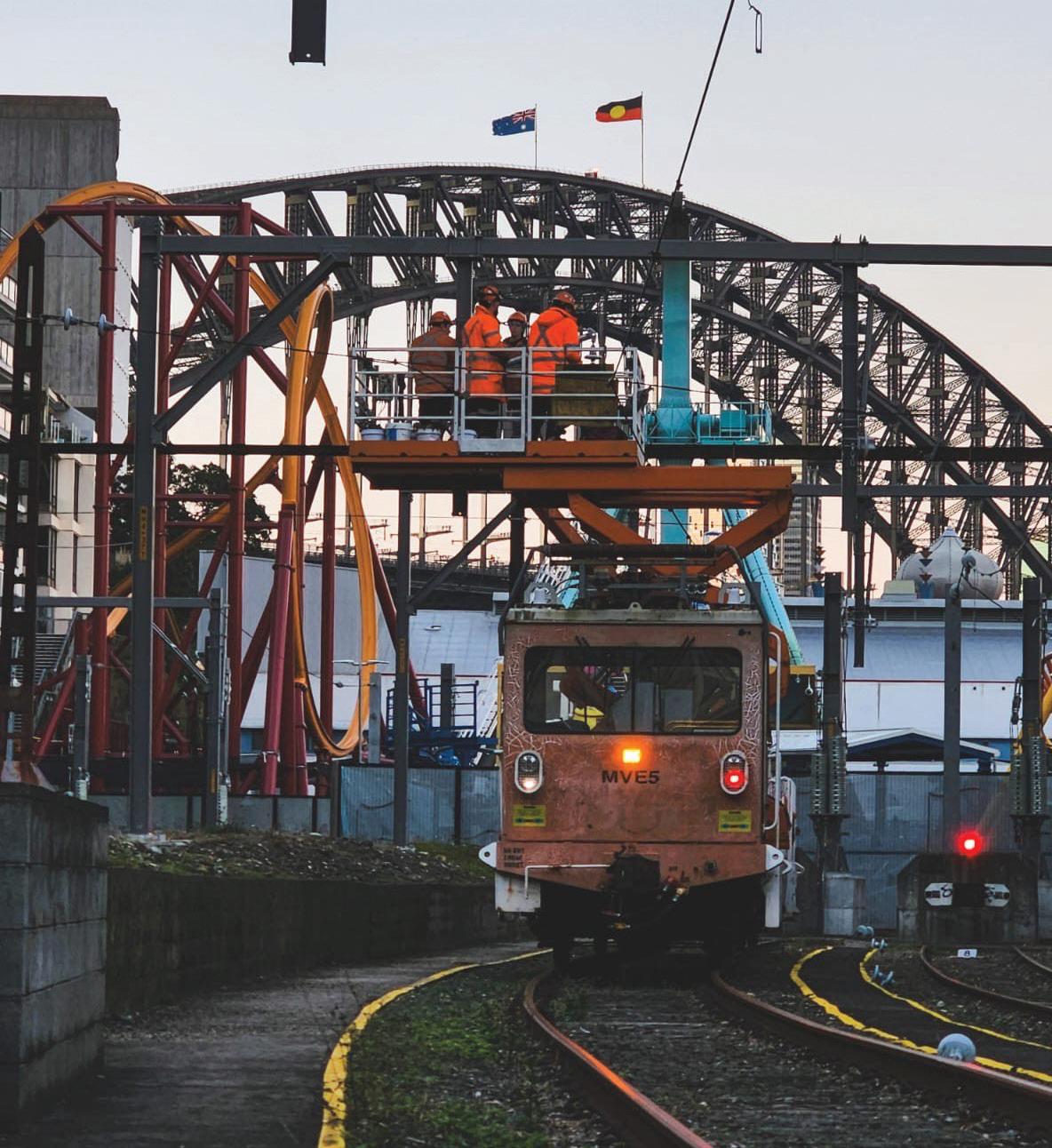
wanted to do but some well-timed advice sent her on her career trajectory.
“My career advisor at school had mentioned to me that Sydney Trains was advertising a range of apprenticeships, so I looked them up and found out about rail traction,” Jenna said.
“When I found out it involved working at heights I was immediately interested.
Her trade is called Rail Traction. I basically maintain and replace the overhead wires that power the trains which are 1500v, as well as looking after the lines that that power the substations for the 1500v wires.
As part of her apprenticeship, she went to TAFE to study a Certificate III in Electrotechnology and a Certificate III in Rail Traction, as well as a range of high-risk work licences including forklift, crane, dogging, rigging and EWP, which are all required for her job.
Jenna said her career has a lot of diversity; she works across Sydney, and sometimes Wollongong or the Blue Mountains.
“I get cool opportunities like working on the Harbour Bridge, where not only do I get to see the views from up in a machine, but I get paid to do it.

“I also appreciate the people I work with who make the job more enjoyable.
“One part of doing a four-year apprenticeship with Sydney Trains which I appreciated was getting to rotate depots every six months which allowed me to work with a variety of people in different places and getting to see who I fit in and work best with, which is how I ultimately ended up getting a full-time position.
“Even though some jobs are pretty tiring, it’s always rewarding seeing the job completed, especially when it’s an entire rebuild which involves taking down old overhead wires and replacing them so that trains can keep running smoothly.
“It’s also rewarding as a woman in a male dominated trade, because over time I have earned their respect to the point I have had people tell me that I have made their daughters want to do my job, which is encouraging.”
Kira agrees that seeing more women encouraged into trades can only be a good thing as there’s still a lot of older men out there that think there is no place for a female.
She said encouraging women into trades needed to start at school.
“I think schools need to encourage young people to go into apprenticeships if they have hesitations about uni,” she said.
“They need to give options and make sure the girls are equally given those options. I felt I had no options when I left school, I had no idea what to do because my school didn’t talk about anything but uni.
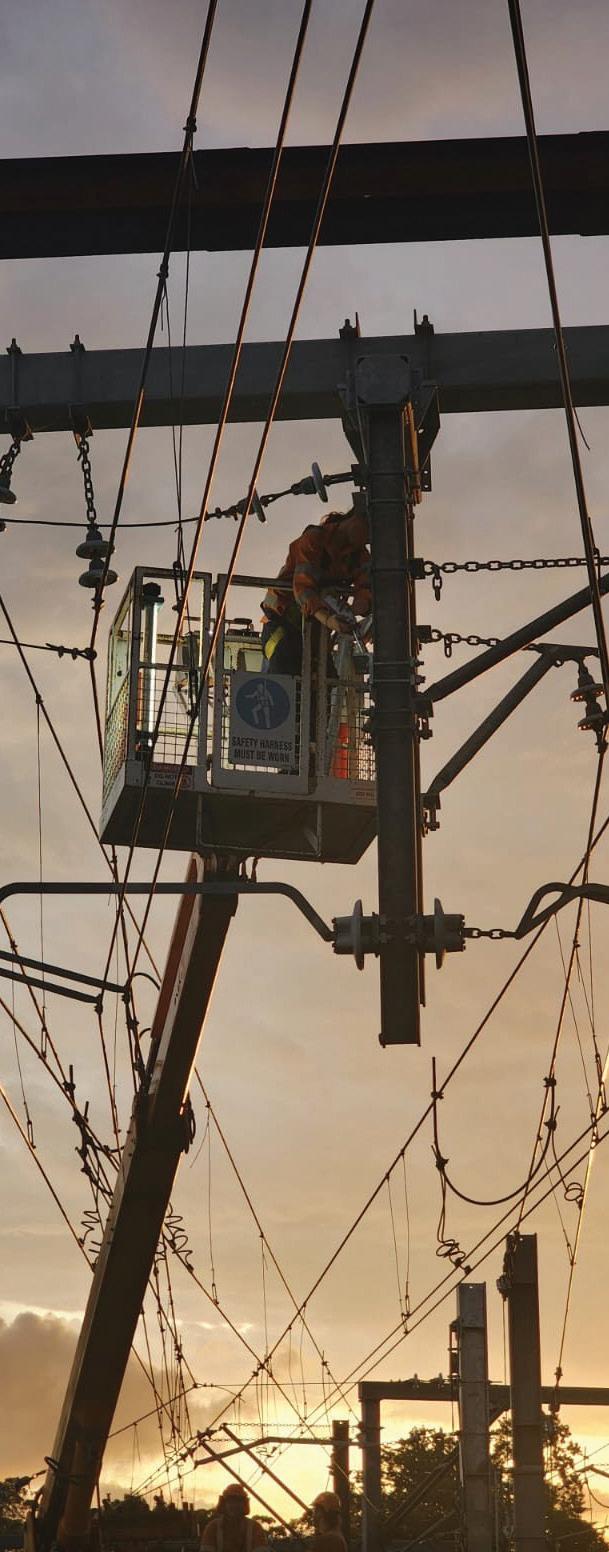
“There aren’t a lot of girls in my industry, I think it’s because a lot of them don’t know about it. So, I’d say there needs to be more information out there, helping young people, and giving them a good, informative choice about what they want to do with their future.”
Jenna has also encountered men who think women can’t do the work, but she’s had some great mentors who have built her up, for the good of the industry; the attitude shift needs to come from within the industry.
“I came into the job not even knowing what half the tools involved were called or how to use them, and while there were plenty of people more than willing to teach me, it was still sometimes difficult to learn when others wouldn’t give me the time of day to teach me and allow me to learn,” she said.
“I think this change can be achieved just by more females who genuinely enjoy getting their hands dirty and doing some hands-on work.
“When I started as an apprentice, there were only two females in my job who had both started the year before me. Now there are four of us and not only does this mean we can support each other, I genuinely feel like I’ve seen a change in some of the guys attitudes as they have seen that we are willing to join in and have a laugh but also put in our best efforts to work, and they really respect you for that, but there is always more room for improvement.
“I think this change will also occur overtime as older people retire and more people join and see that there are women who have been through the whole apprenticeship and can teach them plenty of things.
“More advertising, so women know about the job would also be beneficial, however there is already a women’s pre-apprenticeship program in place for women who may be looking to join a trade like this so they can talk to current female workers and get a feel for what the job is like before actually joining, but better advertising for that so women actually know it’s available would be helpful.”
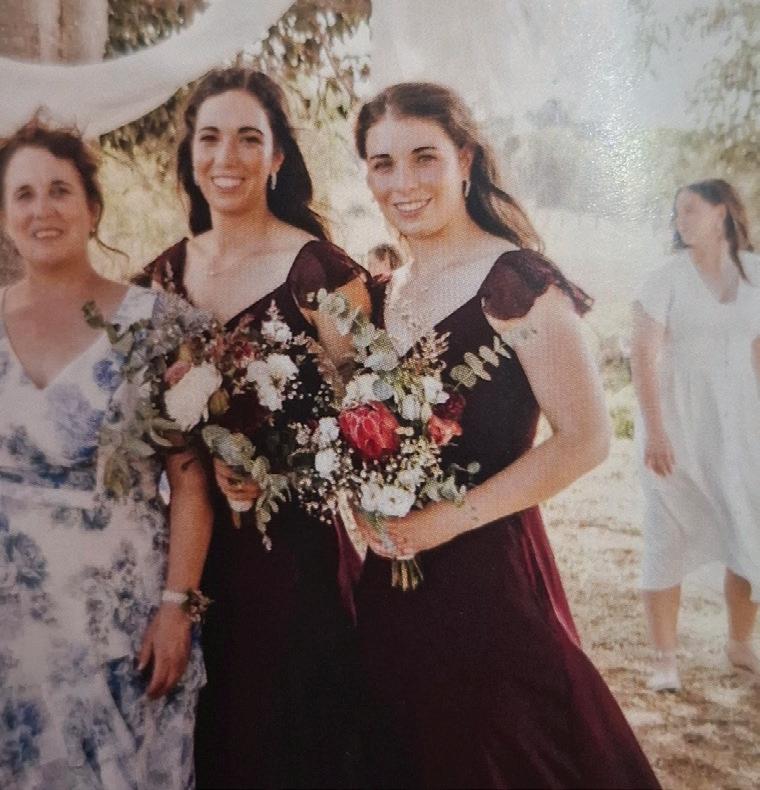



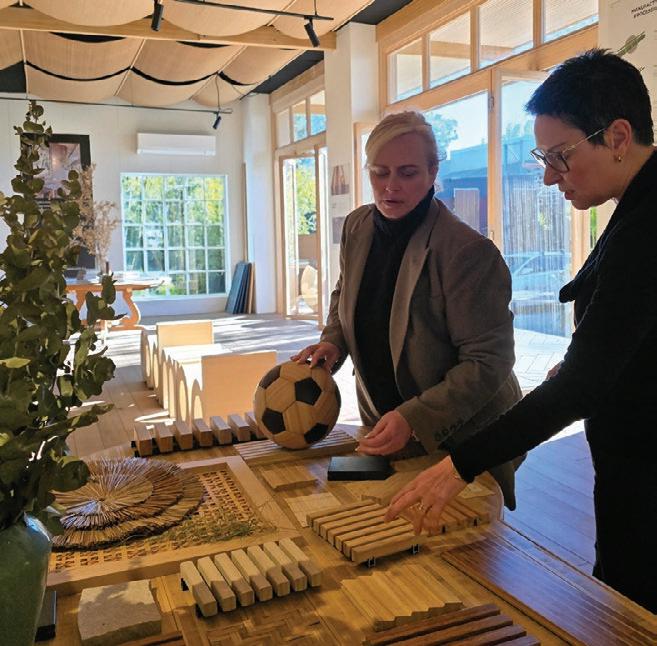
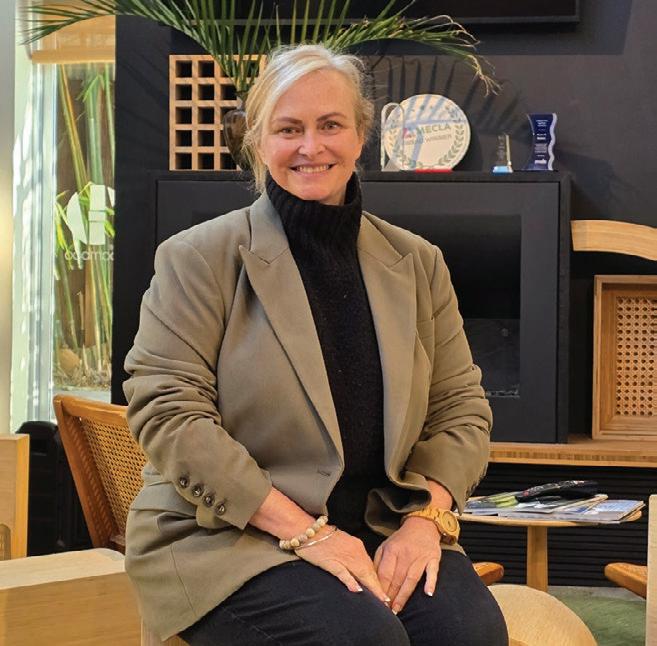
Jennifer Snyders redefines sustainable design IS BAMBOO THE FUTURE?
NARELLE WARREN, FLORENCE AMBASSADOR
Jennifer Snyders stands as a beacon of innovation and sustainability in Australia’s architectural landscape.
With a Bachelor of Science in Architecture, she brings a unique blend of technical expertise and visionary leadership to her roles as CEO of House of Bamboo and Australian Bamboo Plantations, and as President of the Bamboo Society Australia.
Under her stewardship, House of Bamboo has redefined sustainable design, earning top environmental and health certifications such as Global GreenTag Level A and Platinum Health ratings for its engineered products.
Her commitment to eco-friendly materials and practices has positioned the company at the forefront of sustainable construction solutions.
As President of Bamboo Society Australia, Jennifer is dedicated to increasing awareness of bamboo’s properties and its potential in land
restoration, climate change mitigation, and as a sustainable alternative to timber.
Her advocacy underscores the message: “By choosing bamboo, you support sustainable construction practices, help preserve our environment, and improve biodiversity.”
Jennifer’s leadership extends beyond business; she is a recognised World Bamboo Ambassador and a respected speaker at international events, championing the untapped capabilities of bamboo.
Her efforts have not only advanced sustainable building practices but have also inspired a new generation of architects and designers to embrace environmentally responsible materials.
Florence Ambassador Narelle Warren sat down with Jennifer Snyders to delve into her journey, exploring her insights on sustainable architecture, the transformative potential of bamboo, and her vision for a greener future in the construction industry.
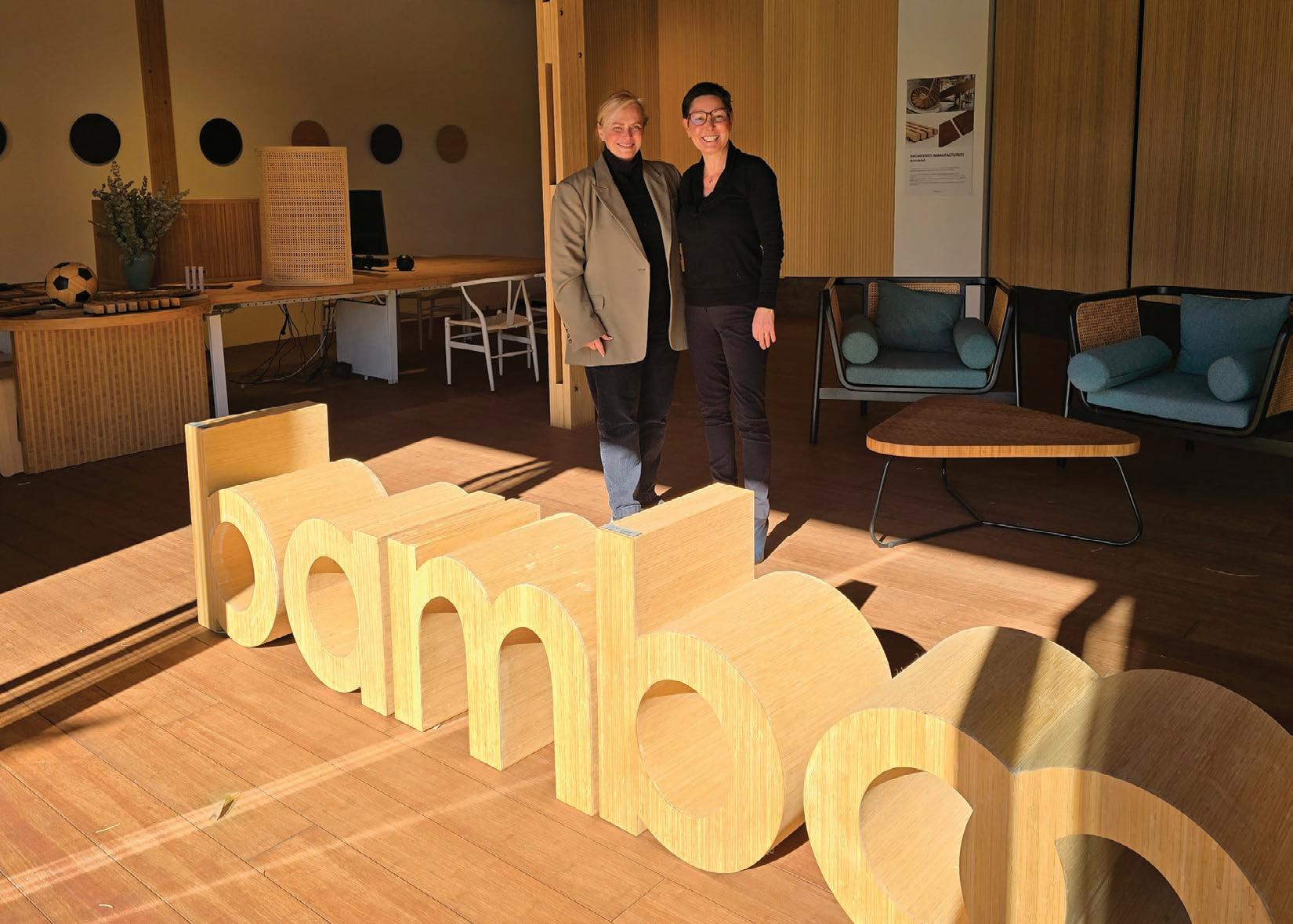
Can you tell us about your teenage years? Were there any pivotal moments or influential figures that shaped your interests and ambitions?
In my teenage years, I worked selling hotdogs in Kings Cross on Friday and Saturday nights to help fund university expenses. My mother, who had sent me to a private girls’ school, was horrified — but that job opened my eyes to a world I would never have otherwise seen.
I befriended a group of street kids, many of whom had escaped difficult and tragic lives. One winter night, a 13-year-old girl named Jessica, who had been living on the streets, was shivering after doing whatever she could to survive. I gave her my new winter coat, asking only that she return it the following week. She did. I was proud of her, and it changed something in me.
That experience taught me a profound lesson: people are inherently good, even when life has led them down the hardest roads. Jessica could have kept or sold the coat — but what I offered her wasn’t just warmth, it was belief, compassion, and dignity. And she honoured that.
It shaped how I lead today. Whether it’s business or life, I’ve learned that trust, respect, and human connection are more powerful than control or fear. I choose to believe in people first, and that belief, while not always easy, creates loyalty, accountability, and transformation.
One truth I’ve come to understand over the years is this: when people show you who they are, believe them. Too often, especially as women, we try to fix or change people. But we can’t. What we can do is work with what’s in front of us. In business, that means recognising people’s strengths, not their shortcomings; leading from a place of awareness rather than idealism. You can’t make someone what they’re not, but you can help them be the best version of who they already are.
In business, it’s tempting to be hard-edged or transactional, but I’ve found that when you lead with heart and awareness, you build something far more enduring. That one night on a cold street taught me that even small acts of trust can unlock something far greater, and that’s a lesson I carry with me every day.
What challenges have you faced as a woman in these traditionally male-dominated fields, and how did you overcome them?
I’ve always believed that identity is shaped by values and purpose — not gender. I’ve never seen myself as a “woman in a man’s world.” I’ve seen myself as someone with goals, determination, and the drive to deliver.
That said, there have been plenty of moments that reminded me I was a minority. I’ve turned up to building sites and been met with, “Oh — I was expecting a man,” which always makes me smile. I usually say, “Well, you’re lucky — you got me.”
Sometimes, women feel pressure to mimic male counterparts in order to be taken seriously. I disagree with that. Our strength lies in difference. We bring balance, fresh perspectives, emotional intelligence, and a collaborative approach. That has enormous value.
I’ve faced my share of unfair treatment. At university, I was wrongly accused of copying a classmate’s work — simply because I was female. The truth was the opposite. But rather than let it define me, I passed, moved forward, and focused on being even better next time.
Don’t let injustice consume you. Use it as fuel. Keep your integrity. Be kind. Don’t shrink yourself to fit into a system that doesn’t value you — rebuild the system or create your own. When you’re grounded in who you are, even a whisper has power.
What has been the most rewarding project or milestone in your career so far?
Transforming House of Bamboo from a small, legacy business into a purposeful company with real-world impact has been my proudest achievement.
When I took over, I knew I couldn’t continue the business unless I believed in it deeply. Once I understood bamboo’s power — its rapid regeneration, sustainability, and potential to change the construction landscape — I aligned everything I had with this mission.
It hasn’t been easy. There have been many frustrating moments. But I’ve never lost sight of the bigger picture. This journey is not about profit for the sake of it. It’s about creating something meaningful, something that can change how we live and build.
Of course, profitability is essential, but my focus has always been purpose first. I never worry about people copying me — in fact, I take it as a sign we’re doing something right. I believe in looking forward, not behind.
When you stay true to your mission, the right people and opportunities will come. Collaboration over competition is how we create real change. And yes — we can still be successful while doing good.
Sustainability is central to House of Bamboo’s mission. What drives your passion for sustainable construction and design?
When I formally studied sustainability, I found it deeply confronting. The more I learned, the more disillusioned I became about the future. It was overwhelming; seeing the scale of environmental damage, short-term thinking, and the widespread exploitation of nature.

But I made a conscious decision to shift my mindset. Instead of spiralling, I chose to act, to focus on one area and do it well. That became bamboo.
Fencing is a perfect example of where this philosophy meets practice. Every house has a fence. It’s a large component of construction materials and an easy place to make better choices. Using bamboo for fencing is not just about aesthetics, it’s about measurable impact. Bamboo grows quickly, regenerates without replanting, and can replace or supplement timber without deforestation.
We’re in the middle of a housing crisis. People need homes, but we must build responsibly, using materials that are sustainable and accessible. If we rethink how we use natural materials, we can meet human needs and protect the environment.
Unfortunately, sustainability is also being exploited. Greenwashing has diluted its value. We’re creating so many barriers with regulation that genuine innovation is being stifled. We’ve overcomplicated the pathway to environmental repair and that breeds public distrust.
At the core of it all, we need to ask: what kind of world are we leaving behind? It’s not about stopping what we do, but doing it better. Listening to nature. Learning from it. Acting with integrity. And building systems that serve everyone, not just the privileged few.

You have mentioned work around land rehabilitation—can you tell us a little about that?
Yes, this is an area I’m particularly passionate about. One of bamboo’s lesser-known superpowers is its ability to rehabilitate degraded land, including former mining sites, through a process called phytoremediation. Bamboo is highly effective at absorbing toxins and heavy metals from the soil, while its deep, fibrous root system helps stabilise and regenerate the land. It grows rapidly, produces biomass quickly, and restores biodiversity by creating a microclimate that encourages other plant and animal life to return.
We’ve already seen this in action. At the Yarrabee Coal Mine in Queensland, we planted bamboo to create windbreaks and it thrived. The success of this project demonstrated bamboo’s resilience and ability to grow in harsh, degraded environments, establishing a strong precedent for broader rehabilitation efforts.
We’re now exploring further partnerships to use bamboo not just for environmental repair, but also to create regenerative industry opportunities, particularly by engaging Indigenous communities to support land stewardship, cultural connection, and local economic development. Bamboo offers a powerful model for restoring the past while investing in a more sustainable future.
Why isn’t bamboo more widely accepted and adopted?
I believe the answer is two-fold. Firstly, from a horticultural perspective, there’s still a deep misunderstanding of what bamboo actually is. Many people hear the word and immediately think “invasive”. But in reality, there are more than 1500 species of bamboo, and more than half are clumping, not running, meaning they are non-invasive by nature. In fact, we have three native species of bamboo right here in Australia, and there are regions where bamboo grows harmoniously among native Australian flora. Secondly, when it comes to building materials, the real hurdle is perception. The word bamboo still conjures images of poles, tiki bars, or something rustic and decorative. But bamboo has evolved far beyond that. Today, engineered bamboo is a high-performance material, comparable to timber in both strength and application. It offers a viable alternative to timber without the environmental cost. Bamboo can be harvested annually, doesn’t cause deforestation, and sequesters carbon at a far higher rate than traditional hardwoods. It’s not only sustainable, it’s scalable, and given the timber supply shortages we’re facing, I believe it’s an obvious solution.
As I often say: it’s a no-brainer.
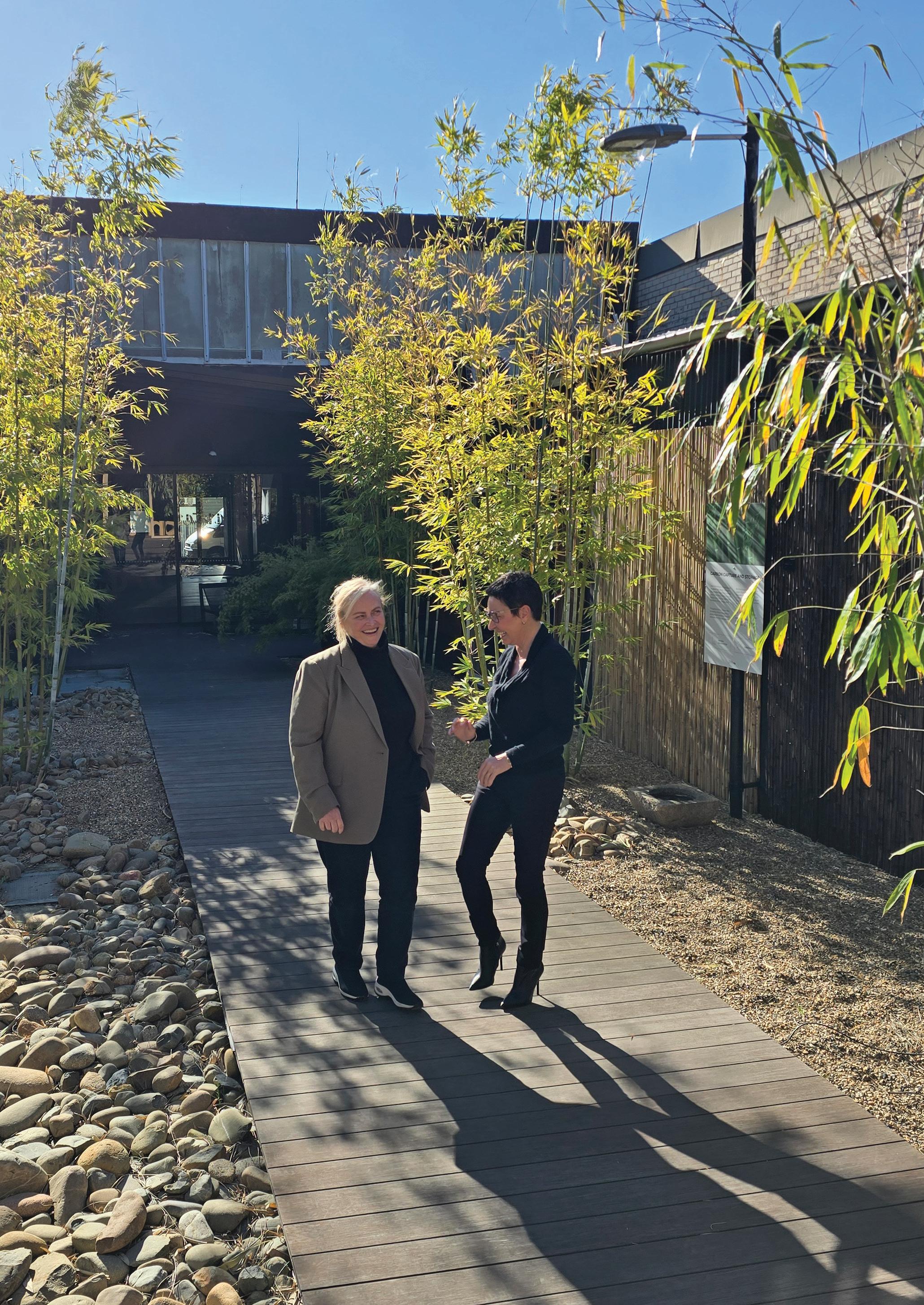

DESIGNING BEAUTY
Foolproof your home’s exterior colour palette with COLORBOND® steel
Choosing a colour scheme for your new build or renovation is a big decision. After all your home is your biggest investment and the right colours and materials you use not only reflect your personal style, but they can also add long term value. The right colours should harmonise with other materials and speak to the local environment and other man-made structures in the vicinity.
COLORBOND® steel’s colour range includes 22 core colours in a classic finish with six of those available as a Matt finish. And as Christine McCoy, BlueScope Steel’s NSW Design & Colour Consultant points out, these colours have been

curated to work seamlessly with each other, other building materials as well as the vast array of colours and textures found within the Australian landscape.
Christine says that because of the complementary nature of COLORBOND® steel colour collection, consumers and designers can be confident in pushing the boundaries with their selections.
“We’ve made a very conscious decision to ensure we have a comprehensive range of neutrals with various undertones. Our range is concise but offers versatility in its ability to work with landscapes, other materials and other colours within our range,” she said.
“Light and dark shades also offer the ability to add contrast to a design, like Surfmist® and Monument® or softer shades that bring a softer appearance, Like Southerly® and Blue Gum®
“Warmer, deep neutrals like Woodland Grey® and Wallaby® are earthy and natural, and work well for rural properties.”
Colours are of course, just one way that COLOROBND® steel products can be used to create a stylish exterior.
The premium look of COLORBOND® steel in a Matt finish creates a beautiful velvet look, thanks to the way it absorbs light. Featuring Monument® , Basalt®, Shale Grey®, Dune®, Blue Gum® and Surfmist® the smooth, flat finish provides an elevated, contemporary look while still providing the durability, versatility, and low maintenance requirements that COLORBOND® steel products are renowned for.
“Imagine using the classic finish on your windows and gutters and Matt finish on your walling.; that contrast is texture is real design feature without being too overt,” she said.
“If you were to use COLORBOND® steel Monument® in a Matt finish on the wall and COLORBOND® steel Monument® in a standard finish for the other trims, it would create a subtle contrast and a lovely thoughtful finish.”
Christine also said using contrasting colours in a monochromatic (‘of one colour’) palette is very popular, so using COLORBOND® steel Monument® in a Matt finish for the walling, paired with COLORBOND® steel in Surfmist® for the window trims would create a lovely punchy contrast that feels a smart and bold.
Inspired by the colours of the Australian landscape, all the COLORBOND® steel colours in the range work beautifully with natural materials such as timber and stone
“With an increased interest in eco building practices and biophilic design, harmonising with the landscape is becoming increasingly important, as is the sustainability of products,” Christine said.
“Eco building focuses on function before form, but we must still be very aware of the land that we’re on, and the respect we have for it.”
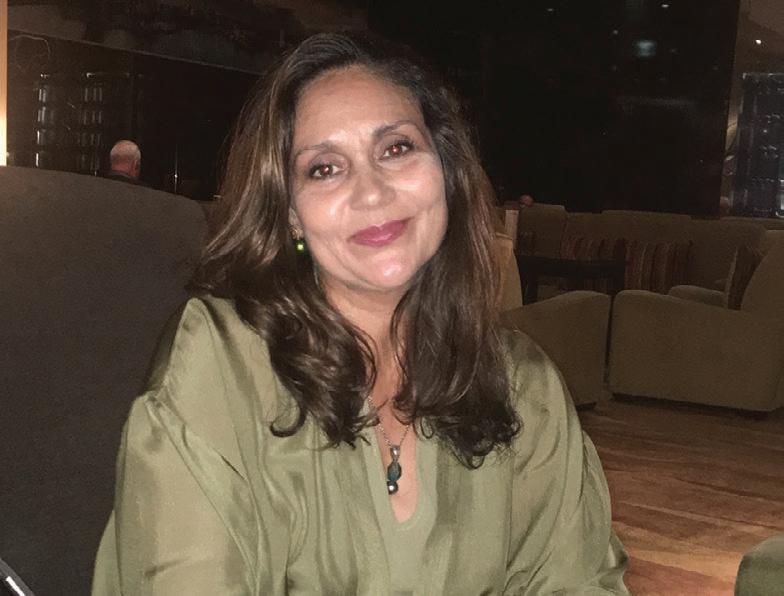

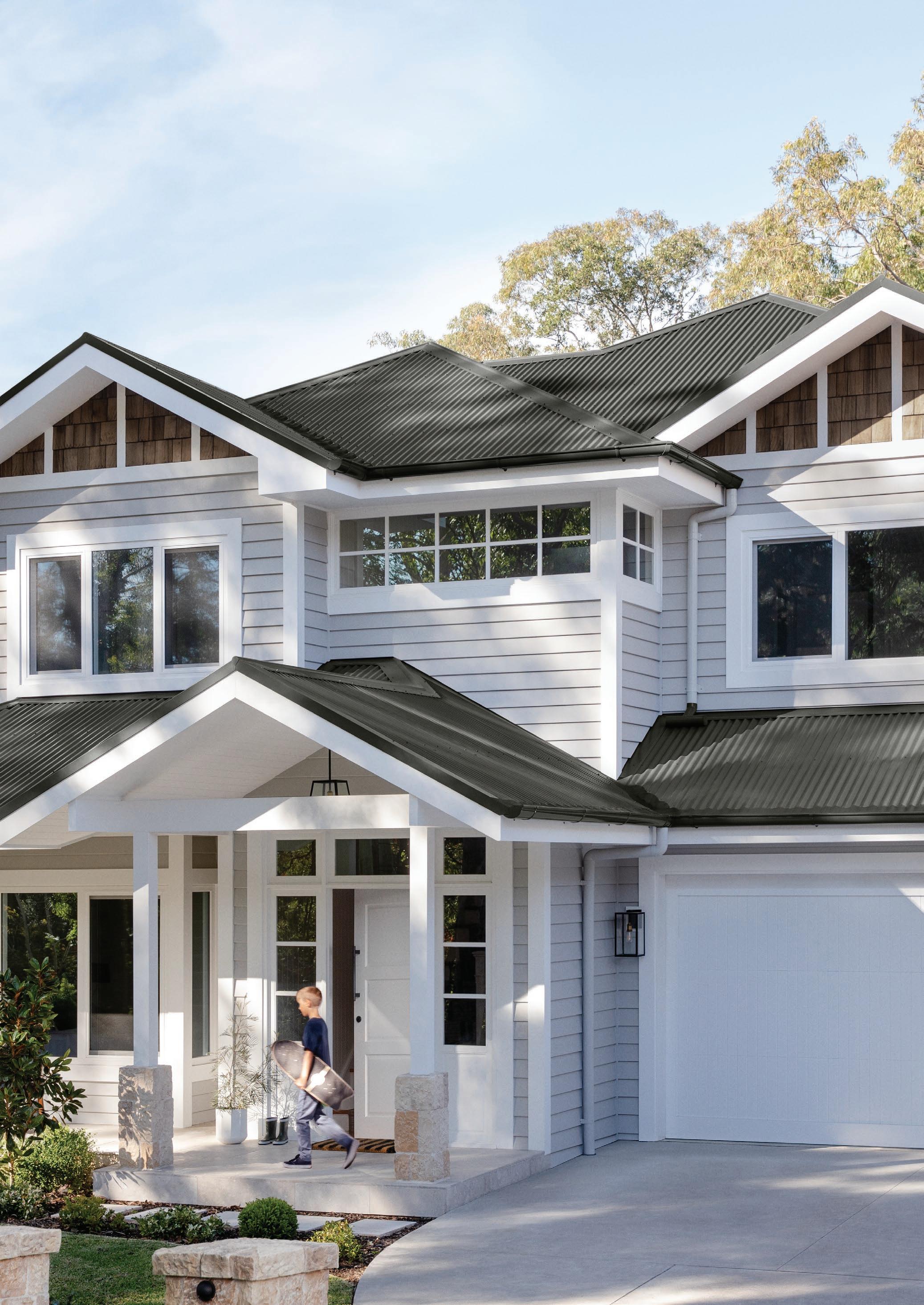
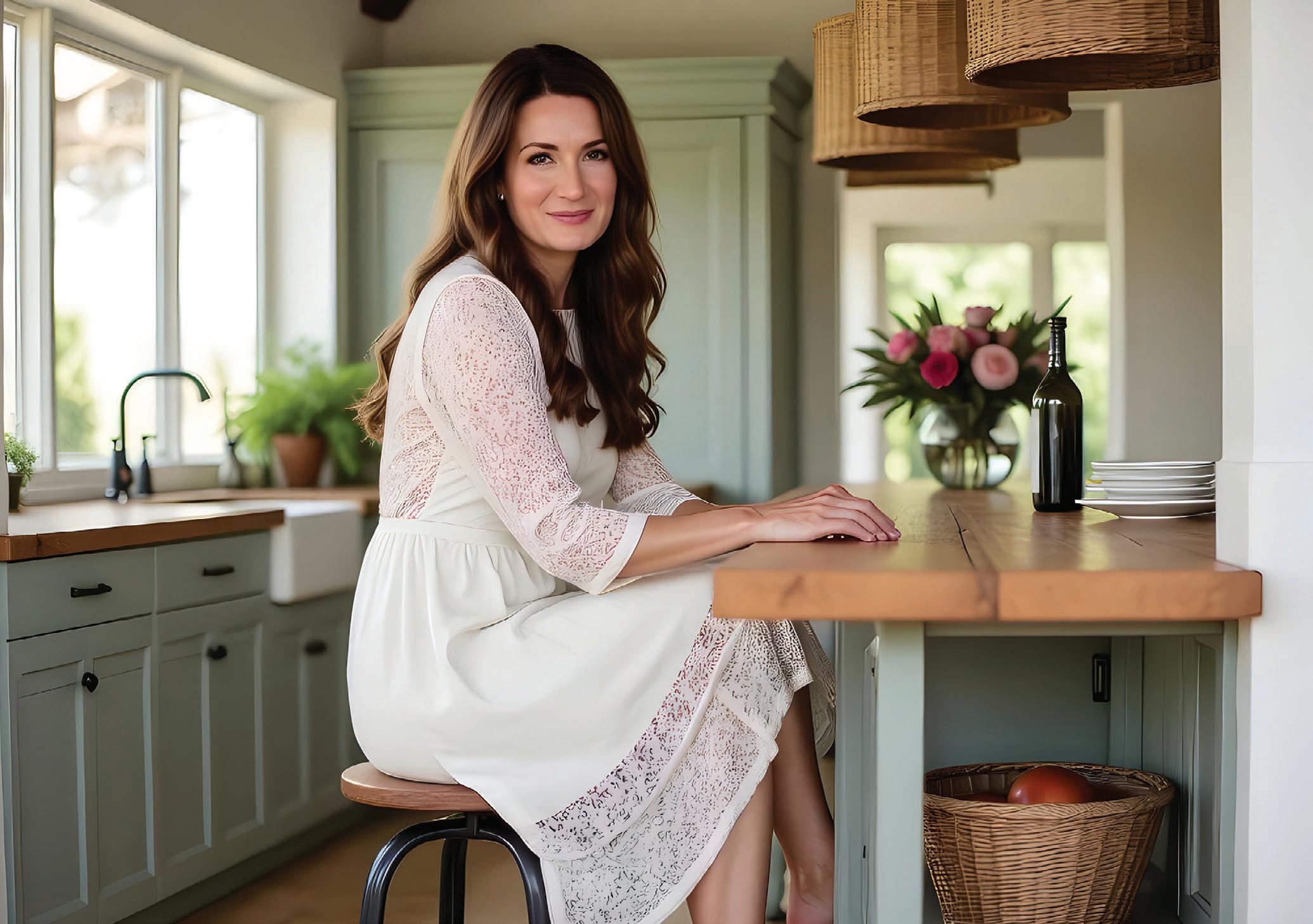
REDEFINING A HEALTHY BUILDING
Annie Scog is helping to create healthier environments from the ground up
As a Building Biologist, Healthy Home Expert founder and director Annie Scog is driven by helping people create homes that don’t just look good but also protect everyone who lives in them.
But Annie’s interest in health-focused design began in an unexpected way – her young cat was diagnosed with hypothyroidism, a condition that’s rare in cats at his age.
At the suggestion of her vet, she began looking into flame retardant chemicals commonly found in household furniture, mattresses, carpets, and insulation.
As she began reading up on the topic she found
many of them had links to serious health issues - not just for animals, but for humans too.
“I enrolled in the Advanced Diploma of Building Biology and began formally studying everything from material toxicity to indoor air quality, EMFs (electromagnetic fields), mould, and water contaminants,” Annie said.
“Today, I run Healthy Home Expert, helping others create homes that don’t just look good - they protect the people (and pets) who live in them.”
But what is health-focused design and what benefit does it have for people, animals and the environment?
Health-focused design is about more than just avoiding harm — it’s about creating buildings that actively promote vitality, clarity, rest, and resilience for the people who live and work in them.
Annie said it starts with material choices: selecting low-tox, transparent products that are free from known hazards like VOCs, formaldehyde, PFAS, and flame retardants.
True health-focused design also addresses the way a building functions as a living system; how it breathes, how it manages moisture, and how it shields or exposes occupants to EMFs, mould, and allergens.
It incorporates indoor air quality strategies such as source control, proper ventilation, and natural material use.
It looks at moisture dynamics and thermal performance, understanding how condensation, thermal bridging, and material permeability can make or break the long-term health of a space.
It considers acoustics, natural light, circadian rhythm support, and the integration of biophilic elements like greenery and organic textures to foster emotional well-being.
Health-focused design is science-backed, informed by disciplines like building biology, building physics, environmental health, and sustainability.
“It asks not just ‘Is this building efficient?’ but also ‘How does it make people feel, sleep, focus, heal, and thrive?’,” Annie said.
“For people, the benefits of health-focused design are both immediate and long-term. By minimising exposure to harmful chemicals, we reduce the toxic load on the body — especially important for vulnerable groups like children, the elderly, and those with chronic illnesses.
“When spaces are free from mould, pollutants, and environmental stressors like EMFs, people often report better sleep, clearer thinking, reduced anxiety, and an overall sense of ease in their environment.
“Homes and workplaces feel more restorative, focused, and energising — not just places we live or work, but places where we thrive.
“For the environment, health-focused design is inherently sustainable. It favours materials that are responsibly sourced, recyclable or biodegradable, and free from toxic manufacturing by-products.
“These choices reduce pollution, support circular economy principles, and protect both biodiversity and human health throughout a product’s entire lifecycle. Health-focused buildings also tend to integrate energy-efficient systems, moisture-resilient detailing, and low-carbon construction methods, which reduce resource consumption and operational emissions over time.”
The principles behind health-focused design have existed for decades-particularly through building biology, which originated in Germany in the 1960s, but it’s only in the past 10 to 15 years that there has been real momentum in mainstream construction and design circles.
What is a Building Biologist?
A Building Biologist is a trained environmental health professional who assesses how the built environment impacts human well-being. It uses a science-based, holistic framework to evaluate indoor environments and uncover hidden stressors that can affect everything from sleep quality and respiratory health to immune function and long-term disease risk.
Using specialist tools and protocols, Building Biologists deliver tailored reports and action plans to help clients make healthier choiceswhether during construction, renovation, or remediation.
Building Biologists investigate and resolve a wide range of concerns, including:
• Indoor Air Quality — testing for pollutants like VOCs, formaldehyde, particulates, allergens, and combustion gases
• Electromagnetic Fields (EMFs) — assessing RF radiation, electric/magnetic fields, and dirty electricity from devices, wiring, and wireless tech
• Mould & Moisture — locating and addressing water damage, condensation issues, and building envelope failures that contribute to microbial growth
• Water Quality — analysing drinking water for heavy metals, chlorine by-products, pesticides, and microbial contaminants
• Toxic Building Materials — identifying harmful substances in paints, flooring, cabinetry, furnishings, and sealants
• Geopathic Stress — studying underground earth energies (such as water veins and fault lines) and their subtle impacts on human health
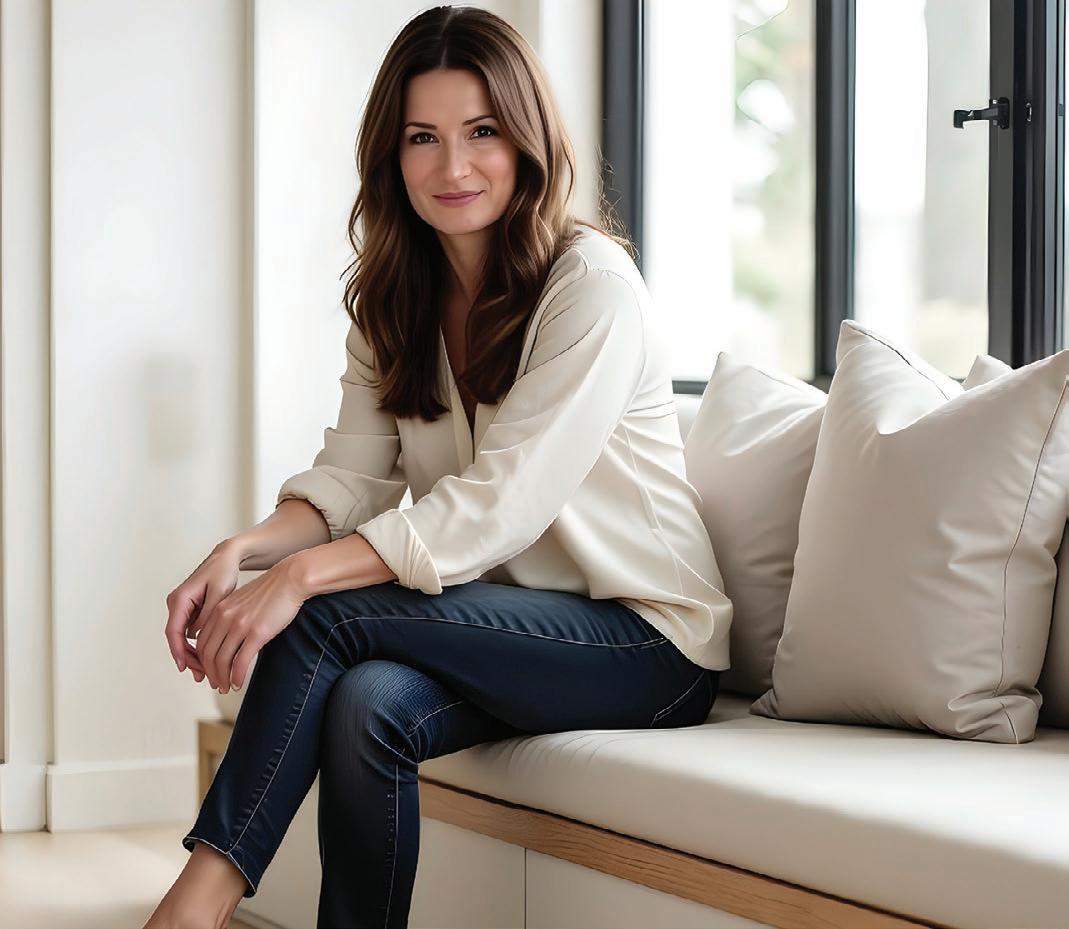

This shift has been driven by a confluence of factors: the rise in chronic illnesses like asthma, autoimmune conditions, and neurological disorders; the growing awareness of chemical sensitivity and the hidden toxins in everyday materials; and a heightened climate consciousness that has turned from just energy and carbon, but to the full lifecycle impact of the built environment.
What was once seen as fringe is now rapidly becoming a core competency. Clients are demanding it. Regulations are catching up. And forward-thinking professionals are embracing health-focused design as both a moral imperative and a competitive edge.
Annie has been immersed in the healthy building space for several years having trained as a building biologist, completing the Advanced Diploma of Building Biology through the Australian College of Environmental Studies (ACES); this is Australia’s only government-accredited Building Biology program, and I was trained directly by some of the field’s most respected pioneers, including Dr Nicole Bijlsma.
She’s since gone on to deepen her expertise globally, completing the BBNC New Build Consultant certification through the Building Biology Institute (BBI) in the United States, and currently undertaking advanced studies with the original German institute, IBN (Institute of Building Biology and Sustainability).
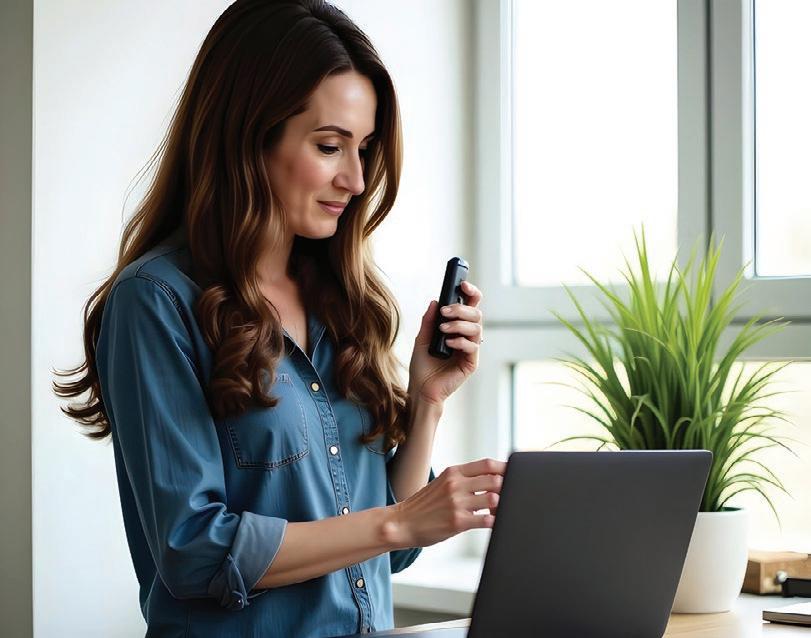
Alongside her building biology credentials, she holds certifications as a:
• Certified EMF Technician (ACES)
• Certified Mould Testing Technician
• Certified Geomancer trained in geopathic stress
• Certified Indoor Air Quality Technician
• Certified Passive House Consultant
• Living Future Associate
• Fitwel Ambassador
• Wufi Certified Moisture Analyst
• Certified Sustainable Design Specialist (Boston Architectural College)
• Healthy Materials Advocate (Parsons School of Design)
She uses her education to conduct environmental assessments in real homes and buildings using highgrade, industry-standard equipment.
Her education and practical advice have informed her developing a training package which is grounded in current, real-world application, not just theory.
To Annie this was a very natural progression in her career.
“It evolved organically during the planning of our renovation. We were planning the renovation of a 120-year-old home, and I quickly realised just how little transparency existed around the materials being specified — especially in heritage homes where you’re dealing with layers of old finishes, adhesives, and building techniques,” Annie said.
“As a Building Biologist, I was naturally asking deeper questions: What’s in this product? Will it off-gas? How will it affect indoor air quality or moisture dynamics?
“As I planned with our architect and builder, I found myself constantly sharing research, explaining risks, and suggesting healthier alternatives. What struck me was their genuine interest — but also their lack of access to clear, science-based guidance.
“They wanted to do better, but they didn’t have the tools or time to vet every material. I realised this wasn’t just our project-this was an industry-wide gap.”
That’s what inspired the Healthy Building Mastermind — a CPD-accredited training program that translates Building Biology principles into practical tools architects and designers can use on real projects.
The course covers how to vet materials for toxins like VOCs, formaldehyde, PFAS, and other hazardous chemicals using globally recognised frameworks such as HPD (Health Product Declaration), Cradle to Cradle, and Declare; how to assess indoor air quality risks, including off-gassing, ventilation design, and effective source control strategies; moisture dynamics, helping professionals understand how the building envelope, thermal bridging, condensation risk, and material selection influence mould prevention and long-term structural resilience; strategies to minimise EMF exposure in line with emerging Australian and global standards — an increasingly common client concern.
“Importantly, we link building biology principles with leading sustainable certifications like Passive House - bridging health, energy efficiency, and climate resilience into one integrated framework,” Annie said.

which includes working alongside international experts to improve hazard disclosure and ingredient transparency in building products.
“But the transformation goes beyond technical competence. My students gain the confidence to speak to clients about health in a clear, empowering, and grounded way. They learn how to advocate for better practices within their teams and supply chains, while also being given the structure and language to bring project teams on-site helping everyone from trades to consultants feel involved and invested in the journey.
“In many ways, it started with a renovation but it’s become a movement. A new way to design and build that prioritises human health as much as structural integrity.
“I believe health-focused design is no longer optional it’s the foundation of ethical, future-ready building.”
It is wanting a foundation of ethical, futureready building that inspired the creation of The Transparency Movement — to push for mandatory ingredient disclosure in building materials, support women in construction, and raise the standard across the entire industry.
“I founded The Transparency Movement to advocate for mandatory ingredient disclosure in building products — like what we already expect from food and cosmetics,” Annie said.
“Right now, most materials used in construction come with zero visibility into what they contain. From flame retardants to formaldehyde, the average homeowner or professional has no way of knowing what they’re living or working with.
“This movement is about systemic change. We push for clear labelling, greater accountability from manufacturers, and regulatory reform that puts human and environmental health first. It’s also about empowering professionals — giving them the tools and language to ask the right questions, cut through greenwashing, and lead with integrity.”
Annie is also deeply embedded in global advocacy and material transparency initiatives as a contributing member of the Health Product Declaration Collaborative’s Hazards Technical Subgroup (HPDC),
Annie believes education is the most powerful tool for change especially in an industry as complex and fast-moving as construction and design.
Her motivation came from a mix of frustration and hope — in seeing highly experienced professionals, architects, builders, designers unknowingly specifying materials that contained harmful toxins, because no one had taught them how to vet products properly.
“That’s when it clicked for me: we don’t just have a materials problem we have an information gap. People want to do better, but they’re overwhelmed by greenwashing, jargon, and inconsistent standards,” she said.
“It’s about more than just reducing harm it’s about shifting the culture of construction toward integrity, transparency, and long-term wellbeing. When you empower the people who shape our built environment, you create a ripple effect that can transform not just individual homes but whole communities.”
Annie sees health-focused design is not just the domain of architects it’s relevant to every professional who influences what goes into a building. That includes tradespeople and site supervisors, interior designers and joiners, building consultants, developers and planners, engineers and HVAC specialists, and even health practitioners interested in how buildings contribute to chronic illness and recovery.
“Every professional who embraces health-focused design becomes a catalyst for change — influencing dozens, if not hundreds, of homes, projects, and clients throughout their career. Whether they’re an architect drafting plans, a builder selecting materials, or a designer specifying finishes, their choices carry forward into the lives, lungs, and wellbeing of countless people,” Annie said.
“This is how we shift industry norms — from the inside out, by empowering just one professional with the knowledge and tools to prioritise health, we begin to raise the baseline.”
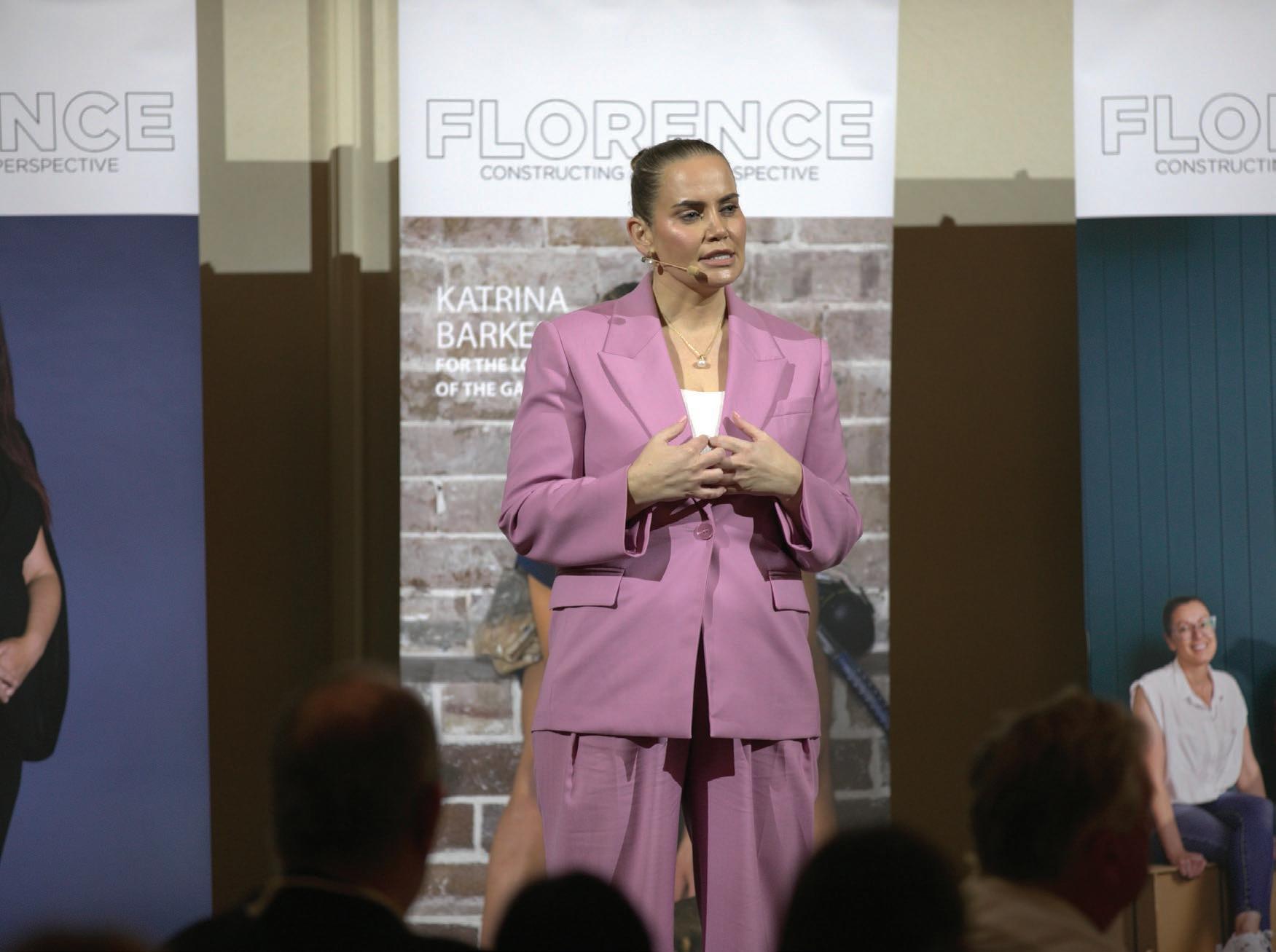
FLORENCE LUNCHEON
MASTER BUILDERS NSW MAY 2025



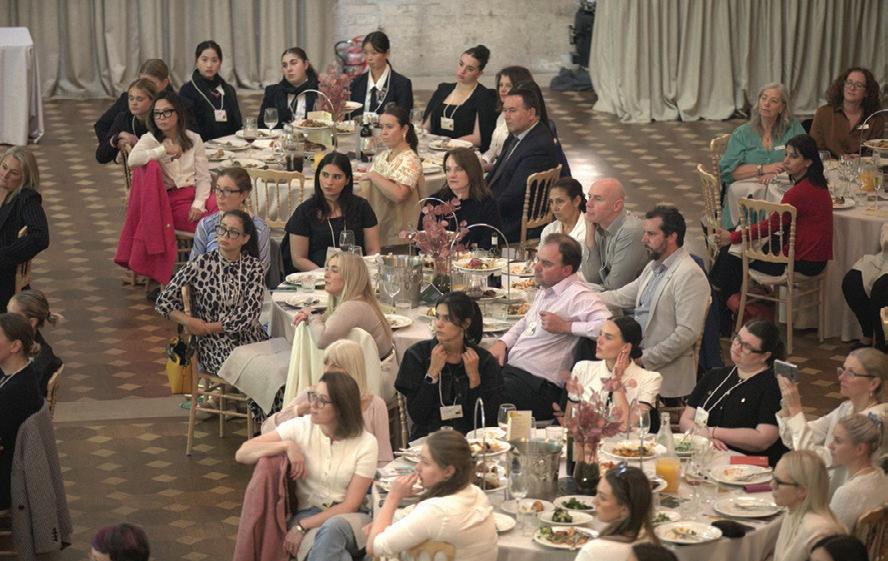
FLORENCE LUNCHEON
SPECIAL GUEST - JELENA DOKIC
Master Builders NSW May 2025
DIANA BRAJUHA
Florence is known around the world for its iconic landmarks: the Statue of David, the Ponte Vecchio, and the majestic Il Duomo, so it was a delightful surprise that our Florence luncheon, named not after the city, but in honour of the trailblazing Florence Taylor, was also graced by something or somebody iconic: a former global tennis superstar, Jelena Dokic.
Held twice a year, the Florence luncheons have become a highlight on our calendars.
Over the years, our luncheons have featured many remarkable women, including Dr Jana Pittman, Lisa Blair, and Liz Ellis. However as a tennis tragic, introducing Jelena Dokic on to the stage as our special guest for the May Luncheon was a particular joy and a moment I’ll never forget.
These afternoons bring together people from across the industry for meaningful conversations, inspiration and a true sense of our Florence community. I’ve been fortunate to be involved with Florence since the beginning, and that connection makes each gathering all the more special.
Jelena Dokic’s story is nothing short of extraordinary.
By 15, she was the World Junior No 1; by 16, she stunned the tennis world by defeating Martina Hingis at Wimbledon.
At her peak and at the age of 19, she rose to World No. 4, competing alongside the greatest names in the history of tennis.
However, it was her story off the court that truly moved us.
In her memoir “Unbreakable” and its documentary adaptation, Jelena speaks candidly about the abuse and pressure she endured from a young age.
Her courage and vulnerability have inspired so many, within sport and beyond; her message was one of resilience and reinvention.
To be in the company of someone like Jelena Dokic, who not only is a former International tennis star, but someone who can share such raw and powerful reflections on life, was very special.
I thoroughly enjoyed every moment.
See you at the next Florence Luncheon in August.
FLORENCE LUNCHEON
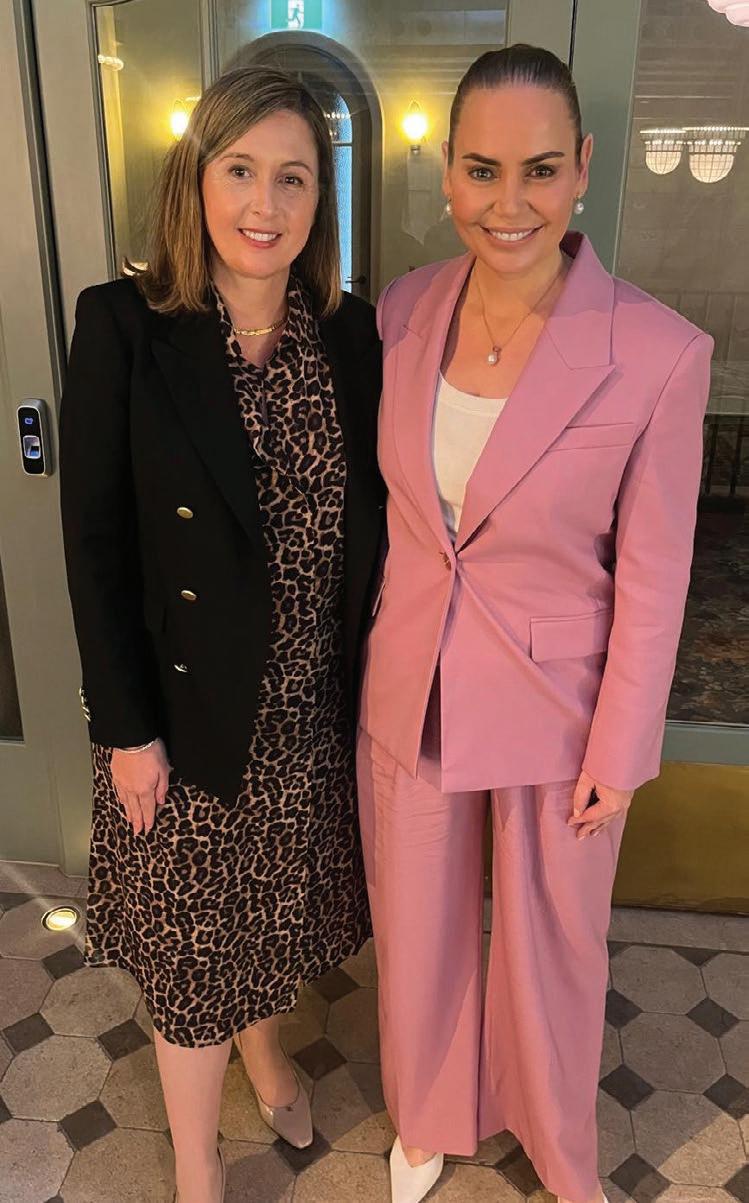



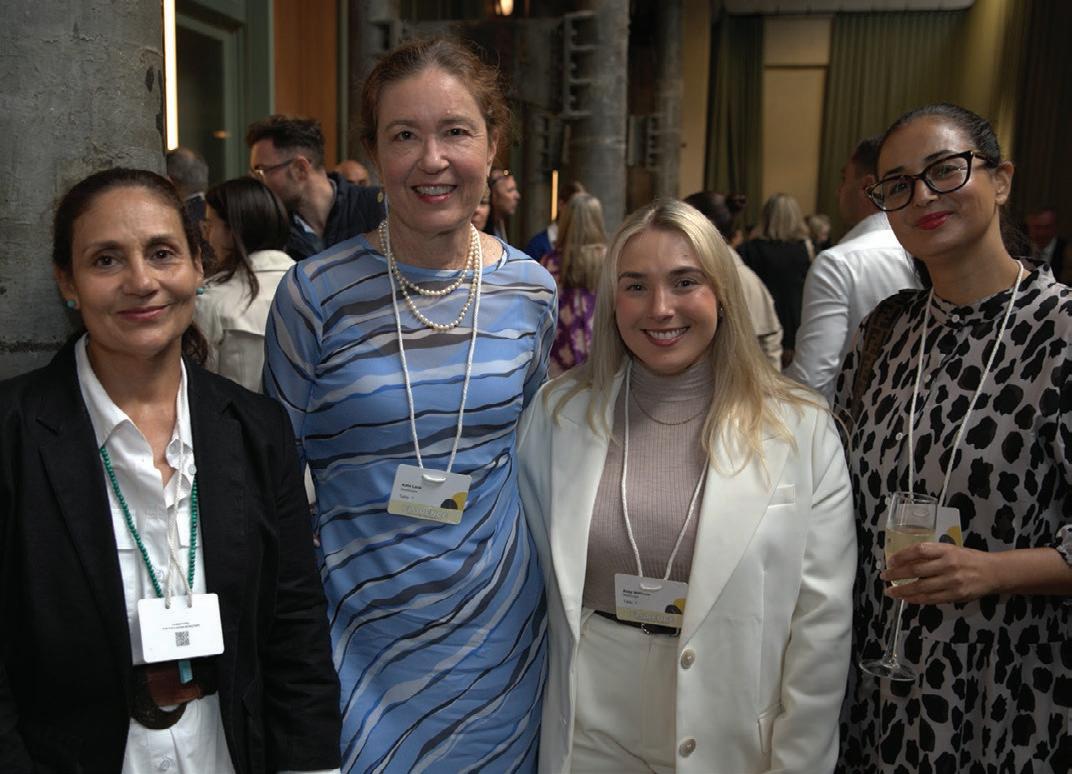
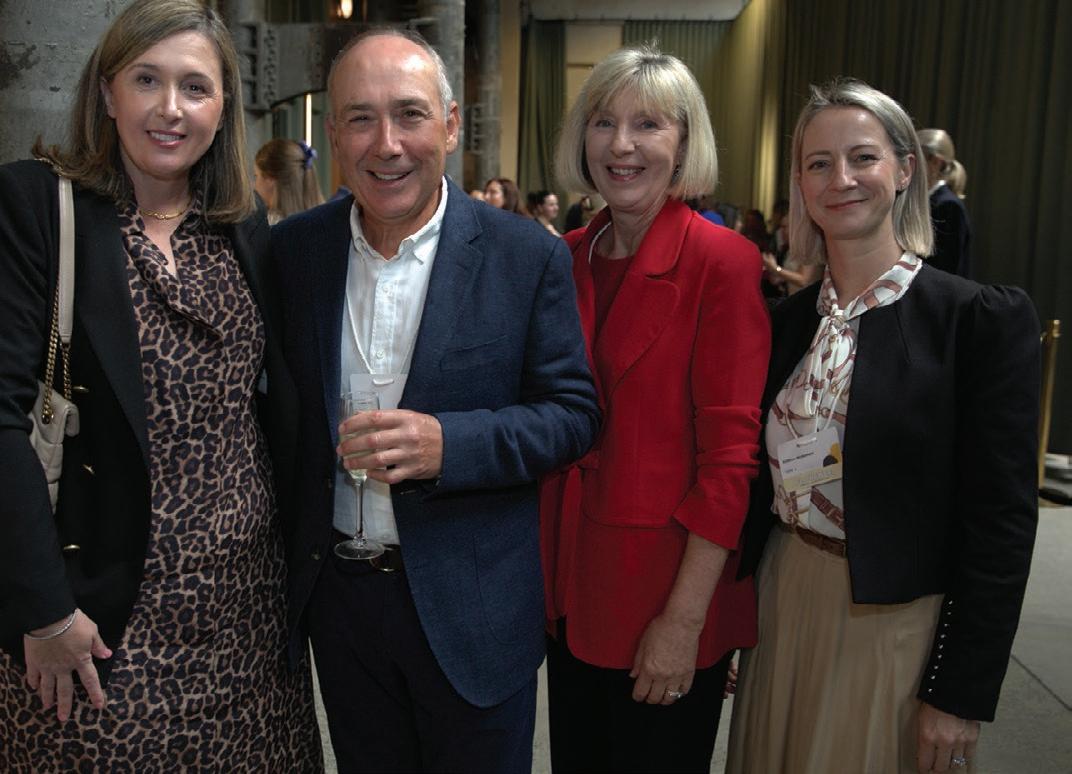
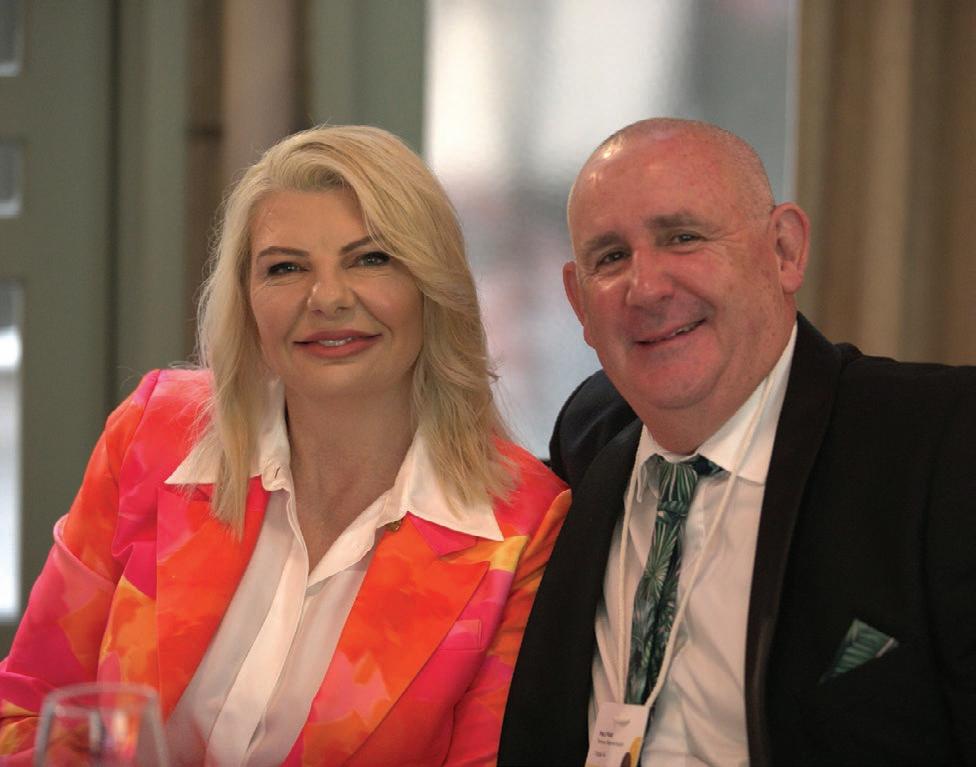
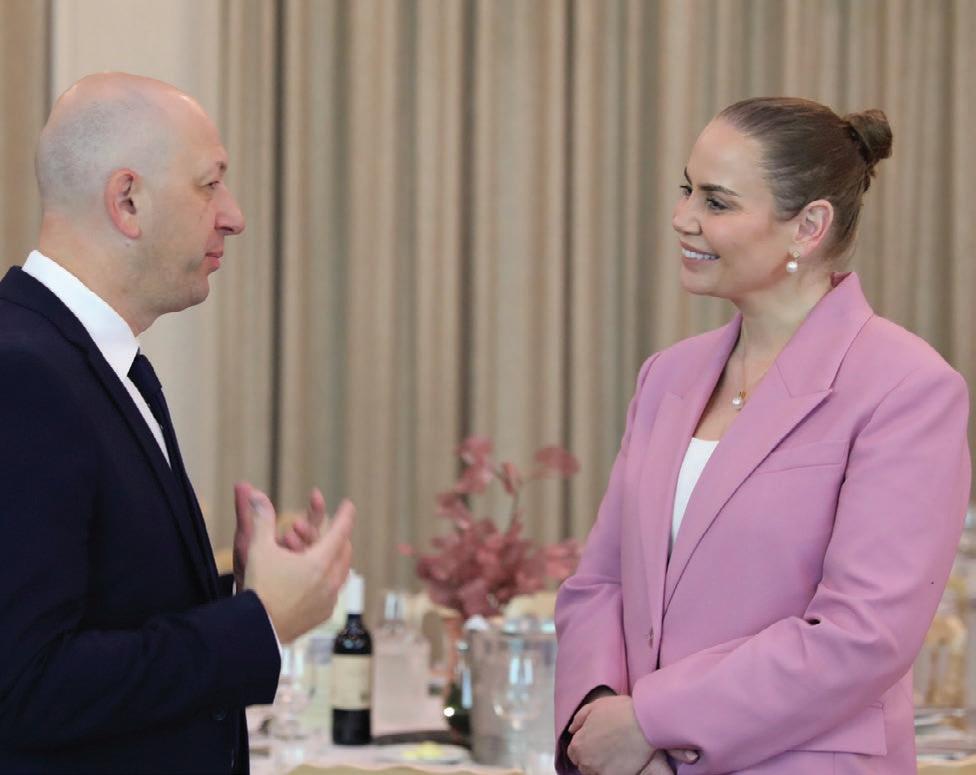

FLORENCE LUNCHEON
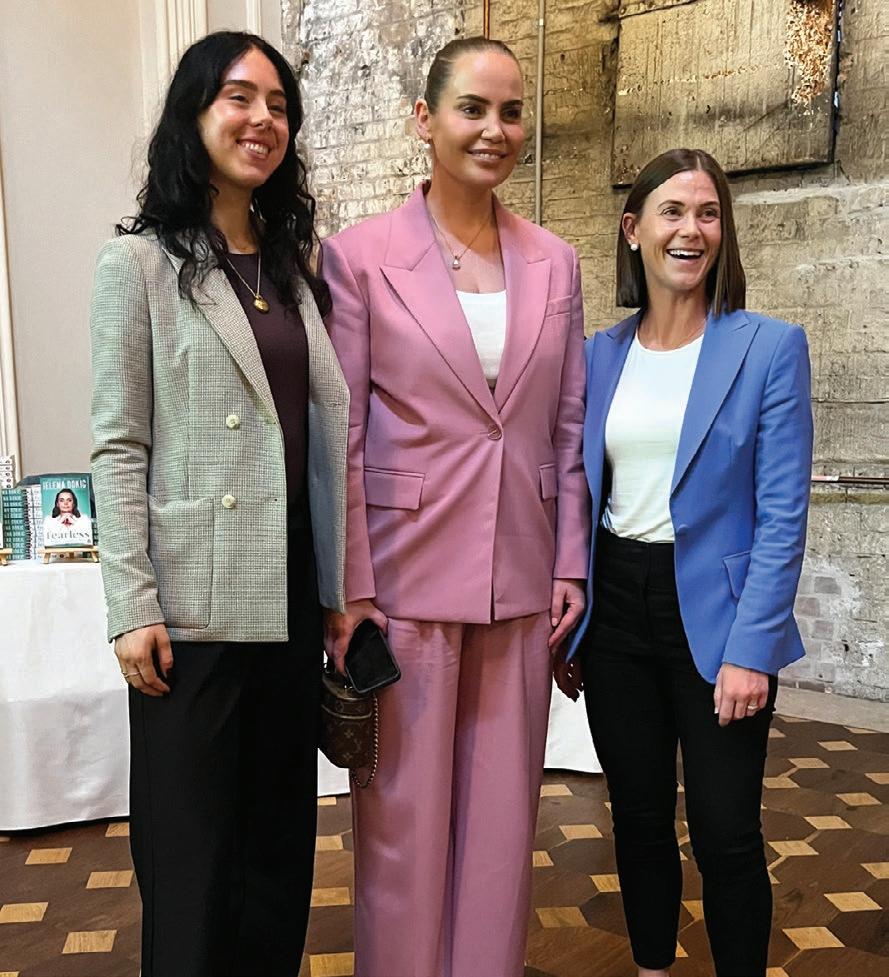


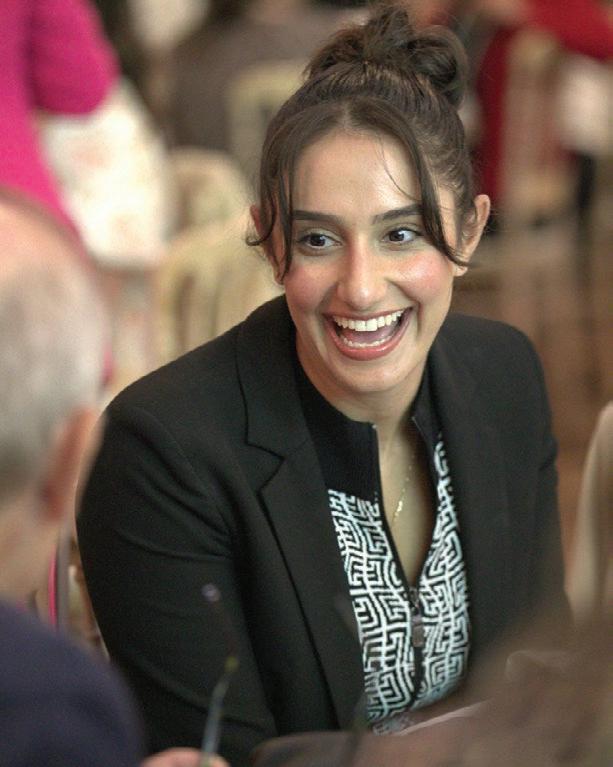
FLORENCE LUNCHEON
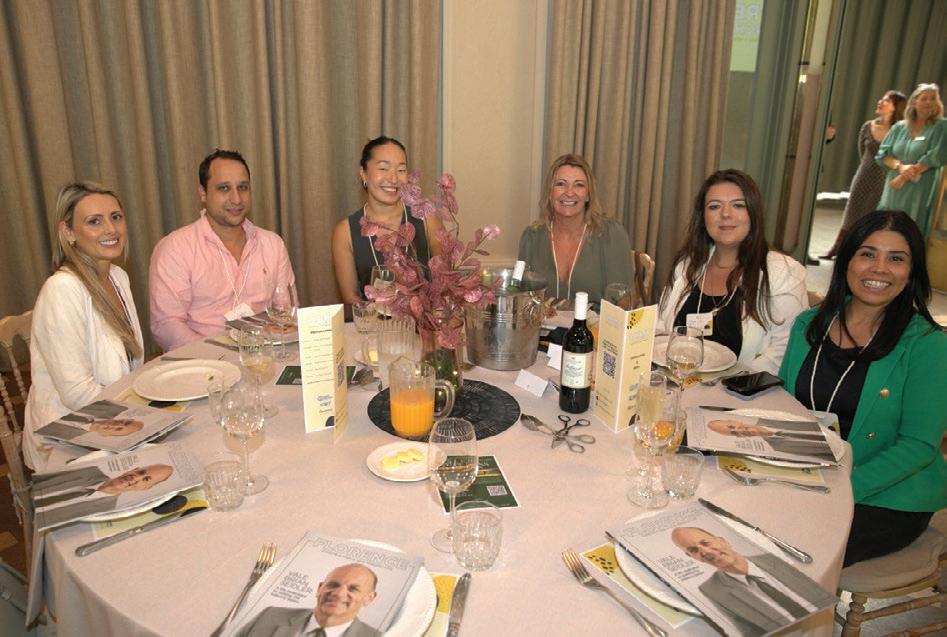
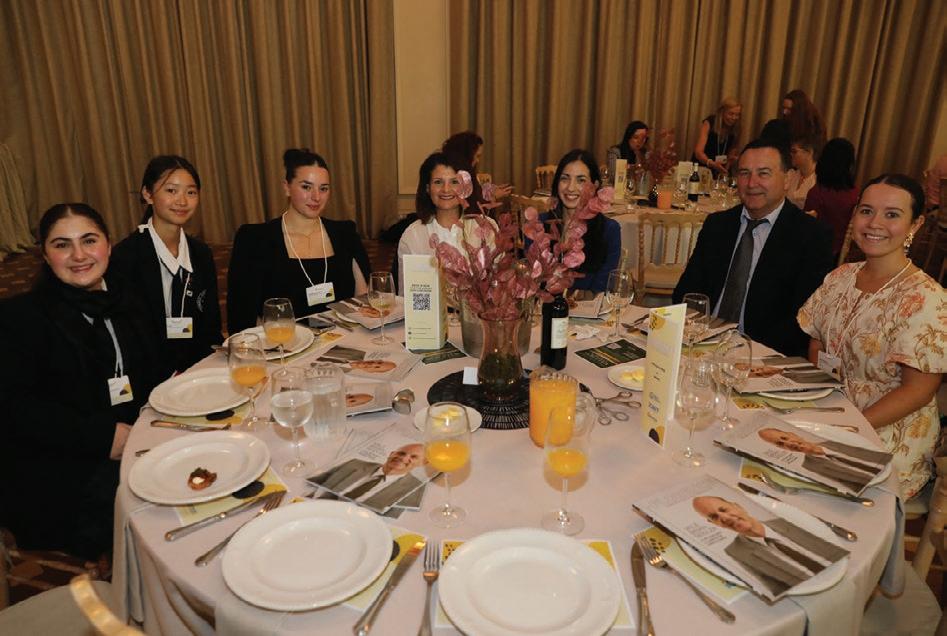
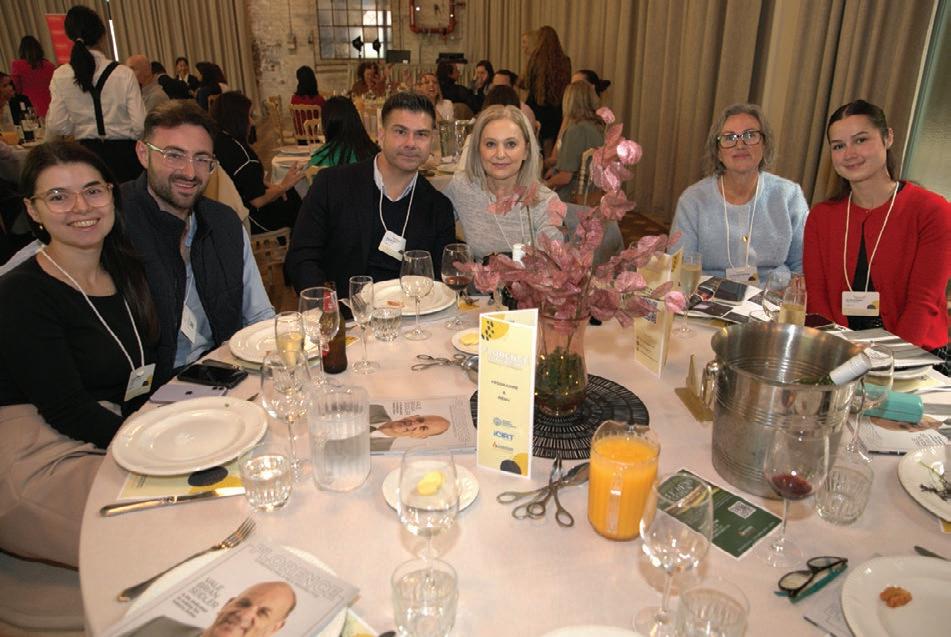


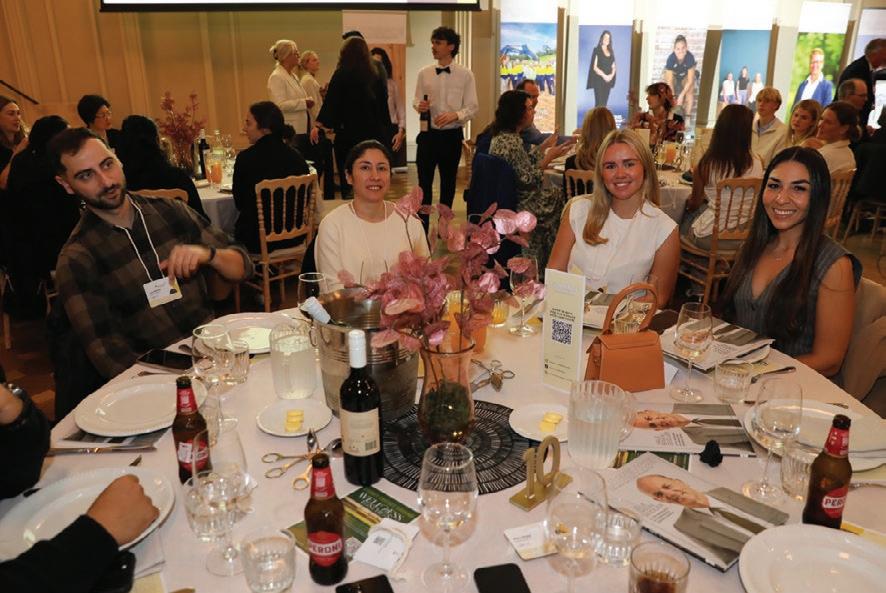

FLORENCE LUNCHEON

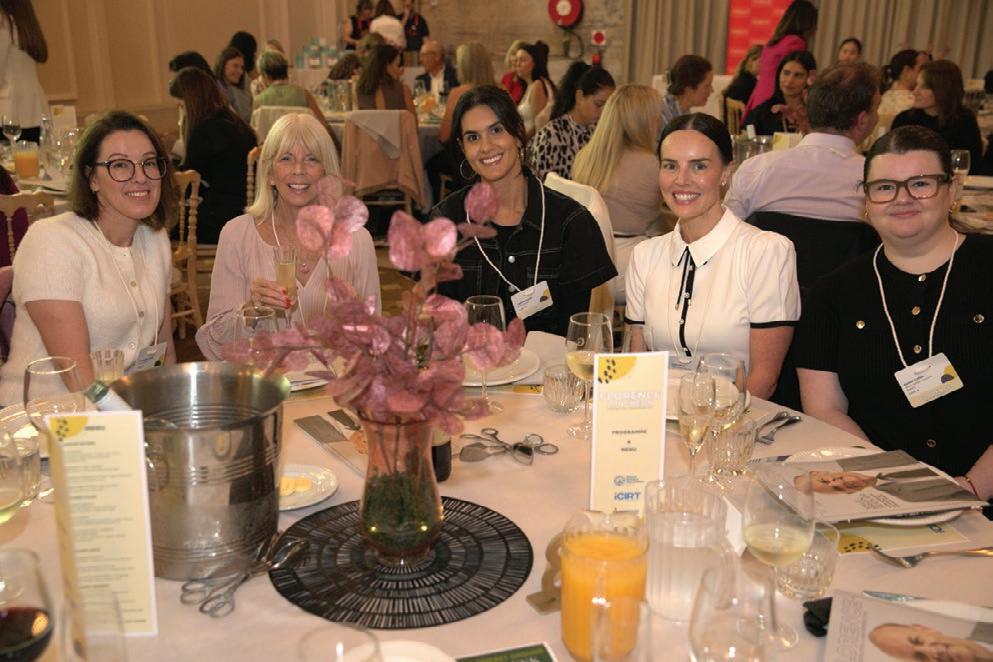
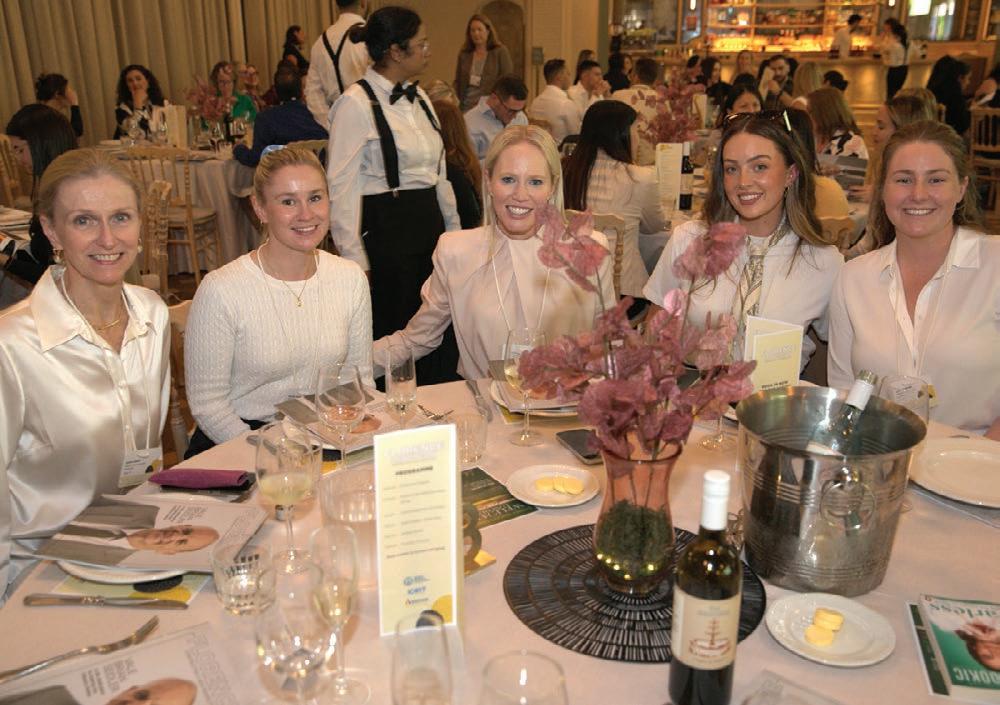
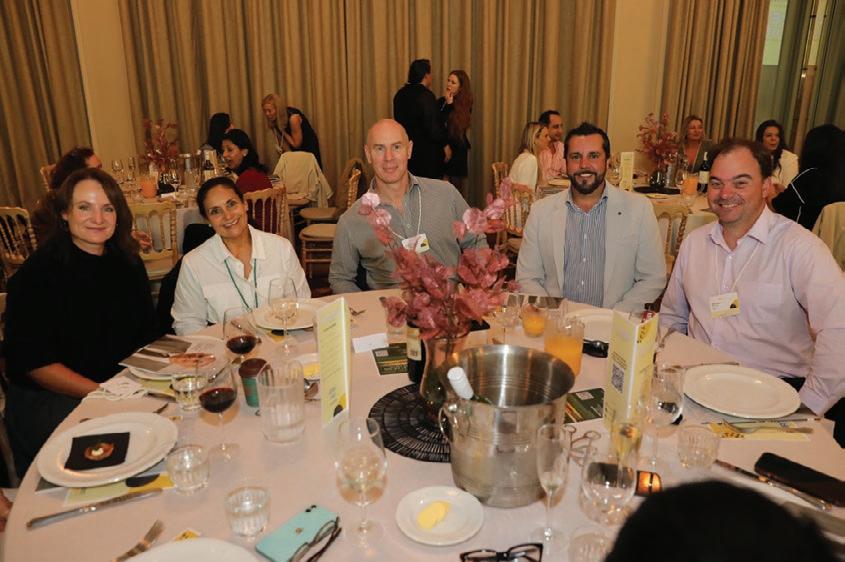
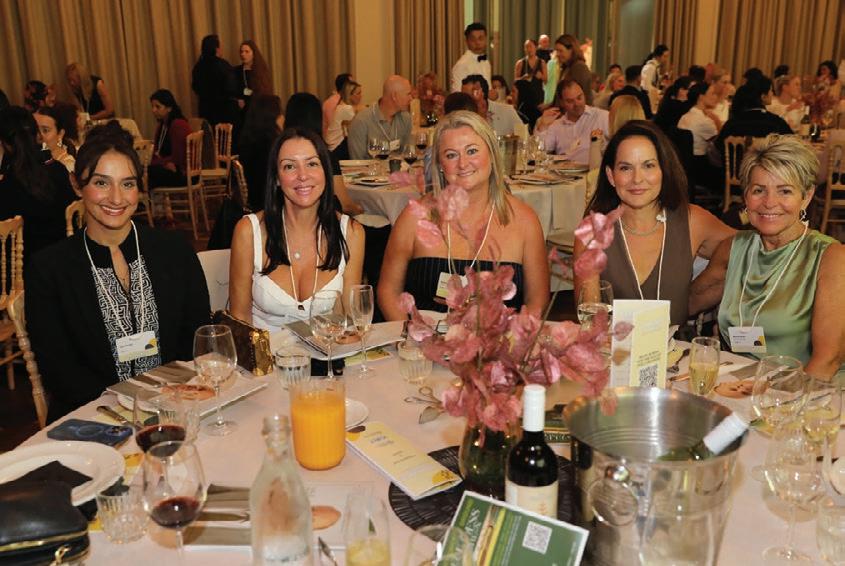
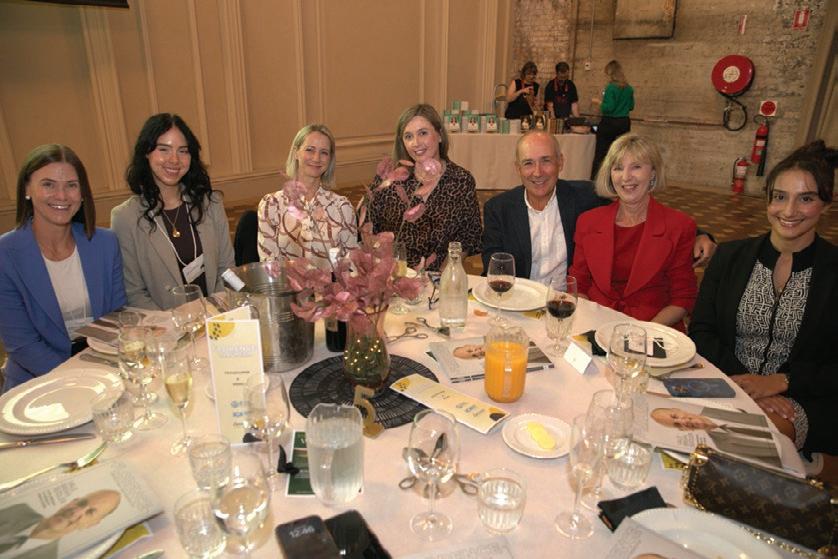

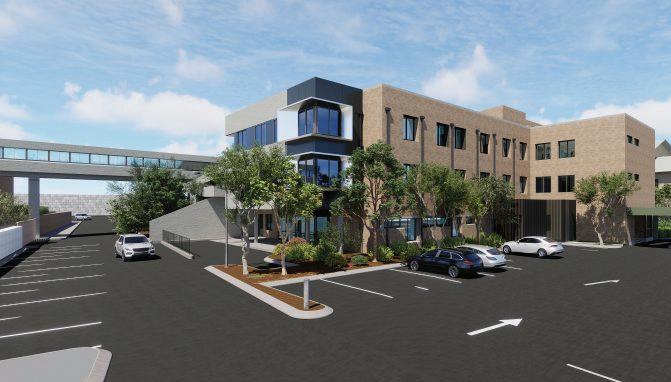
ELEVATING WOMEN ACROSS THE BOARD
ADCO commits to growing female participation in construction
ADCO is a leader in elevating the status and influence of women in Australia’s construction industry and they don’t just talk the talk; they walk the walk.
In 2020, the company introduced their Gender Diversity Strategy, and their managing director Neil Harding took the pay equity pledge as a demonstration of our commitment to gender equality.
ALYSSA WELKE
Subsequently, they implemented a range of initiatives across the business to achieve their strategic objectives including establishing a target of reaching 30% female participation by 2030. Their intake of graduates, apprentices, and cadets currently stands at 55% female, positioning them well to meet our 2030 goal.
As a result of dedicated initiatives and ongoing emphasis on fostering an inclusive workplace

culture, ADCO Constructions has seen growth in its female workforce. The company has executed targeted recruitment strategies designed to attract more women to the construction sector, including collaborations with educational institutions and industry organisations to promote construction careers to women.
Furthermore, ADCO maintains an inclusive working environment that values and supports diversity; programs such as mentorship opportunities, flexible work arrangements, and professional development offerings have significantly contributed to the retention and advancement of female employees within the organisation. Currently, 24% of their workforce is female, represented across various roles and functions, including positions such as state manager in Western Australia.
The company has successfully run a Girls Who Build program aimed at secondary schools, which was supported by our Women of ADCO program which is chaired by our owner Judith Brinsmead AM and has been operating for over 15 years.
Additionally, ADCO offers mentorship programs, professional development opportunities, and flexible working arrangements to support women in their careers.
The company’s commitment to creating an inclusive and supportive work environment has also been a key factor in attracting and retaining female employees.
The Women of ADCO (WoA) program is a longstanding initiative dedicated to supporting and empowering female employees across our business.
Formed more than 15 years ago by our owner and Chairman Judith Brinsmead AM, the program was created to ensure fair and equitable opportunities for women and to foster a truly inclusive workplace culture.
Today, WoA is a formalised and integral part of the ADCO way of doing business, with a clear focus on mentorship, professional development, and career advancement for women in the construction industry.
At its core is the National Women of ADCO Executive Board, established in 2019, comprising state-based representatives, national team members, senior leaders, and male allies — working together to champion gender equality.
Each state-based WoA cohort meets quarterly to identify and progress initiatives that are then elevated to the WoA Executive Board.
From there, key proposals are presented to ADCO’s
National Leadership Team for implementation, ensuring alignment with business-wide goals.
The program’s objectives are formally set out in the WoA Charter, aligning closely with ADCO’s corporate vision, values, and strategic plan. These include providing leadership and support for women; influencing company policy; promoting national dialogue and collaboration across the industry; and ensuring all employees are treated fairly and equitably within a strong, united “one team” culture.
Through WoA, ADCO proudly continues to promote diversity, inclusion, and meaningful opportunities for women to thrive, reinforcing our commitment to building an industry that better reflects the communities we serve.
With a focus on increasing participation of women, and retaining them, it’s no surprise they have high numbers of women working on job sites across the nation.
The South Metropolitan Health Service Fremantle Hospital 40-Bed Mental Health project is one of these sites; women make up 40% of the workforce on the $49 million project.
The redevelopment of this unit is poised to significantly enhance mental health services in the south metropolitan area.
The project encompasses internal and external demolition works, the fit-out of an existing threelevel building, rooftop plant room and services reticulation, external courtyard works, landscaping, and new external pump room with associated tank works.
ADCO’s commitment to mental health extends beyond construction projects; the Fremantle Hospital Mental Health Project aligns with ADCO’s values, passion, and dedication to making a positive impact on mental health and well-being.
Apprentice site supervisor Emma Fensom is one of the women working on this project.
Emma was working as a plumbing apprentice for a different company when she found out about the ADCO apprenticeship program.
She was intrigued, as she wanted to gain more experience to become a well-rounded plumber and felt the program provided the structure and mentorship the help her achieve this goal.
The program allows her to complete her trade apprenticeship while simultaneously training to become a site supervisor; a career pivot which appealed to her.
As an apprentice site supervisor, she benefits from the variety and balance of on-site and office work.
“I get to learn about and oversee all trades, and how they come together to create a functional structure which I find very exciting,” Emma said.
“I also like getting to know the tradies and how I can help them, the site team is great to work with, and I really appreciate the inclusive, flexible workplace culture at ADCO.
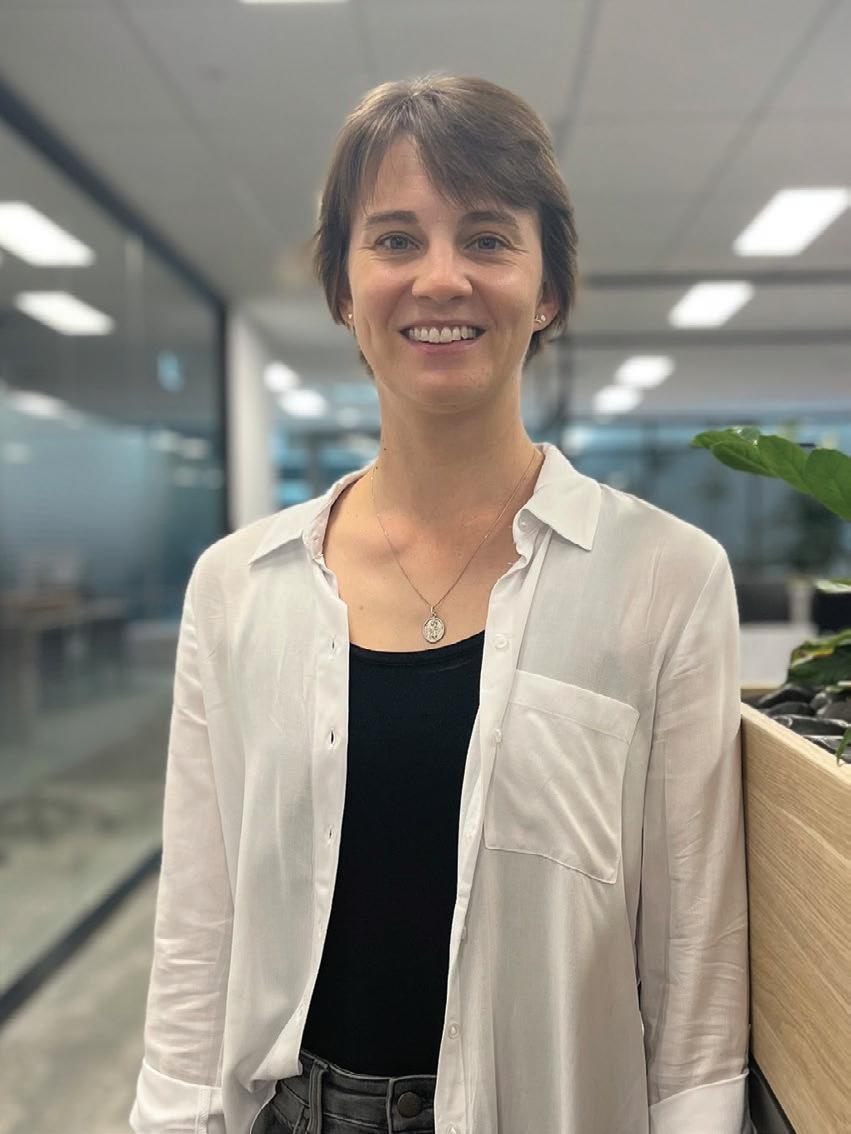

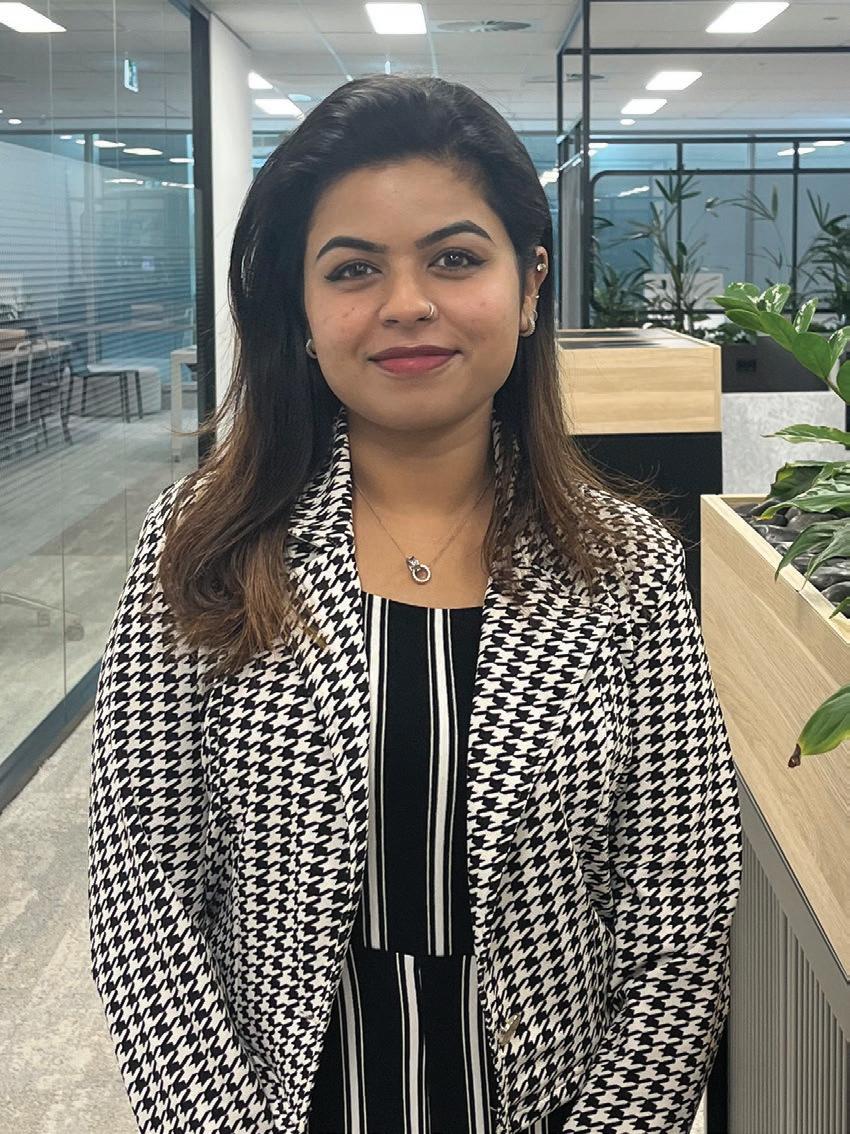
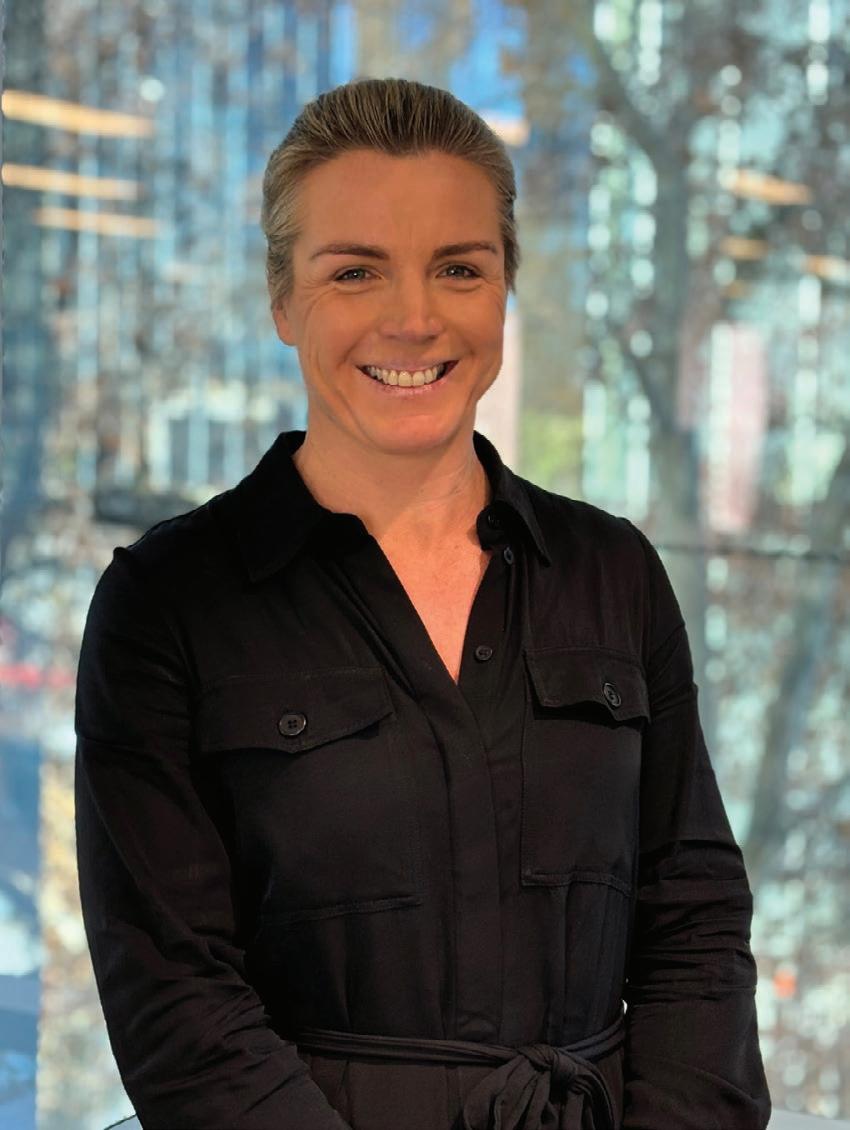
“A construction site is a very dynamic environment and there are many stakeholders involved. It can be difficult to co-ordinate and attend to the needs of all parties to achieve the required outcomes. Communication is key but it’s not always easy.”
Fremantle Hospital Mental Health Project is her first project with ADCO, and a great introduction; in the future she would like to work on a new build project to further increase her exposure to the industry and gain more confidence as a site supervisor.
“I’m interested in furthering my education, perhaps studying for a Diploma in Building and Construction and becoming a registered builder,” she said.
“I am planning to move over east in the coming years and am excited to work in a different state and expand my network.”
Emma has been taught that there are no stupid questions and that hard work pays off.
“My Dad always says ‘never do half a job. If it’s worth doing, it’s worth doing well’. And no-one can ask you to do any more than your best. Both apply to work and life,” she said.
As a young woman in the industry, she said networking and connecting with women further along in their careers is invaluable and do not be afraid of “failure”.
“Every attempt is a part of your journey, and you will always learn something from each experience,” she said.
— like RFIs, shop drawings, and quality checks — have a real impact on how smoothly the job runs,” she said.
“I also enjoy working closely with different trades, consultants, and the client team.
“There’s always something new to learn, and every challenge gives me a chance to grow. Being part of a challenging healthcare project like this one makes the work feel more meaningful.”
She said ADCO offered her the chance to work on complex, meaningful projects; and the opportunity to be part of a team that’s professional but also supportive.
“The Fremantle Hospital project really stood out because of its technical challenges and the level of co-ordination it requires, which is something I enjoy,” she said.
“One of the main challenges has been managing the constant flow of information and making sure it gets to the right people at the right time.
“With so many moving parts … it can be tricky to keep everyone aligned.
AS A YOUNG WOMAN IN THE INDUSTRY, NETWORKING AND CONNECTING WITH WOMEN FURTHER ALONG IN THEIR CAREERS IS INVALUABLE AND DO NOT BE AFRAID OF “FAILURE”.
“Be open to opportunities, keep trying jobs/roles until you find something you like (trades are always an excellent option for women).
Psychological safety is very important. Find a workplace that has a good culture, is flexible to your needs and treats you with respect.”
Project Engineer Vaishnavi Vyasan is responsible for managing RFIs, shop drawing reviews and submissions, co-ordinating sample approvals, and ensuring compliance with project specifications on the project.
As part of the role, she also oversees the platforms for documentation and quality control, and trains subcontractors to use it; additionally she coordinate fortnightly client meetings — updating all relevant project registers such as Request for Information (RFI) logs, sample submissions, hold points, and workflows — ensuring smooth communication between stakeholders like the Department of Finance, SMHS (South Metropolitan Health Service), the superintendent, and consultants.
Vaishnavi said she enjoyed being involved in the day-to-day co-ordination on site and seeing the work come together in real time.
“It’s rewarding to know that the details I manage
“Another challenge on this project is working around live existing services and areas with asbestos, which has caused delays and made the sequencing more difficult.
“I also liked that ADCO encourages learning and gives everyone the chance to take ownership of their roles. It felt like the right place to grow and contribute at the same time.”
With a goal of eventually stepping into a project manager role, Vaishnavi said the experience she’s gaining on this project was invaluable, both technically and commercially.
She wants to become more involved in the commercial side of projects to better understand contractual obligations, cost control, and overall project risk.
“My goal is to become well-rounded — not just strong on the site and technical side, but also confident in managing the financial and contractual aspects of a project,” she said.
“The next step for me would be progressing to a senior project engineer, then into an assistant project manager, and ultimately a project manager role.”
Vaishnavi has taken the advice to be patient and persistent into her role and life, and when things don’t go to plan, she focuses on staying calm and learning from the challenges thrown her way.
“Professionally, the best advice I’ve received is to always communicate clearly and proactively,” she said.
“Whether it’s with the team, consultants, or clients, keeping everyone informed and addressing issues
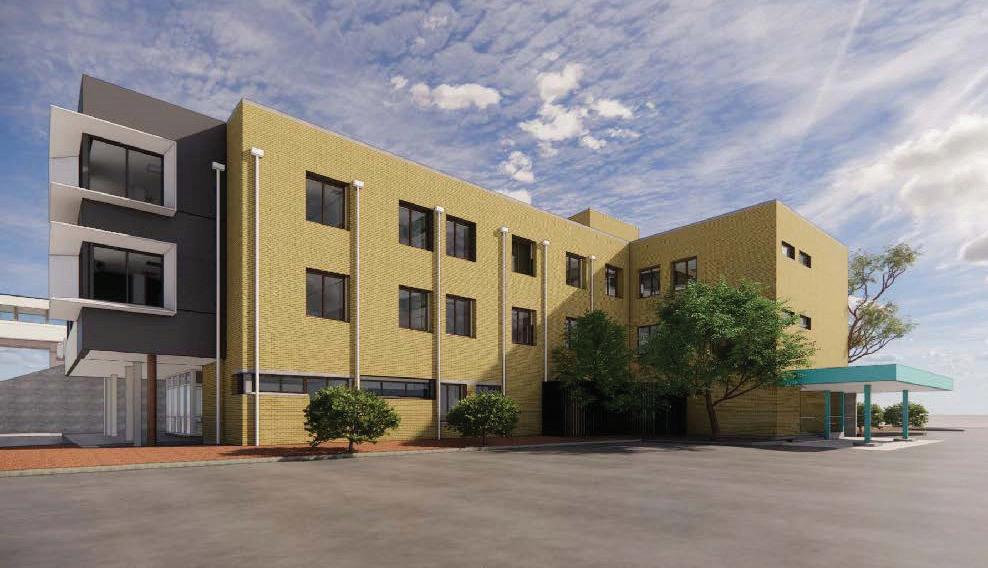
early helps avoid misunderstandings and keeps the project running smoothly.
“Attention to detail is also very important while dealing with existing live services.”
Her advice to women wanting to get into construction is to believe in themselves and keep going, as she loves working in the construction industry.
“If you work hard and keep learning, you’ll do well. I feel respected and enjoy what I am doing,” she said.
“Don’t be afraid to ask questions or speak up. Find people who support you and help you grow. There’s a good place for women in construction, and your skills matter.
“Don’t let all the challenges people talk about put you down. Once you get going and find your flow, it gets easier, and you’ll reach where you want to be in your career.”
Shana Keam, who is an assistant project manager, and is the acting project manager for the Fremantle Hospital Mental Health Redevelopment project.
She thrives on the challenge of her job and that no two days are the same.
“Even when it’s tough, I enjoy the challenge. It pushes me outside of my comfort zone and forces me to back myself and be the best I can be on any given day,” Shana said.
“The intensity (can be challenging). You need to be switched on 100% of the time.
“The project is complex, so I’m constantly balancing support for the team — staying upbeat and solutionfocused — while managing the day-to-day pressures and problem-solving that comes with the job.”
With a goal of being one of the first female Construction Managers at ADCO, Shana wants to show it’s possible and to help other women follow the same path.
She believes ADCO is a great fit for her because of the culture, reputation and values of the company.
“I was particularly inspired by the fact that it’s a proudly Australian, family-owned and operated business that genuinely supports its people,” she said.
Shana has taken to heart the advice from Liz Ellis at the May 2024 Florence luncheon of “if it is to be, it’s up to me”.
“(My advice is) be bold. Ask the questions. Take the opportunities. You don’t have to have all the answers — you just need the courage to start, and you might be the only woman in the room sometimes — stand tall anyway.
“You deserve to be there, and others will follow because you led the way.”
As safety advisor on the project, Stacey Jones has learnt a lot about the demolition of old buildings and asbestos management which has been very interesting.
“YOU DESERVE TO BE THERE, AND OTHERS WILL FOLLOW BECAUSE YOU LED THE WAY.”
“In general, I enjoy working in health and safety because


there is so much to learn, and the legislation is always changing which I need to be across and apply to my role,” Stacey said.
“I have been given this amazing opportunity to work part time, but this is challenging because I am only on site three days a week and it took me a while to find the balance.
“Construction hours are long, and the job doesn’t stop on my days off, so I have had to learn to manage my time well.”
Stacey said the culture of ADCO, despite being a major construction firm, still feels like a small family and she hopes to progress and become a senior safety advisor.
Stacey takes the advice of always backing herself in her career and wants other women considering construction as a career to do the same.
“If you’re considering it, give it a go and persevere,” she said.
The inclusion of women at ADCO Constructions brings significant advantages, such as diverse perspectives and innovative approaches.
Their distinct backgrounds and insights contribute to enhanced decision-making and effective problem-solving within the organisation.
In addition, balanced gender representation fosters improved team dynamics and collaboration, resulting in more efficient and successful project outcomes.
Women also support the company’s dedication to equality and social responsibility, strengthening its reputation and supporting efforts to attract highcalibre talent.
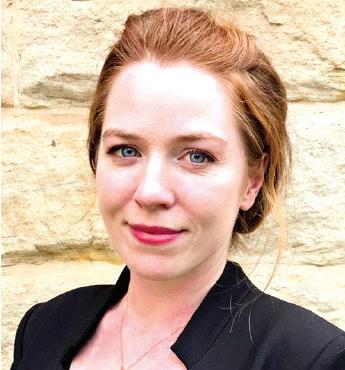

HANNAH SHEPHARD Senior Solicitor, MBA Lawyers
SPEAK UP
Amrita Goel, director of AG Law Pty Limited t/a S&R Legal and consultant at Robinson Solicitors, chatted with Hannah Shephard from MBA Lawyers.
HS: How long have you been involved in the legal and construction industries?
AG: I completed my law degree in India in 2008 and started working in the construction industry in India in 2008. When I arrived in Australia in 2013, it was only natural that I continued working in construction law while I prepared to be readmitted to practice in Australia. I was admitted as a practitioner in Australia in 2015.
I have since consistently and exclusively practised in the area of construction law since 2013. To gain hands on experience, I decided to work in boutique law firms which specialised in construction law. I worked with three different law firms, before I started my own firm in 2024. I also consult to a law firm (who I worked with in the past) which specialises in construction law.
HS: What types of matters do you deal with?
AG: I deal with all matters involving building and construction law. These involve disputes,
litigation works, adjudications under the Building and Construction Industry Security of Payment Act, NSW 1999 and construction contracts. My matters involve both residential and commercial works, and range from lower dollar value matters through to multi-million-dollar issues. While I primarily work on projects all across Sydney, I have worked on multiple adjudications under the Security of Payment Act across Australia, including in Queensland, Victoria and Western Australia.
HS: What are the “pros and cons” of being a construction lawyer?
AG: In construction law, each project is unique and presents a new learning opportunity. For instance, while working on a matter concerning a waterproofing defect, I learnt about the various nuances of undertaking waterproofing works. Working in construction law for over a decade has given me an immense appreciation of the amount of work and design that goes into building a structure. When working on construction contracts and assisting with contract administration, I particularly enjoy watching the project actually being built in real time.

The downsides of being a construction lawyer is the demanding nature of the practice. This however is also true in many other areas on law and not necessarily specific to construction law. What I do find, however, is that the construction industry can be quite aggressive.
HS: How has being a woman in law changed since you started out as a lawyer?
AG: When I started out as a lawyer in construction law, I was one of the few women of colour in the building and construction directions list run every Friday in the Supreme Court of New South Wales. Over the years I have seen a large mix of women solicitors, barristers and now even judges in the court room. It is great to see that not just women, but women of diverse backgrounds and ethnicity are now actively working in the profession and in senior roles.
There has also been a massive shift in work culture pre COVID-19 and post COVID-19. Flexible working hours and working from home was not spoken of prior to COVID-19. Now it is almost a given in most law firms. The use of technology in the post COVID-19 world has completely changed the way the legal industry works. I cannot think of more than two to three face-to-face meetings

I would have had with a client since COVID-19. All meetings are now virtual. Even Court work is now majorly online.
I think these factors have worked particularly well for women in law and especially those who are mothers, like myself. The flexibility allows me to deal with a toddler throwing a tantrum at 8.30am and not worry about being “late to work”. I have the ability to log in from anywhere and attend a meeting and not worry about missing or being left out of an important meeting. This allows me to be a present mum (with less “mum guilt”) and a full-time lawyer. The juggle is easier in the post COVID-19 world.
HS: Have you noticed over the years that women have become more involved in the construction industry?
AG: 100%. There are plenty more women now, not just in the legal industry but also in construction companies. I have, and am, working with some fantastic clients and experts who are women.
HS: What is your proudest moment of being a construction lawyer?
AG: This is hard to say, but being recognised in Doyles Guide NSW as a “rising star in construction law”, consecutively for the last three years since 2023 has definitely been a matter of pride.
Another moment I am particularly proud of is when I started by own practice, S&R Legal.
HS: What has been one of your biggest challenges as a construction lawyer?
AG: The challenge, especially in early days, was to get a handle on the technical facts of each matter. Each construction dispute is unique and has its own unique technicalities. One matter may concern a structural failure of a steel beam, while another matter may involve a delay to the critical path of the project. It is critical in construction law to have control over the facts of the matter and be across the project details. This takes time and can be challenging.
HS: What advice do you have for women seeking a career in the construction/legal industries?
AG: You will often have to work harder than your male counterparts. Speak up and don’t settle for less. If you don’t ask, you don’t get.
Specific legal advice should be sought for individual circumstances.
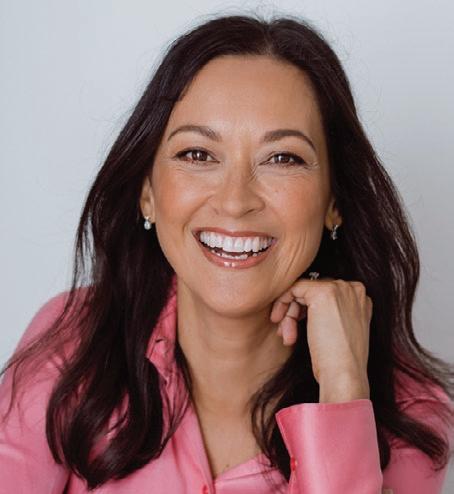
JANE LANGOF
A column about the power of energy, intention and design – and how our built environment shapes the way we live, work and feel.
THE WELLNESS SHIFT IN HOME DESIGN

We build spaces to shelter us, support us, and reflect who we are. But the spaces that truly help us thrive offer something more. They hold a quality that’s harder to define yet instantly felt: energy.
The energy of a space influences how we show up each day. It can calm or overwhelm, uplift or drain. As someone who works at the intersection of design and energy, I’ve seen beautiful homes that leave people feeling drained or unsettled – simply because the energy isn’t flowing well.
As the wellness movement continues to grow, more people are looking beyond aesthetics to how their homes make them feel — and that’s where Feng Shui has an important role to play.
Feng Shui is often misunderstood and misapplied. People think it’s about trinkets or superstition, but it’s really about energy flow and alignment of function, form and feeling. It’s about designing in a way that supports the people who live and work in a space, and aligns with their goals. When you walk into a home that feels good, chances are it’s ticking more than just aesthetic boxes. At its core, Feng Shui supports wellness on a physical, emotional, and energetic level.
The demand for homes that support wellbeing is backed by data. According to the Global Wellness Institute, wellness real estate is now a $438 billion industry, with demand for homes that support physical and mental health increasing each year. Australians are now spending more than $10 billion annually on wellness, with growing awareness of
how our spaces impact our quality of life. This shift is redefining the role of design and construction professionals.
Our spaces are constantly shaping how we feel and function, whether we realise it or not. A welloriented home can increase natural light, reduce stress and enhance the way we experience time at home.
Access to views, greenery and airflow can shift our mood and support healing. A bedroom layout can affect how well we rest or connect with a partner. Even the position and layout of the front entrance can influence how supported we feel or how opportunities flow into our lives. These design decisions carry more weight than most people realise.
This is where design becomes something greater. It’s not just about structure and floor plans, but how people feel in the spaces we create. We’re influencing how people live, feel and function every day.
That’s why the contribution of women in construction and design matters. We often approach design with both logic and intuition, balancing functionality with the emotional experience of a space.
It’s the yin to the yang in how we shape space — and it’s needed now more than ever.
Jane Langof is a Feng Shui Master, Florence Ambassador, and Author of Feng Shui: A Homeowner’s Guide to Abundance.
CONSTRUCTING A NEW PERSPECTIVE
LUNCHEON
FLORENCE celebrates the achievements of women and the importance of gender diversity in the construction industry. This luncheon connects, inspires and elevates women in construction.
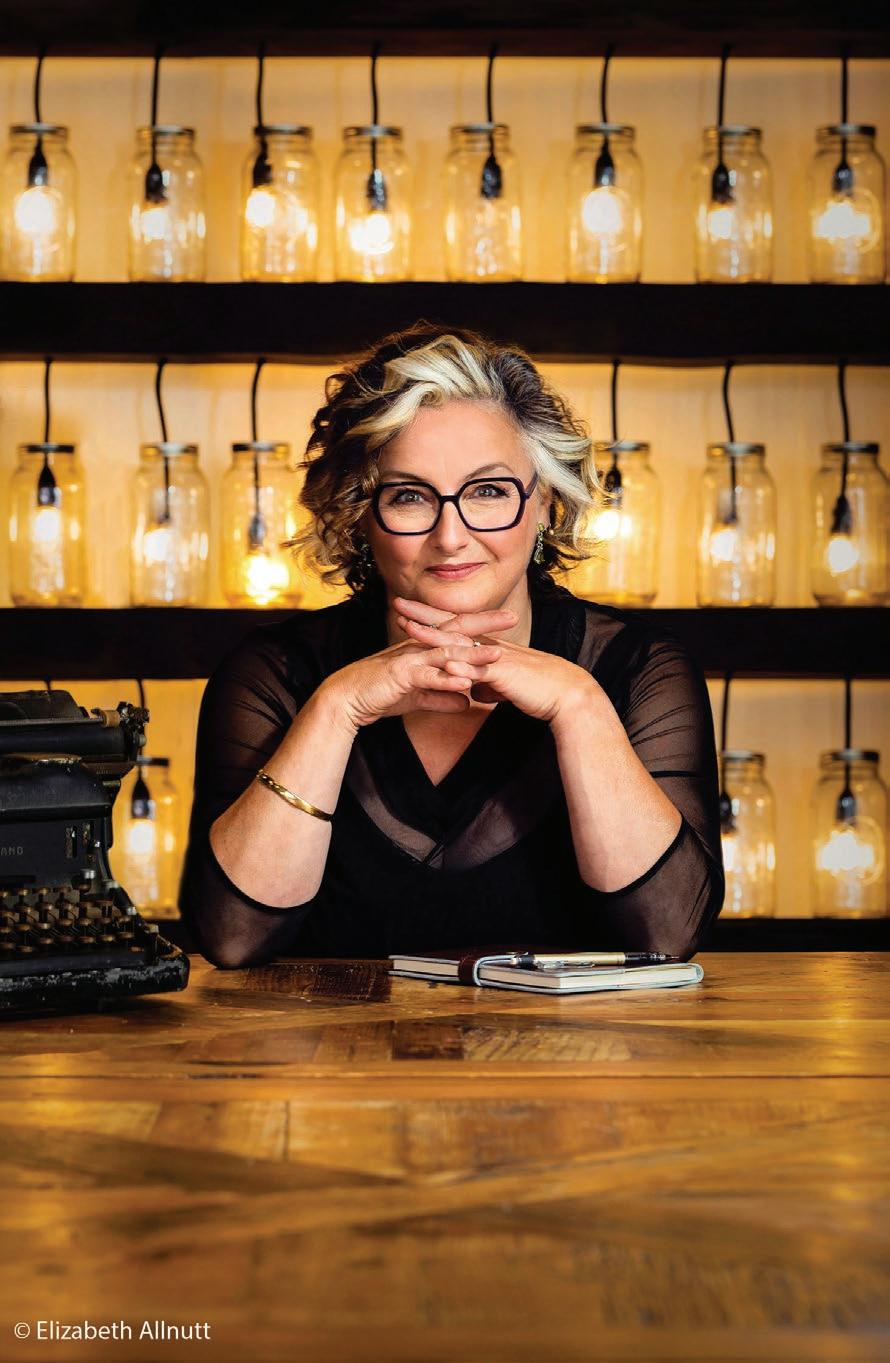
JULIE GOODWIN
In 2009, Julie Goodwin became a household name overnight when she was crowned Australia’s first ever MasterChef winner.
Thrust into the limelight, “Australia’s Favourite Mum” became the Julie Goodwin brand; TV shows, best-selling books, radio, appearances, columns and endorsements were all to follow.
Viewers loved her honesty, sense of humour and humble cooking style. When her first cookbook, Our Family Table was published, she became one of Australia’s best-selling authors; her book held the number one slot in the book charts for over 10 weeks.
monthly columnist for the Australian Women’s Weekly.
She has published seven cookbooks, Our Family Table, Heart of the Home, Gather, $20 in 20 minutes, Homemade Takeaway and The Essential Cookbook and CLASSIC.
In 2015, Julie made the gutsy move to head into the South African jungle on I’m A Celebrity… Get Me Out of Here! and in 2016 Julie she joined the Central Coast’s Star 104.5FM Breakfast Weekday Show with Rabbit, for 4 years’ worth of laughs and positivity.
FRIDAY
8 MAY 2026
Guest Speaker: Julie Goodwin
Venue: The Eveleigh – Bay 3, 2 Locomotive St, Eveleigh
Time: 12.00pm – 3.30pm
classic but perfectly executed dishes, securing herself a spot in the top 5, and Australia fell in love with her all over again.
This time it wasn’t just her cooking that had Australia talking, but also her openness and willingness to share her struggles with mental health over the past decade.
Using her privileged position of profile, Julie has vowed to keep the conversation going and is working with Beyond Blue.

Shortly after winning MasterChef Julie became the resident weekly cook on Nine’s breakfast show Today and began her almost ten-year tenure as a

In 2022, “Jules the OG” burst back onto our screens in MasterChef Fans and Favourites with that same quick-witted sense of humour and trademark honesty. She wowed the Judges (again) with her
In April 2024, Julie’s Memoir Your Time Starts Now was released. It is the brutally honest and soul-baring memoir of a woman who won hearts across the nation, who lived many highs and many lows, often in the public domain. For the first time Julie has opened up about her own battle in a way she never has before.
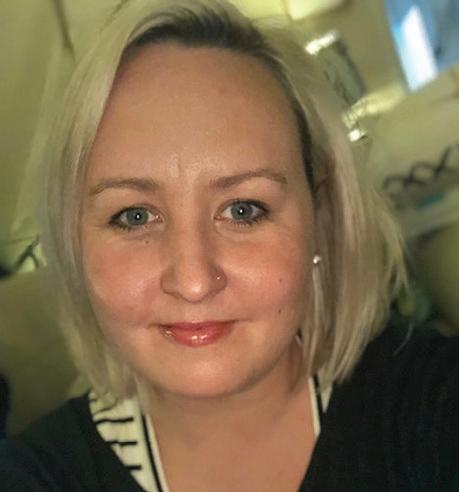
VERITY HARE WWW.TRADIEWIVES.COM.AU
PLAN FOR SUCCESS

KEEP AHEAD OF CASH FLOW ISSUES
As we find ourselves in yet another challenging period for the building and construction industry, it’s impossible to ignore the financial pressures that many businesses are currently facing.
I’m seeing so many posts in our community where businesses are really feeling the strain.
With increased scrutiny from the ATO and widespread cash flow issues, the road ahead may seem daunting.
However, history has shown us that this industry is nothing if not resilient.
Over the past few years, especially since the onset of COVID-19, we have faced numerous obstacles and emerged stronger every time.
As we enter a new financial year, it presents a unique opportunity to pivot from these challenges and embrace strategies that will set us up for success.
One of the most impactful steps we can take is to thoroughly reassess our cash flow management.
By identifying areas where we can improve efficiency and cut unnecessary costs, we can create a more stable financial foundation.
In addition, establishing a solid budget that anticipates potential challenges can be invaluable.
It’s also wise to seek the guidance of financial advisors who can offer expert insights tailored to our unique circumstances.
Beyond financial planning, investing in professional development ensures that our skills remain sharp and up to date with industry trends, helping us stay competitive and innovative.
By taking these proactive steps, we can approach the new financial year with a renewed sense of purpose and confidence.
Together, we can build a brighter, more resilient future for our industry.
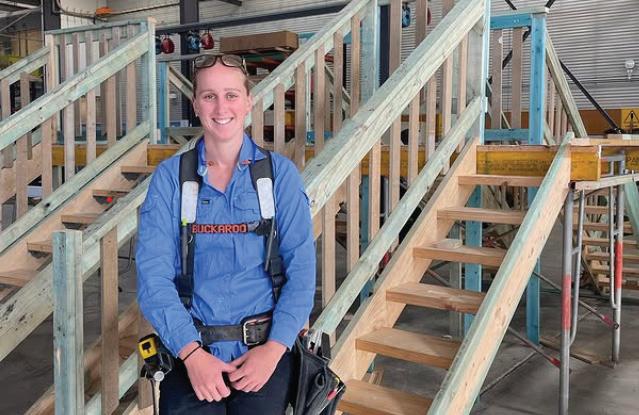
@tazthechippychick
Tazmin
Carpenter, Chippy, 23, South Coast
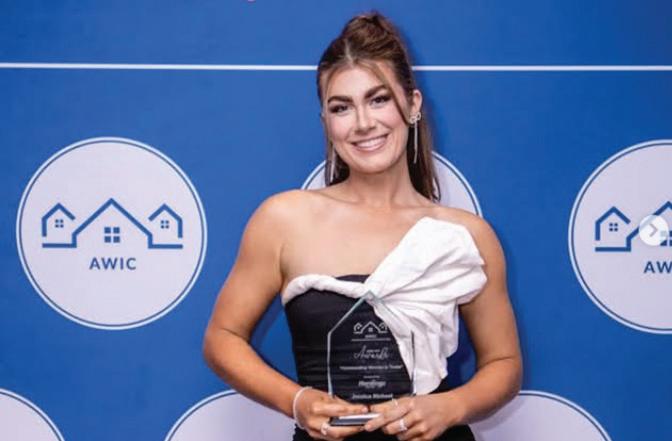
@tradeswomen_jess
Jessica Bichsel
Construction Company
Qualified Carpenter | Model @jessica_bichsel
Ambassador for @awic_au
2024 Outstanding Women in Trade

@sparky__chick
Jas Connor Apprentice Sparky — 3rd yr
Brisbane
Just a gal who loves her job
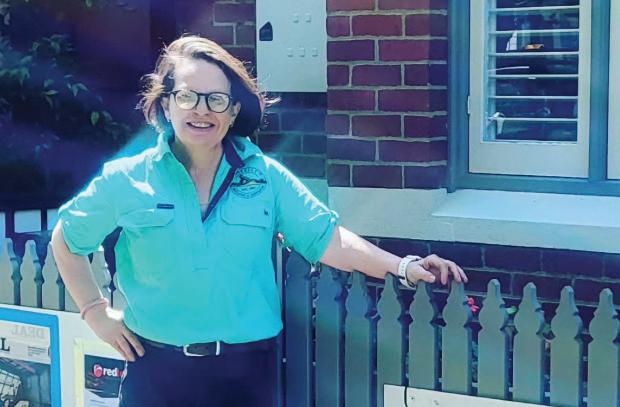
@marciechippie
Marcelle Bâgu.
Marcelle’s Building & Carpentry Pty Ltd
Master Builder & Qualified Carpenter in Melbourne specialising in renovations, extensions & heritage projects. 21 years in the industry.

@diary_of_a_construction_chick
Construction Chick’s Diary
I have been working in construction for 15 years now, in various roles such as CA, Jnr Project Manager, Client Side PM & Construction Project Manager
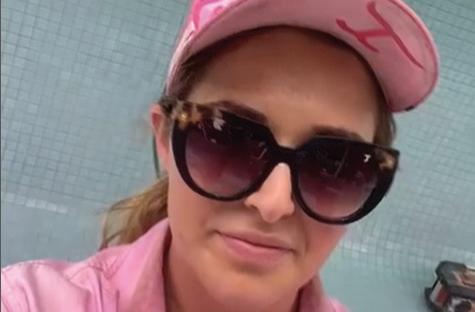
@pink_tradie_ladie
Pink Tradie Ladie
My names Zarah, I build pools with @cnh_contracting
Tradie Lady, Pink is my vibe.
Mornington Penisula
SEPT-MAY

UNSW SYDNEY OPEN DAY KENSINGTON & PADDINGTON CAMPUSES
DATE: Saturday, September 6, 2025 from 9am to 4pm
WHERE: UNSW Sydney — Kensington and Paddington campuses
WHAT: Are you interested in studiyng construction management? Discover the progress you can make at UNSW Open Day 2025. Whether you’re starting uni soon, considering postgrad, or just curious — you’ll find your unique path to uni and learn how you could drive progress as one of Australia’s most employable graduates. Explore your study options, tour our buzzing campuses, enjoy the free food — you’ll get expert advice and have fun while you’re at it. Go to https://www. openday.unsw.edu.au/ to register your attendance.
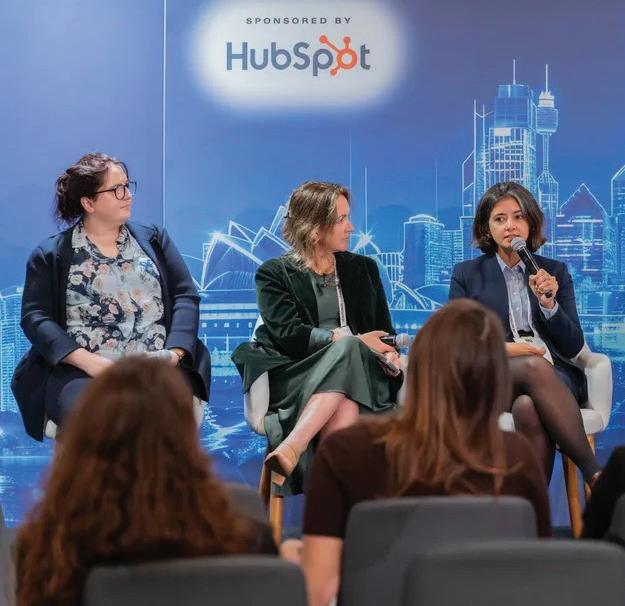
ADULT APPRENTICESHIP COMMENCEMENT TRAINING PROGRAM
DATE: March 9 to March 20, 2026
WHERE: Master Builders Education Centre, 5 Burbank Place, Norwest
WHAT: Master Builders is the heart of the building industry. We are here to help you become a quality apprentice or trainee. There has never been a better time to start or continue your apprenticeship or traineeship. Are you over 21? Do you want to kick start your career in building and construction with a carpentry apprenticeship? You’ve come to the right place.
If your over 21, you might be eligible for our accelerated Adult Apprenticeship Commencement Program. Go to https:// www.mbaapprenticeship.com.au/adultapprenticeship/ to register your interest.
WOMEN IN LEADERSHIP SUMMIT 2025
DATE: October 28 to 31, 2025
WHERE: InterContinental Sydney, Double Bay — 33 Cross St, Double Bay
WHAT: Empowering Voices, Inspiring Leaders. Join the for the ninth annual Women in Leadership Summit in Sydney 2025. Back in Sydney for another unmissable year of inspiration, connection and action. The Women in Leadership Summit 2025 is your opportunity to reflect on how far you’ve come and focus on where you still need to go.
This summit is for women ready to step up, speak out and lead with confidence, purpose and authenticity. Join a community of changemakers as we tackle the persistent challenges in the workplace and celebrate the growing impact of women in leadership across every sector.



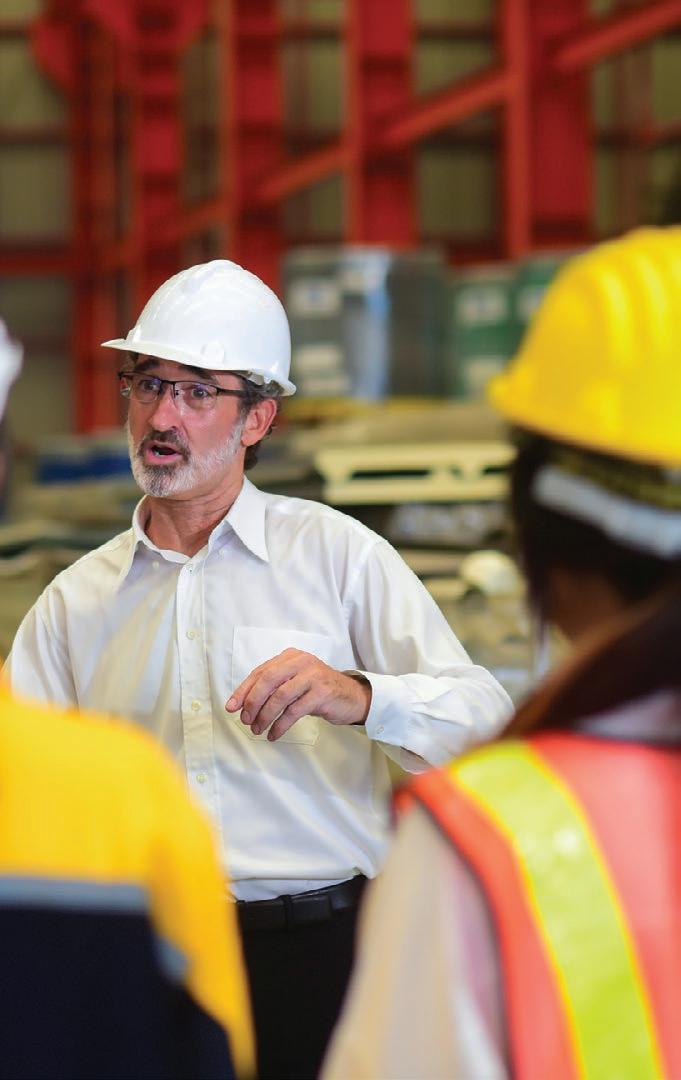

SYDNEY BUILD 2026
DATE: April 29-30
WHERE: ICC Sydney
WHAT: Get ready for the biggest construction event of the year! Sydney Build Expo 2026 will return once again to the ICC. With more than 25,000 attendees, 600+ exhibitors, and 550+ industry-leading speakers, this is the place to be for anyone in the construction industry.
Step into a world of innovation and expertise as you explore two levels of cutting-edge technology, groundbreaking products, and revolutionary ideas. From construction materials to machinery; from sustainable solutions to the latest trends in architecture - you’ll find it all under one roof.
But it’s not just about business - Sydney Build Expo 2026 offers a unique blend of entertainment, networking events, and opportunities to earn CPD points. Connect with like-minded professionals, forge new partnerships, and stay ahead of the curve with the latest industry insights.
PHOTO CREDIT: Copyright © 2025 SIX84Photography

DATE: Friday, May 8, 2026
WHERE: The Eveleigh – Bay 3, 2 Locomotive St, Eveleigh from noon to 3.30pm
WHAT: FLORENCE celebrates the achievements of women and the importance of gender diversity in the construction industry. This luncheon connects, inspires and elevates women in construction. Learn more about our guest speaker, Julie Goodwin’s, life after she was thrust into the spotlight when she won the inaugural MasterChef title.
